Thinking about walking the famed Camino de Santiago pilgrimage route one day? What about the crossing of the Pyrenees at the beginning of the Camino Francés – does that prospect excite (or terrify) you? Want to know what it’s really like those first few days & how you can plan a perfect start to your Camino? Read on for answers…
What is the Camino de Santiago & Camino Francés
The Camino de Santiago is a series of ancient pilgrimage routes from all around Europe that lead to the city of Santiago de Compostela in northwest Spain. That’s where the bones of St. James, the Apostle (Spanish name – Santiago) lie in a crypt in Santiago’s magnificent Cathedral.
The most popular route is the 480-mile-long (780 km) Camino Francés. The traditional “French Way” starts in St. Jean Pied de Port, France in the foothills of the Pyrenees. The route crosses over the Pyrenees mountains before arriving 1-2 days later in Roncesvalles, Spain. The Camino then winds its way across northern Spain to eventually reach Santiago de Compostela.
My Camino Experience
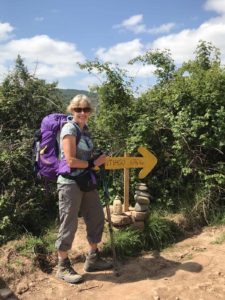
Each time, I walked as a “traditional” pilgrim, carrying my 20-pound backpack loaded with everything I needed. I went by myself, staying in pilgrim hostels along the way. Happily, as a “solo pilgrim” on the very social Camino Francés, you are never alone. Both Caminos were great experiences, which is why I’m planning my 3rd one!
Purpose of This Blog Post
I know that preparing for & walking one’s first Camino is a daunting experience. Not to mention, the Camino Francés’ first 1-2 days – the crossing of the Pyrenees – is the most physically challenging segment of the entire Camino. There’s absolutely no opportunity to acclimate your body before hitting those big hills!
Thus, I really prepared (both physically & mentally) for my 2nd Camino, which started in St. Jean. Luckily, I had gotten valuable advice from experienced pilgrim friends for where to stay & what to do on those first few days. Dutifully, I followed their recommendations – and were they ever perfectly spot on!
So, I want to share that great advice – along with my own personal experiences – to help you plan a perfect start to your Camino Francés. This “ideal plan” (from St. Jean to Pamplona) will help you more quickly adjust to pilgrim life and make some good Camino friends. And, I promise that your body will thank you & me for breaking up the Pyrenees crossing into two days!
The Physical Challenge of Crossing the Pyrenees
From St. Jean Pied de Port, the Camino’s steep and arduous Napoleon Route crosses over the Pyrenees into Spain. It’s an exhausting, but exceedingly beautiful 25-kilometer (15.5 miles) walk from St. Jean to Roncesvalles.
On the Napoleon route, the highest peak sits at 1,450 meters (4,750 ft). It doesn’t sound like much until you realize St. Jean lies at only 170 meters. Thus, the elevation gain on the walk/hike is a whopping 1,300 meters (~ 4,200 ft.). Plus, the last part is capped off by a steep 500-meter downhill into Roncesvalles. Sigh…
Most pilgrims walk from St. Jean to Roncesvalles in one long, grueling day. To me, this is the ultimate “Baptism by the Pyrenees Fire!” However, there is another option, which is doing the Pyrenees Crossing over 2 days with an overnight in Orisson. That is what I did – and boy, was that ever a smart move!
My Ideal Plan for Your Camino Francés Start
- Day 1 – Arrive St. Jean Pied de Port, France. Allow time to visit the Pilgrim Office & explore the cute town. Spend the night at Refuge Beilari.
- Day 2 – Start your Camino! Walk St. Jean to Orisson (8 km/5 miles). Break up the strenuous Pyrenees crossing with an overnight at Refuge Orisson.
- Day 3 – Walk Orisson to Roncesvalles (17 km/10.5 miles) – spend night at Albergue Colegiata.
- Day 4 – Walk Roncesvalles to Zubiri (22 km/13.7 miles) – spend night at El Palo de Avellano.
- Day 5 – Walk Zubiri to Pamplona (21 km/13 miles) – spend 1–2 nights in this great town.
- Day 6 – Pamplona vs. Puente La Reina – a choice of options.
How I Can Help You
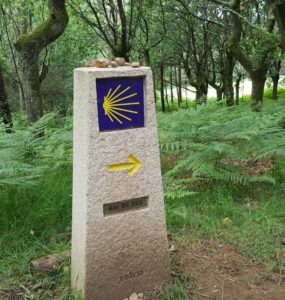
At the bottom, a Resource section will give you specifics on the lodging that I did (and highly recommend), with links to their website and how to reserve ahead. Unlike other parts of the Camino, advance reservations are recommended for this popular section of the Camino.
Plus, there is even a courier service (Express Bourricot) which can transport your backpack ahead if you’d rather not carry your full pack over the Pyrenees – and just carry a day pack.
Day 1 – Arrival Into St. Jean Pied de Port
St. Jean Pied de Port is a charming French town (population 1,800), nestled in the foothills of the Pyrenees in Basque country. In case you wondered, “pied de port” means “foot of the pass.” There are a few different ways to get to St. Jean – either from Spain or France (see Resource list). Like many pilgrims, I arrived from Pamplona, taking the afternoon Conde Bus on a beautiful 1 ¾ hour ride.
The bus was filled with excited (and nervous!) pilgrims, and I chatted much of the way with Marcello from Germany. I also met Americans Ben & Maria on the bus. It turned out that all three became good Camino friends with whom I spent a lot of time over the next couple weeks (photo, below right).
Arriving in St. Jean at 4:15pm, I headed off with my new friends & our loaded backpacks to find our night’s lodging. I had reserved a bed at Beilari, a lovely pilgrim hostel on Rue de la Citadelle, the historic main street (above left) in the old town area. My friend Amanda had recommended Beilari, because of its great location and wonderful communal dinner where you can meet lots of fellow pilgrims.
I checked into the hostel and was shown to my 4-bed dorm room. Beilari is housed in a centuries-old typical Basque home with beautiful wooden floors. It has four simple yet comfortable rooms with a total of 14 beds for pilgrims. It cost me a total of 33 euros for lodging, dinner and breakfast.
I quickly unpacked and headed across the street (literally!) to the acclaimed St. Jean Pilgrim Office. It was abuzz with activity and filled with newbie pilgrims beginning their Camino tomorrow, just like me! I waited my turn to sit down at one of the desks to speak to Bari, an English-speaking hospitalera (Camino volunteer).
She welcomed me & put the first stamp in my pilgrim passport (“credencial”). Bari gave me a map of the Pyrenees route from St. Jean to Roncesvalles and went over it in detail. She also gave me an update on the weather, which the Pilgrim Office monitors closely. She told me tomorrow’s forecast (May 10th) would be no rain, but misty & very windy.
I then headed out to explore St. Jean for an hour before heading back for dinner. The town has a lovely international vibe. Its old section is filled with pilgrims, hostels and pensions, pilgrim shops, cafes and restaurants. A beautiful stream runs through town and it’s surrounded by the lush Basque landscape.
Beilari Communal Dinner
Beilari’s communal dinner at 7:30pm was a pure delight! Out on the covered patio, we 21 pilgrims were welcomed by Joseph, the hostel’s charming owner. Even though we were technically in France, the conversations were all in English – which is the universal language of the Camino (because of so many pilgrim nationalities!).
We started with drinks and “icebreaker introductions.” When it was their turn, each pilgrim gave their name, home country, and a word or phrase that described how they felt. Mine was “Gratitude” – gratitude for being able to return for my 2nd Camino. We then enjoyed a delicious home-cooked meal before heading to our rooms around 9:30pm to prepare for our big day tomorrow.
You might be interested to learn that my fellow pilgrims at dinner were from the U.S., Canada, France, Spain, UK, Netherlands, Hungary, South Africa, New Zealand, Brazil, and Columbia. Yep, a virtual United Nations – that’s the Camino Francés!
Day 2 – St. Jean to Orisson (8 km/5 miles)
The big day had finally arrived – Day #1 of walking the Camino! Breakfast was served at Beilari from 6:30-7:30am, offering cereal, breads and coffee & jam. The pilgrims doing the “all-in-1-day” Pyrenees crossing were getting an early start. Not me, since I was on the 2-day Pyrenees plan & only had to walk a very short 8 km / 5 mile distance today.
Bidding goodbye to the Beilari staff around 8am, I headed across to the Pilgrim Office one more time with my new South African friends Jolien and Elna (above). The office had a big scale where you could weigh your fully loaded backpack. Luckily, mine was safely under 10 kg (22 pounds), but Jolien’s not so much!
The three of us ladies finally left St. Jean at 8:30am on a pleasant but overcast day. The majority of the walk to Orisson was along quiet country roads through lush green Basque countryside & rolling hills, dotted with farms & peaceful grazing cows.
One section of the path did head off on a dirt trail (muddy in parts from lots of rain the week prior) before returning back to the road. Even though the walk today was relatively short, there were some steep uphill climbs. That’s because the St. Jean to Orisson route measures less than 1/3 of the total distance to Roncesvalles, but it has half of the elevation gain. Thus, shorter but steeper!
About a half hour before arriving at the small French hamlet of Orisson, a heavy mist with light sprinkles began to roll in – which turned into rain a little later on. We arrived at Refuge Orisson, our lodging, at 11:15am. The walk had taken less than 3 hours, including a short stop in Hunto. I was really glad to be stopping – and felt sorry for the many pilgrims continuing up & over the Pyrenees in the misty, increasingly wet weather.
- Refuge Orisson on our misty arrival day
- Refuge Orisson – the next day in clear weather
Refuge Orisson
Refuge Orisson is the last lodging option before Roncesvalles, so it’s a very popular place. They only have room for 28 “lucky” pilgrims each night, which is why I booked way in advance to make sure I had a bed. The booking includes room and half board (dinner & breakfast). My cost was 36 euros – it’s now 38. They also operate a simpler “overflow” refuge (Gite Kayola) one kilometer down the hill which houses 12 people.
We headed inside to the Café/dining room/lounge area of Refuge Orisson. (FYI: refuge is the French equivalent of hostel, like albergue in Spain). We checked in with a friendly woman, who told us our rooms would not be ready until around 1pm. No problem – we were inside, warm and dry – and hungry again! So, I ordered a Spanish (potato) omelette, a fresh squeezed orange juice and a coffee.
Soon the room was ready, so I headed upstairs with my backpack to the dorm area, which sat above the café/dining room. My particular room had 3 bunk beds for 6 people. After unpacking, I headed for a nice warm shower. Then 4 of us girls combined our dirty laundry into one load in the refuge’s one washer & dryer.
It was a lovely, peaceful afternoon inside the cozy Café, chatting with old friends & making new ones, plus catching up on my journal. Other folks enjoyed a well-deserved nap upstairs in their bunks, as they were pretty wiped out by the day’s steep hills.
Just like Beilari, another beloved feature of Refuge Orisson is their communal dinner, which is held at 6:30pm. I sat at a table with some South Korean & Japanese pilgrims who were a delight. In fact, the Camino Francés attracts many Asian pilgrims, especially Koreans. There were around 40 people at dinner – the 28 from Orisson & the rest from Gite Kayola.
At dinner, Orisson’s gracious owner Jean Jacques gave his welcome. Then we went around the room for introductions. Besides name & country, we each gave our reason of why we were walking the Camino. The stories were fascinating, and some were incredibly poignant.
I was delighted to see that many of my new pilgrim friends from St. Jean & Beilari were there at Orisson, including Marcello. Truly, some of my closest friends of the entire Camino came from those first two days including Orisson.
Day 3 – Orisson to Roncesvalles (17 km/10.5 miles)
I awoke to a gorgeous sunrise at 6:45am with clear skies. My prayers had indeed been answered! This big Pyrenees crossing day was the one Camino day where I had been praying hard for good weather. That’s because the Pyrenees are notorious for rapidly changing & potentially nasty weather. Plus, I wanted clear skies, not fog, for my Pyrenees photos.
- Awakening to clear skies & a beautiful sunrise
- View back at Refuge Orisson as I walked up the hill
After breakfast at Orisson (the usual Camino continental), I was ready to depart – and at 8:20am, I was one of the last to leave. I picked up the ham sandwich I had ordered the night before to take for the road, since there are NO services along the way – except for one food truck part way up. That includes no bathrooms except nature’s own!
I headed off on my own, reveling in the beautiful scenery & gorgeous picture-perfect weather! The path continued for quite a while on the country road, as I climbed higher. There were less trees but lush pastures with cows, horses and sheep grazing. In certain areas, the wind was really strong, so I was glad to have a fleece head band to keep my ears warm.
Of course, I made a stop at the food truck (at around 10:50am) to get some snacks & chat with the friendly local man who was there every day (during the season) to feed the parade of passing pilgrims.
The steepness was more gradual now. Around 11:30am, the Camino path left the road behind altogether and headed up the hill on a dirt trail. The path then traveled along a beautiful forest of bushy trees (below right).
- Where the Napolean route leaves the road
- View back down from the hill to the road
Around noon, I stopped at the Fountain of Rolando (below) to fill up my water bottle. It was here where we crossed the non-descript border into Spain.
There were more beautiful forests to walk through before passing a stone refuge hut (below right) – Izandorre – a popular resting place for pilgrims. Without a doubt, the hut is a lifesaving one during a bad storm!
At 1:45pm, I reached the highest point of the trail (below left) – Col de Loepeder – and from here it was all downhill. Per the Pilgrim Office, there are 2 choices down to Roncesvalles at this point. Because of the wet weather and mud, they had recommended not going thru the Bosque (forest) & taking the road. Well, I missed the turn, and ended up on the Bosque route after all, but I made it down safely!
Arrival Into Roncesvalles – Albergue Collegiata
At 3:15pm, I triumphantly walked into Roncesvalles (above right). This tiny Spanish hamlet (population 30!) is centered around a medieval monastery – and is focused on the daily care and feeding of its many in-transit pilgrims. I immediately headed to the Albergue Collegiata, the large pilgrim hostel where I had made a reservation.
This legendary albergue is housed in an 11th century abbey. In the past, it was simple pilgrim hostel with 100 beds in the basement. Around 2009, the facility was renovated, turning it into a beautiful new albergue with modern facilities. This includes 3 floors of dorm space, with cubicles of 2 bunk beds for 4 pilgrims.
- (left) Map of Roncesvalles hamlet / (right) – Albergue courtyard
The hostel is efficiently run by a Dutch pilgrim association. The staff of hospitaleros are all volunteers from the Netherlands, doing 15-day stints. One friendly hospitalero told me that they can house around 320 pilgrims each night. That likely includes the 100-bed overflow area in the basement, which isn’t quite so modern but still better than sleeping outside!
- Waiting to enter reception for check-in
- My 4-bed, 2-bunk cubicle
Arriving at the Albergue Collegiata, there were crowds of pilgrims waiting to be checked in. Hospitaleros were handing out color coded necklace badges, as people arrived. So, you needed to wait until your color was called – and then you could head into the office to check in and get your bed assignment. My wait was around 45 minutes. But I’ve heard it could be longer – up to 1-2 hours.
I finally checked in at 4:10pm, where they had my prepaid reservation. I had bought the full package – lodging plus dinner & breakfast – for a total of 26 euros (room was 12 euros). My bed assignment was #153 on the first floor (one level above). First, it was dirty boots to the “boot room,” then upstairs to unpack and shower. Each 2-bunk cubicle area has individual lockers with a key for each pilgrim.
Before dinner, I explored the massive albergue which has a kitchen & dining area – for those who want to self-cook (not me!) – plus a library and laundry area in the basement. The albergue itself doesn’t serve meals but sends pilgrims to the two nearby restaurants – Casa Sabina (above) & Casa Posada.
My 7pm reservation was for Casa Sabina, where I sat with Sandra & Helen (both from the UK) and Anna from Sweden. We quickly ate our 3-course pilgrim meal because we were looking forward to attending our first Camino pilgrim mass that evening. I’m not Catholic, but these masses are still a wonderful part of the pilgrim experience.
Each evening in Roncesvalles, a Pilgrim Blessing & Eucharist is held at 8:00pm in the lovely Gothic church of the old abbey. The holy mass was given by the abbey’s 3 resident monks and lasted 35-40 minutes. In the past, I learned that there were around 1,000 monks in residence at the abbey. Impressive!
After mass, we returned to the albergue to prepare for bed. We had been told the lights go out promptly at 10pm in the whole dorm area and don’t come back on until 6:00am the next morning. The Dutch run a tight ship! So, you better make sure you’re ready with your flashlight when everything goes dark if you’re still up and about.
Day 4 – Roncesvalles to Zubiri – 22 km/13.7 miles
Yep, the next morning, the lights came on right at 6:00am. After packing my backpack, I headed out to breakfast at Casa Sabina. Afterwards, I made a quick visit to Casa Posada where parts of Martin Sheen’s wonderful movie “The Way” were filmed. I left Roncesvalles at 8:00am, bound for Zubiri.
Immediately, I made the requisite pilgrim stop for a photo at the famous signpost saying “790km to Santiago”! The day was already foggy and misty with rain expected. But the scenery was beautiful, first passing through woods with often muddy paths. After Burguete, we headed out on trails through farmland and pastures with cows, horses and sheep.
By mid-morning, it really started to rain so I put on my full-strength rain gear. The Camino continued to pass through small charming Basque towns and wooded forests. The final 3.5 km walk into Zubiri was a tough downhill with muddy trails and slippery slate rock paths. However, slow but sure is the name of the Camino game & I was very glad I had hiking poles.
So, it was a great relief to finally reach Zubiri at 3pm and cross over the beautiful medieval stone bridge to reach my pilgrim hostel – El Palo de Avellano. This private albergue had been recommended by my UK pilgrim friend Camila and it’s a real gem!
- First view of Zubiri from the trail – we’re close!
- The old stone bridge leading into Zubiri
I checked in with Itziar, the albergue’s lovely owner. I paid 29 euros (16 for the room with breakfast & 13 for dinner). I received a key card to my female dorm room upstairs (below right) which contained 3 bunk beds and 3 single beds and its own very nice bathroom. As a pilgrim, you really appreciate good bathrooms!
It was a fun reunion as some of my pilgrim friends (Helen, Sandra, Greg & Peggy) had also reserved here at El Palo. It had been a rainy, drizzly day so we were all ready to be dry & cozy. There was a nice lounge area where we could hang out. Plus, I had reserved dinner at the hostel, so I didn’t have to go out.
I had requested the 7:00pm dinner reservation. The albergue also offers a second seating at 8:30pm. At dinner, there were two tables of 10 people each. Again, it was a fun & fascinating mix of pilgrims – from Spain, Germany, Belgium, France, and the US. The meal itself was delicious & very gourmet. When you reserve a room at El Palo de Avellano, the dinner is an optional choice – so be sure not to miss it! (photo above of breakfast)
Day 5 – Zubiri to Pamplona – 21km/13 miles
Today was another big day – filled with the anticipation of reaching the magnificent town of Pamplona. After a nice breakfast at the hostel, I departed Zubiri at 8:30am. It was another pretty walk with more forest paths and a few small villages. It wasn’t actively raining today but some paths were still wet & muddy.
I loved my mid-day stop in Zuriain at the cute Café la Parada (below, left). It was filled with pilgrims enjoying a leisurely rest along the river. I ate tasty food (spinach quiche!), watched hens & a rooster running around the yard, with a sweet kitten happily napping on the lap of a pilgrim.
I departed with three newly made Australian girlfriends. We soon took a short “green route” detour to the village of Zabaldika to visit the Church of St. Esteban (below). A lovely sister of Sacred Heart put a special stamp in our pilgrim passport & directed the Aussie gals up to the bell tower where they could ring the church bell!
- Church of St. Esteban in Zabaldika
- The lovely Sacred Heart sister who greeted us
Around 3pm, we were nearing the outskirts of Pamplona. Cecilia & I took the pretty riverside path into the city. However, the final walk through the modern city streets was a real slog. My body & feet were so tired at this point – I was ready to be done! So, it was a thrill to finally reach Pamplona’s beautiful stone city walls and walk through the arch into the old town where all the action is.
- The Puente Magdalena bridge in Pamplona’s outskirts
- I’m close – passing through Pamplona’s old stone gate
I arrived at my lovely pension – Hostal Arrizu – at 5pm. After staying in pilgrim hostels the past four nights, I was ready for the privacy of my own room – complete with a bed with sheets and my own bathroom with plush bath towels! This “hostal” (different from a pilgrim hostel) had a great location and delightful receptionist Edurne.
My friends Sandra & Helen were already at Arrizu. Because of the unusually wet weather, none of us had done laundry in 3 days & we were getting desperate! Luckily, Edurne directed me to a great nearby laundromat so I collected all the ladies’ dirty clothes & headed off. While waiting for the loads to finish, I enjoyed some delicious tapas at the bar next door.
After returning to the hostal, I went out with Sandra to a great tapas bar just down the street. Named “La Mandarra de la Ramos,” it had been recommended by Edurne. The food was very good, plus it was fun to “get a taste” of Pamplona’s popular tapas bar scene.
Day 6 – Pamplona Options for Pilgrims
Day #6 is a day where pilgrims have a variety of options. For those that want to keep walking, the next “full stage” (per the Brierly book) takes you from Pamplona to the pretty town of Puente La Reina (below right)– a distance of 24 km (15 miles). Along the way, you climb the famed “Alto de Perdon” hill with its life-sized bronze pilgrim statues at the top. (below left)
However, for me, I knew that was not gonna happen! The rigors of the first few days of the Camino – the Pyrenees crossing and the walking up & down many more hills of the Basque country in rainy weather & muddy trails – had finally caught up to me. My fatigued body was crying out for a rest day.
So, that’s just what I did. I slept in and enjoyed some Pamplona sightseeing in the morning (below). Then, in the early afternoon, I walked a short distance (5 km /3 miles) to the nearby town of Cizur Menor where I spent the night. The following day, I felt great and was roaring to go! I did the rest of the walk to Puente La Reina. It’s amazing what a little rest can do. As a pilgrim, it’s important to listen to your body!
So, what did my other pilgrim friends do on Day 6? Some continued to walk & went all the way to Puente La Reina. While others spent 2 nights in Pamplona so they could enjoy a full rest day and leisurely exploration of the town. And, my friend Helen joined me in Cizur Menor. That’s the Camino – always lots of options.
Exploring Pamplona
The beautiful town of Pamplona (population ~200,000) is a great place to enjoy & explore. Of course, Pamplona is well-known for its week-long festival of San Fermin – the Running of the Bulls (encierro). Popularized years ago by Ernest, the festival takes place in early July.
It’s fun to walk Pamplona’s narrow, old streets where the bulls – and crazy locals & tourists – actually make their daily festival run together en route to the large bull ring. In fact, you can actually tour the bull ring – which I did – and learn more about this “loco” tradition.
Pamplona also has a beautiful plaza and the historic Café Iruna (above right)– where Hemingway liked to hang out, and a bronze statue of him resides. There’s lots of cute restaurants & tapas bars and good shopping. I highly recommend spending a full day in Pamplona, if your schedule allows. I’ll be writing a future blog post on this delightful town, as there’s a lot more to share.
Buen Camino
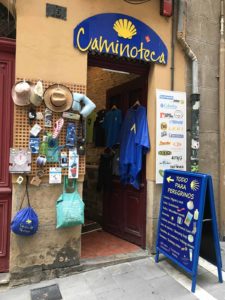
Yes, I know the Pyrenees crossing can seem daunting, but with the right amount of planning & resources listed below (plus good physical training ahead!), you’ll be prepared & enjoy the experience!
In addition, my past blog post entitled “Highlights of My Camino #2” tells you more about the whole Camino pilgrim experience – including the daily routine of a walker, the various pilgrim lodging (albergues), the food & the weather.
CAMINO RESOURCES – PILGRIM LODGING
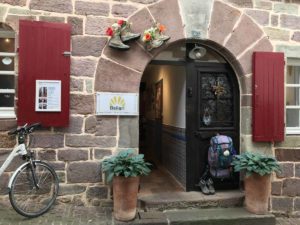
- Private pilgrim hostel formerly named “L’Esprit du Chemin”
- Informative Website
- Website Reservations Page
- 2020 cost – half pension (stay + dinner + breakfast) = 37 euros
- They allow a 2-night stay unlike most pilgrim hostels
Orisson – Refuge Orisson
This private pilgrim hostel has 28 beds
- Website Page
- Reservation Page
- Refuge Orisson is open April to October – be sure to reserve well in advance
- 2020 Cost = 38 euros (half board – lodging, evening meal & breakfast)
- You can book online – you will get a return email from Jean Jacques with confirmation.
- Website says they do not accept credit cards. However, I was sent a link to their Paypal page to pay in full.
Located Above Orisson – Auberge Borda
- Update – November 2021
- Apparently, a new lodging has opened up (in 2020/21) on the St. Jean to Roncesvalles route
- It’s located 900 meters above Refuge Orisson in a converted shepherd’s hut
- The Auberge Borda has 12 dormitory beds for pilgrims
- Booking.com page (they don’t currently make reservations but have photos/info)
- For more info about Auberge Borda, send email: aubergeborda@gmail.com
Roncesvalles – Albergue Collegiata
- This large (183+bed) pilgrim hostel is run by a Dutch pilgrim association
- Also called Albergue de Peregrinos de Orreaga – Roncesvalles
- General Website Page
- Reservations Page
- You can make advance reservations & prepay online, which I recommend.
- 2020 Costs – accommodation only = 12 euros
- Dinner – 11 euros / Breakfast – 3.5 euros
- Total package – accommodation, dinner & breakfast = 26.5 euros
- Hostel is open all year round – only 1-night stays are allowed.
- This albergue is known for NOT providing blankets. So, it’s important to have a dry sleeping bag for warmth. That’s especially true if you arrive chilled from a wet Pyrenees crossing.
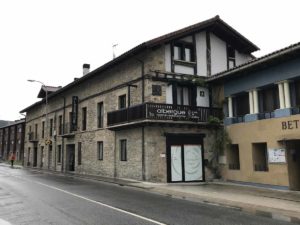
- This delightful private albergue is run by owner Itziar.
- General Website
- 2020 Costs – dorm room accommodations run 16-18 euros (includes breakfast)
- Dinner – 13.50 euros
- You can book online to reserve a bed. The reservation does not require advance payment. You pay when you arrive at the albergue.
- However, they may only hold the reservation until 3pm. So, if you’re running late, you need to call them, so they’ll know you are still coming, so they will hold the bed.
Pamplona – Lots of Accommodation Choices
Pamplona is a popular pilgrim & tourist city with the full range of lodging – albergues to pensiones to hotels in all price ranges.
- Hostal Arriazu (pensione) – where I stayed (as mentioned)
- My May 2018 price for a single was 49 euros (no breakfast)
- 2020 price in May – looks around $74-80 USD
- Sercotel Hotel Europa – I stayed here just before I started my 2018 Camino
- A lovely hotel with a great location near Plaza del Castillo
- My 2018 price was 74 euros (for single) which included an excellent breakfast
- I booked both lodgings through Booking.com – often your best bet for finding a place to stay!
OTHER PILGRIM RESOURCES & TIPS
How to Get to St. Jean Pied de Port, France
- There is no airport in St. Jean Pied de Port so arrival is by train, bus, car or taxi.
- Some pilgrims fly into Biarritz & take an airport coach to nearby Bayonne (1/2 hour ride). From Bayonne, you can take a train to St. Jean 3-4x/day (takes ~1 hour)
- From US or Canada, flying into Paris or Madrid or Barcelona offers the possibility of good onward connections.
- Beilari’s Helpful Website Page – about getting to St. Jean
- You can also use the excellent Rome2Rio website for research of all your different options.
- In 2018, I flew into Barcelona to tour first. Then I took a train (4 hours) from Barcelona to Pamplona, where I spent the night. The next day, I took the Conde Bus to St. Jean (1 ¾ hours).
Backpack Courier Service in St. Jean – Express Bourricot
This reliable courier service can transport your backpack ahead if you’d rather not carry a full pack over the Pyrenees – and just carry a day pack.
- Express Bourricot Website
- They transport bags (backpacks & suitcases) once daily between St. Jean and Roncesvalles (with stops at main points along the way – like Orisson)
- Their office is in St. Jean Pied de Port – on the main street near the Pilgrim Office.
- They also offer a “pilgrim transport” service for pilgrims who want to break up the Pyrenees crossing into 2 days (like me!), but who can’t stay (lodging full) or don’t want to stay at Refuge Orisson.
- They offer daily transport between St. Jean & a half-way point of the walk – both delivery and pickup. This way, pilgrims can spend the night back in St. Jean after day #1. The next day, they are taken back up to the Virgen of Orisson (half-way point) in the morning to complete the rest of the walk to Roncesvalles.
Crossing the Pyrenees – Be Prepared Clothing & Rain Gear Wise
- You must prepare for all types of weather. The Pyrenees are notorious for rapidly changing and potentially nasty weather – possibly rain, strong winds, even snow!
- I crossed the Pyrenees (my Day #2 – Orisson to Roncesvalles) on May 11th in clear weather – but it was very windy in parts.
- However, the next day, it rained & hailed (May 12th) in the Pyrenees and on May 13th, it snowed! (check out the photo of my Dutch pilgrim friend Leny)
- Make sure you have warm clothing (including hats & gloves) plus quality rain gear with you in your daypack/backpack.
- Be sure to have a good rain cover for your backpack (or that it’s solidly covered by a good poncho).
- To be extra safe, line your backpack with a large trash bag (to keep your clothes dry inside).
- Also, put your sleeping bag inside a smaller trash bag to keep it dry. Life will be miserable if you end up with a wet sleeping bag!
My Camino Guidebook Recommendation
- My favorite Camino guidebook (and that of a majority of English-speaking pilgrims) is by John Brierley entitled: A Pilgrim’s Guide to the Camino de Santiago (Camino Francés). Make sure you always buy the latest edition.
COMMENTS: So, what do you think? Are you planning to walk the Camino Frances & start in St. Jean? Are you excited or nervous? Have you already done the Pyrenees crossing? Any additional hints to share?

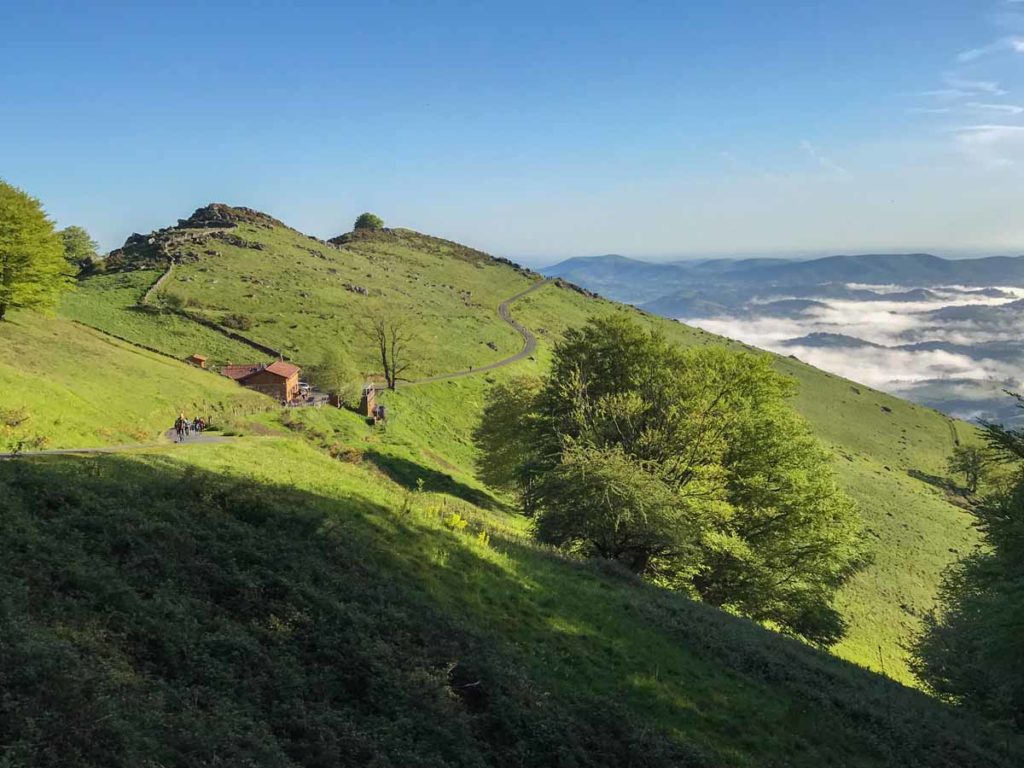
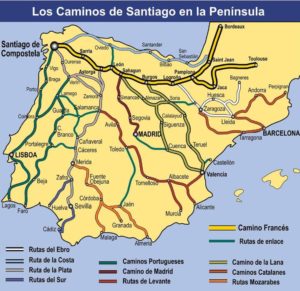
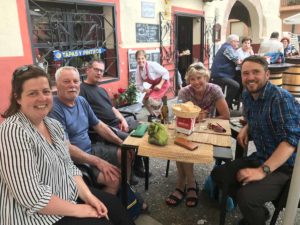
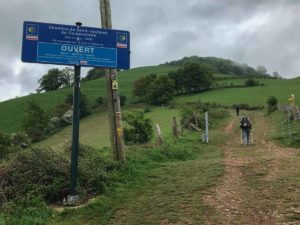
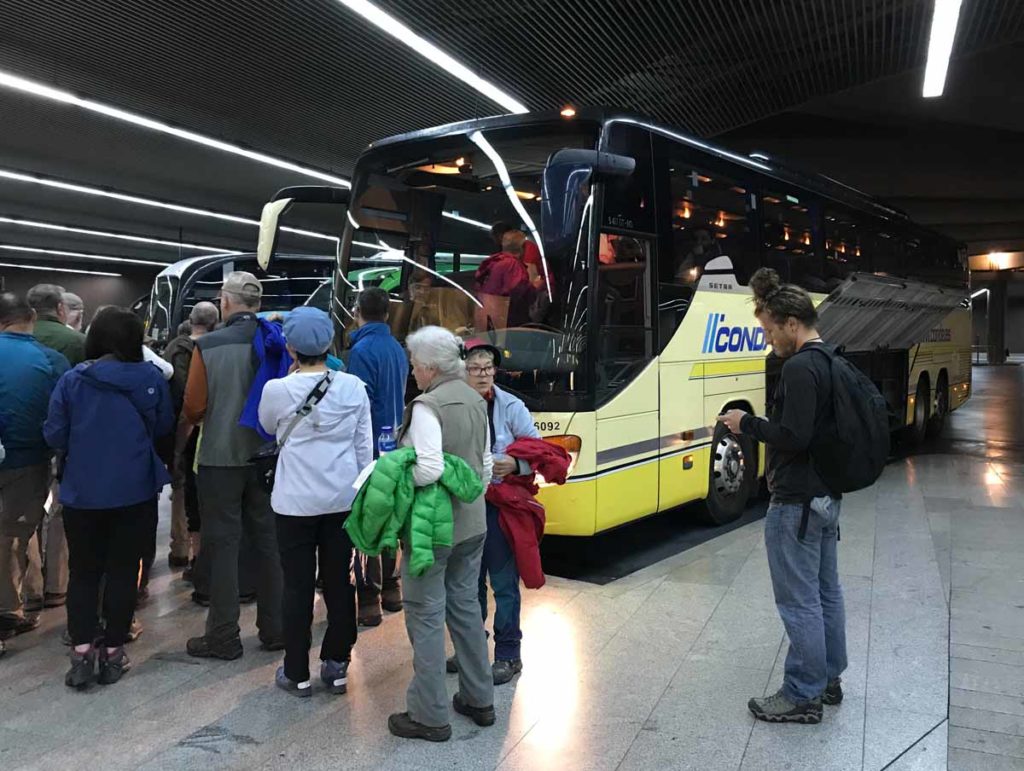
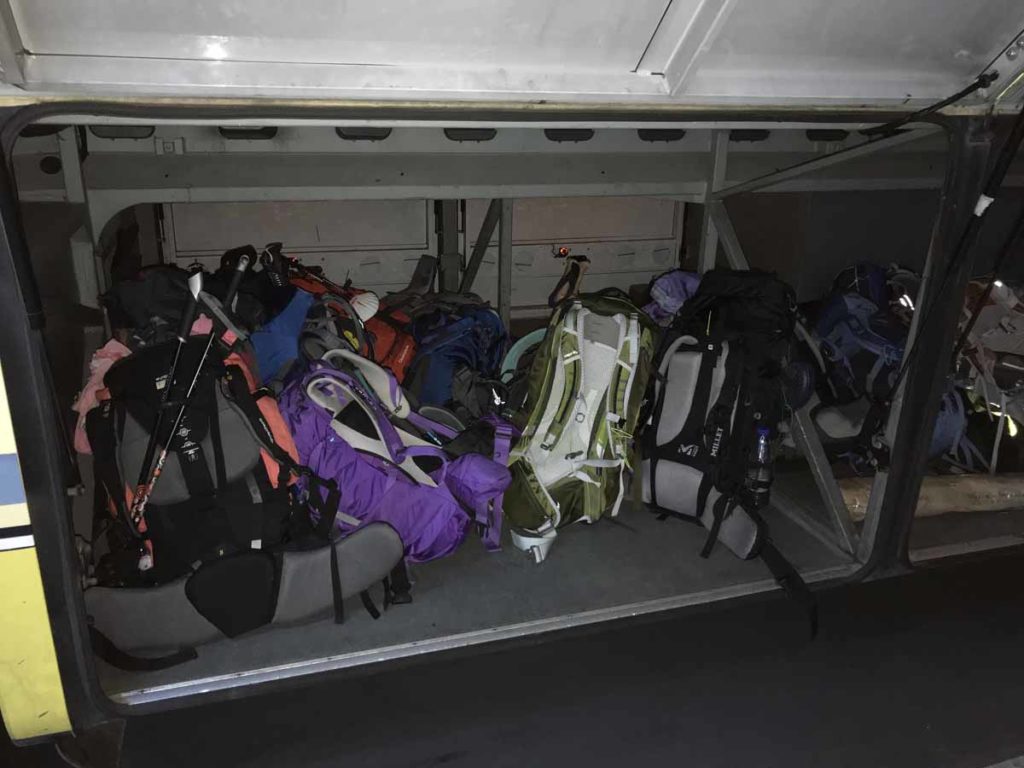
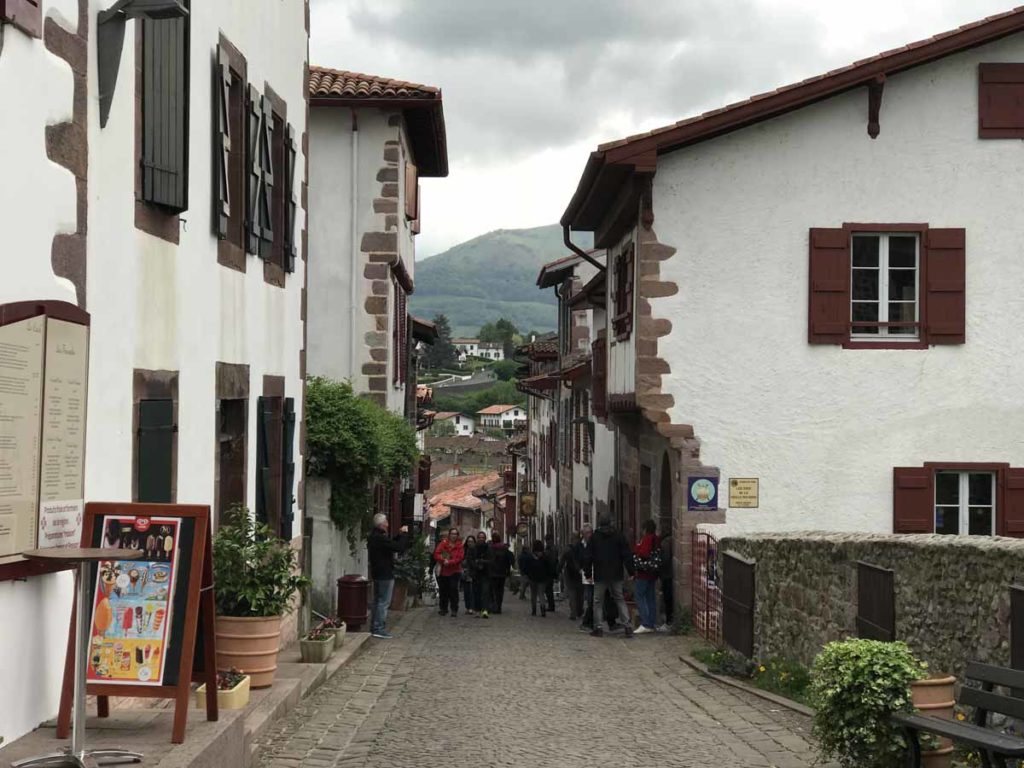
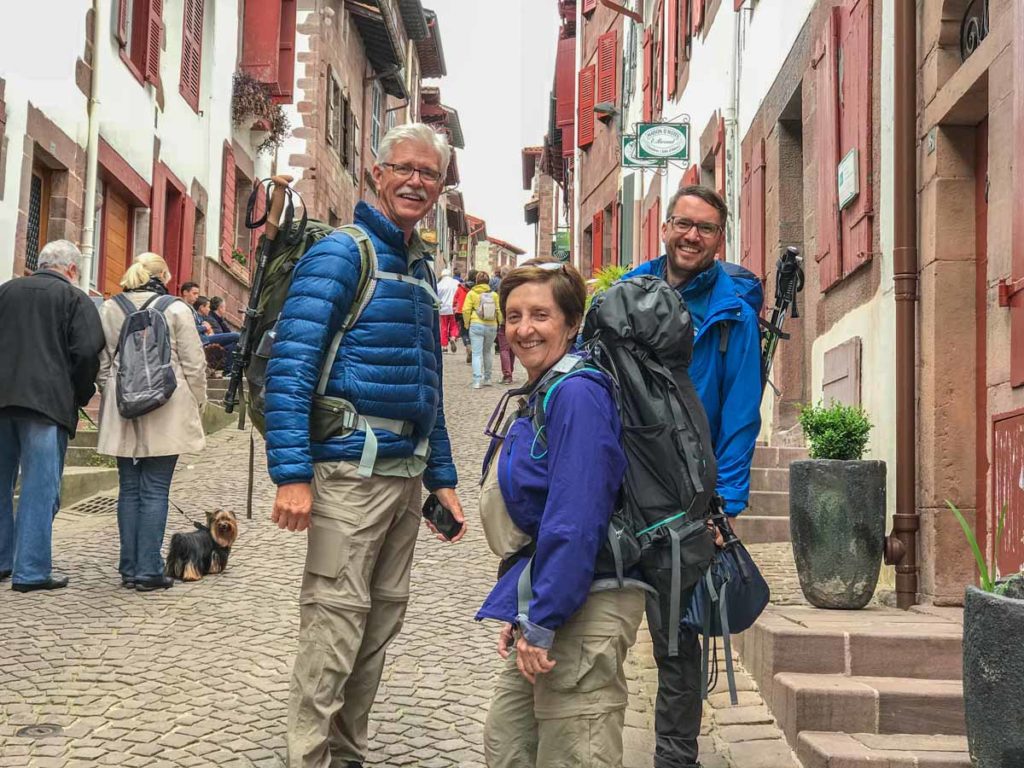
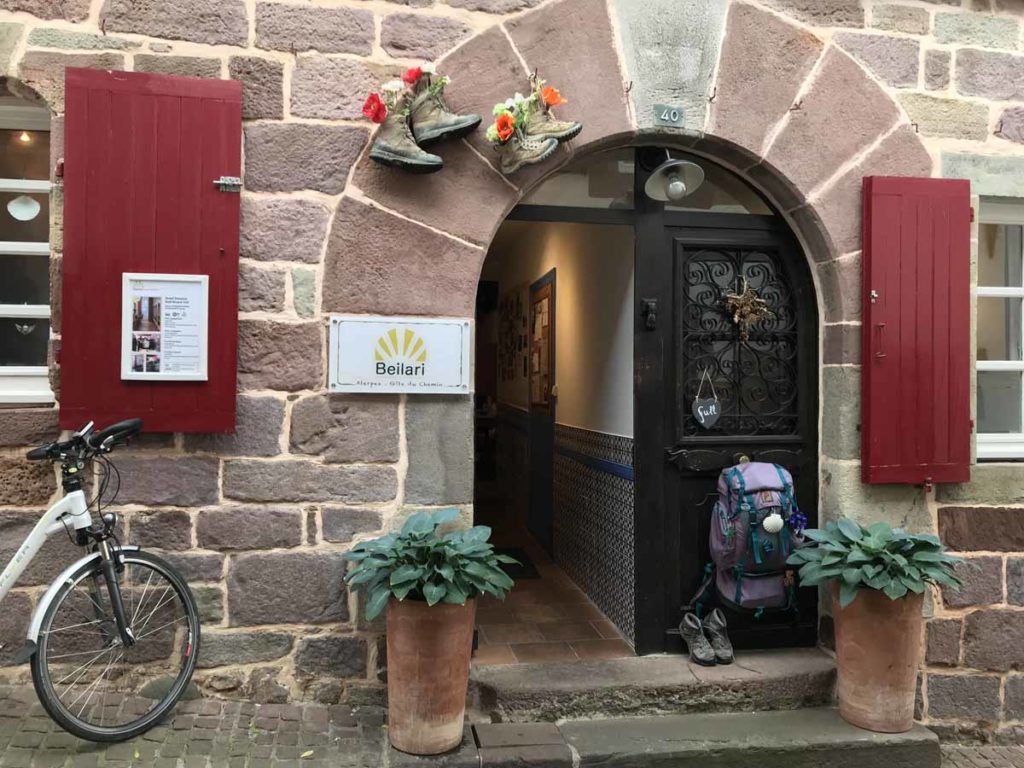
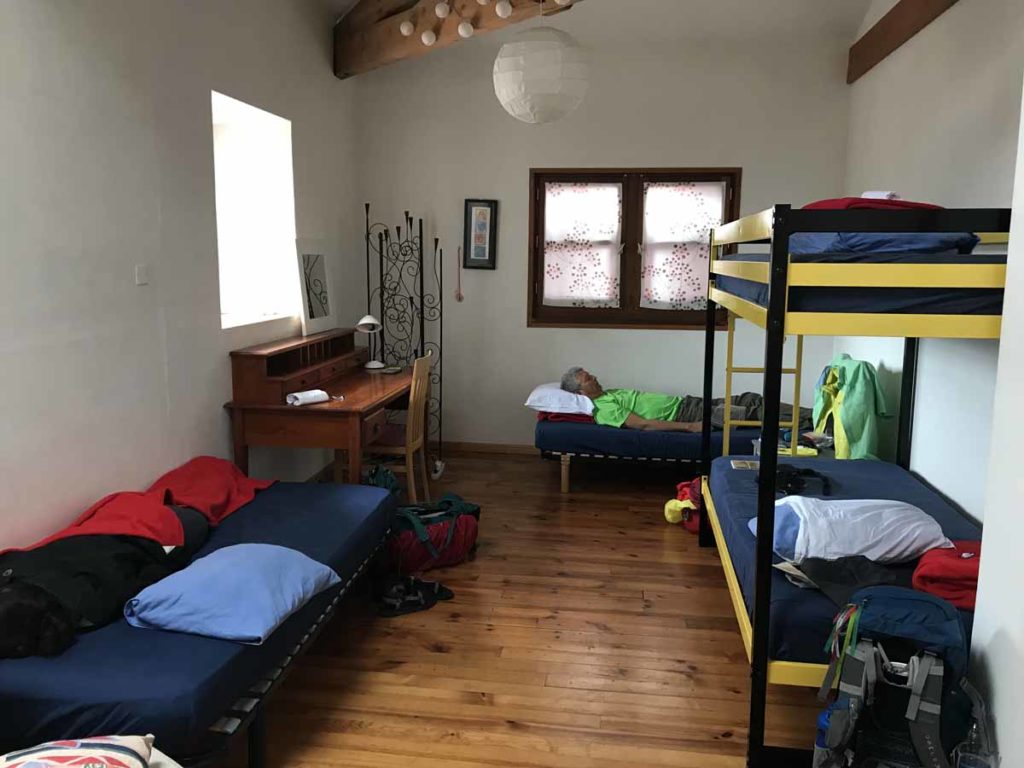
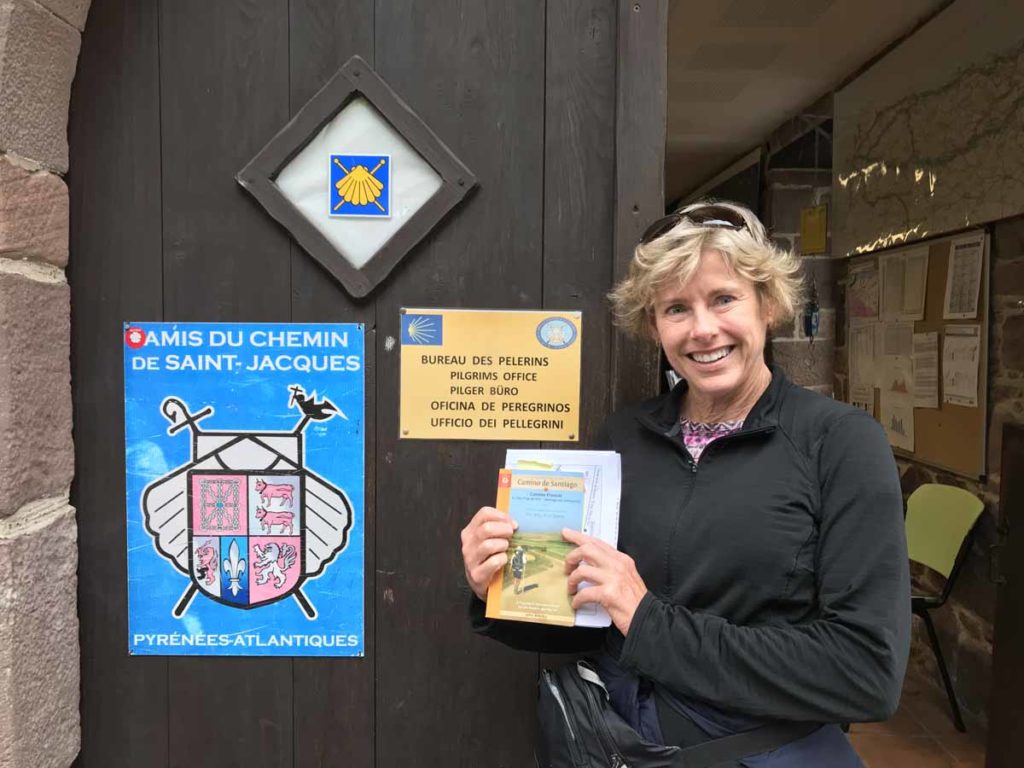
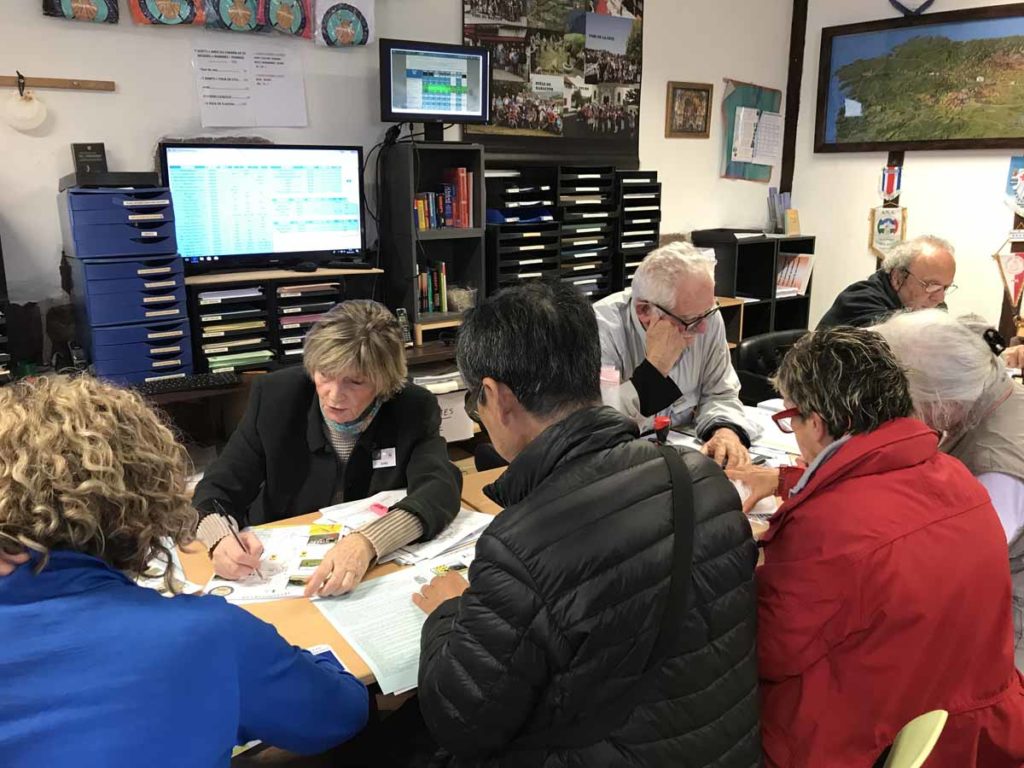
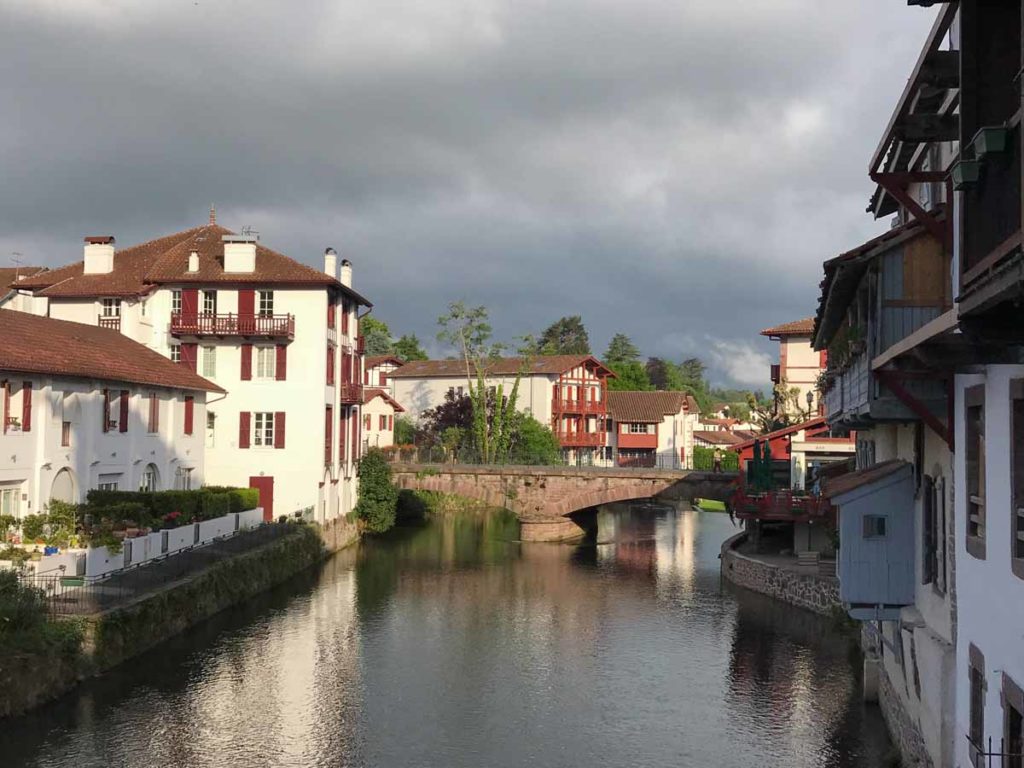
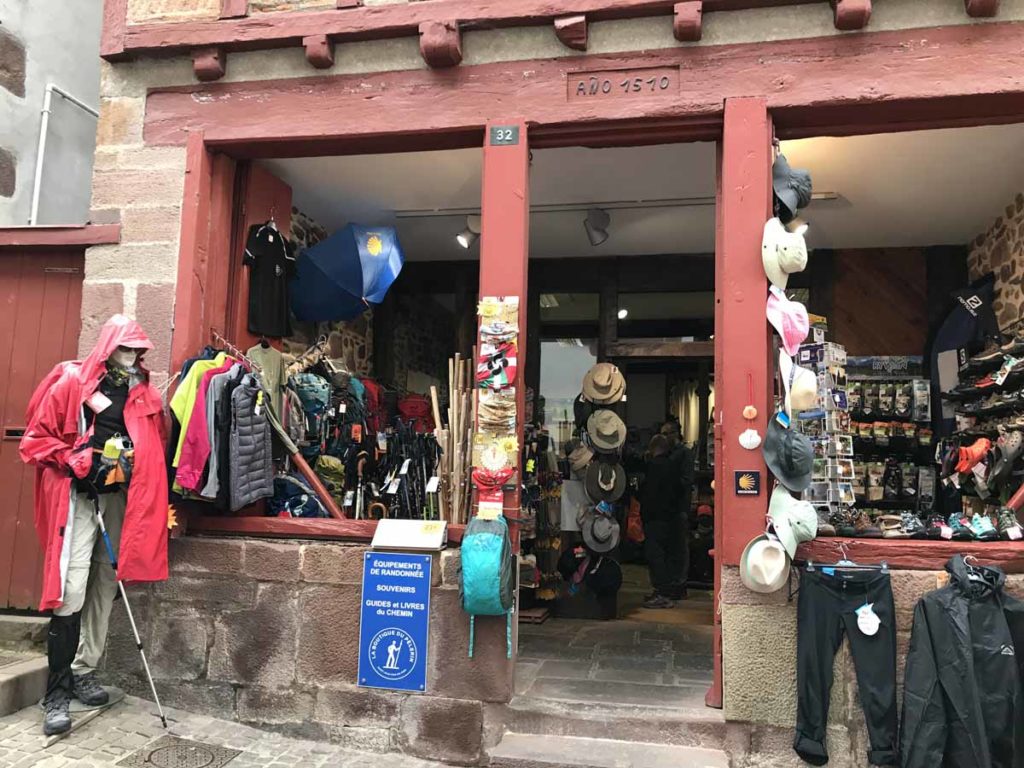
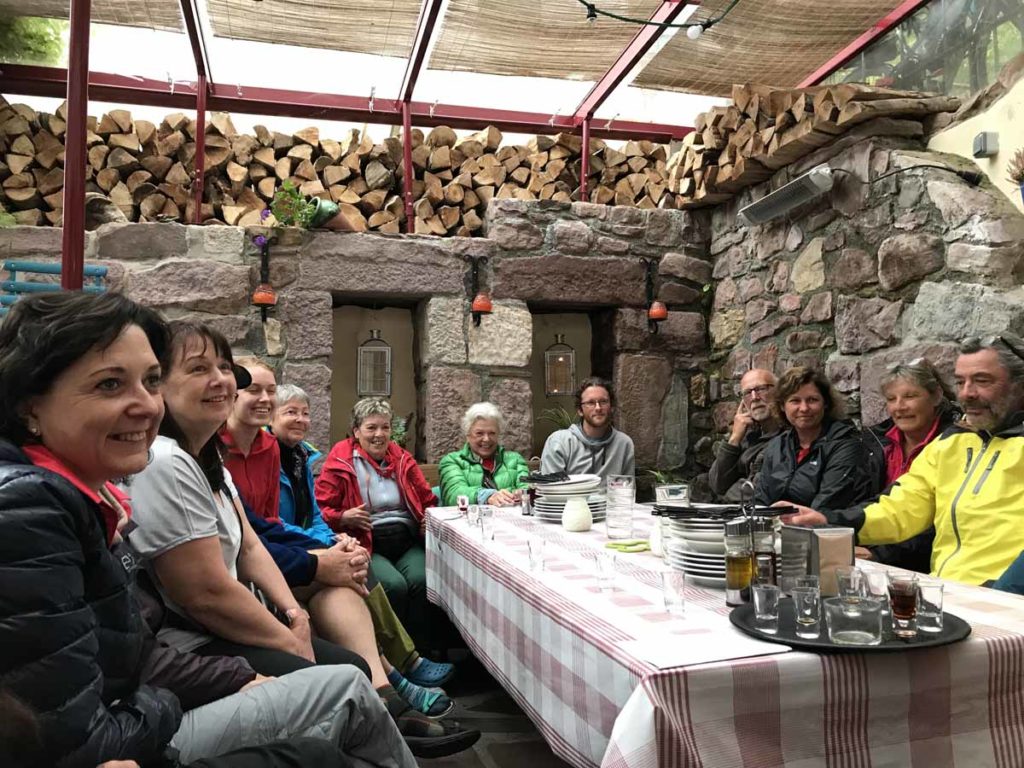
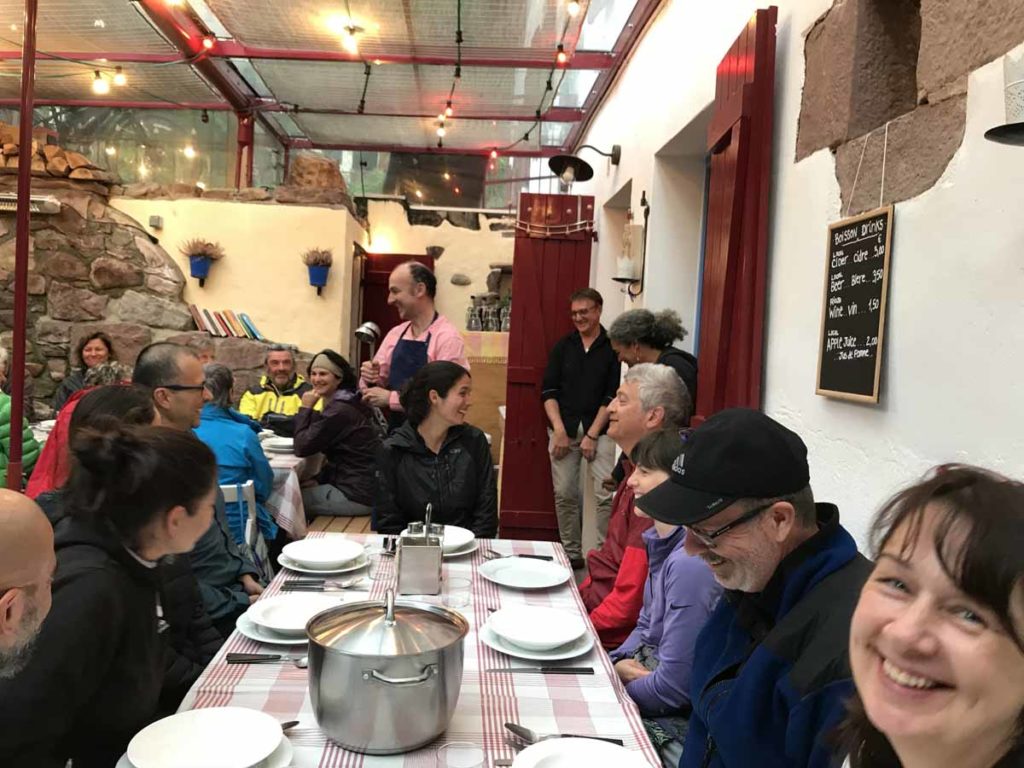
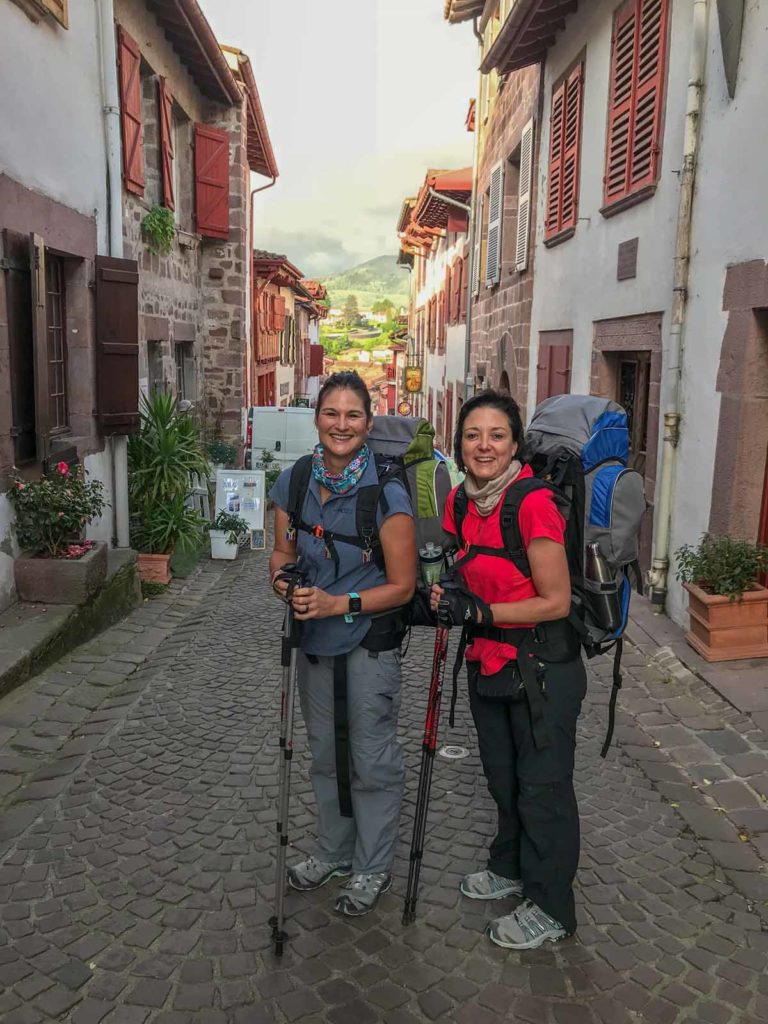
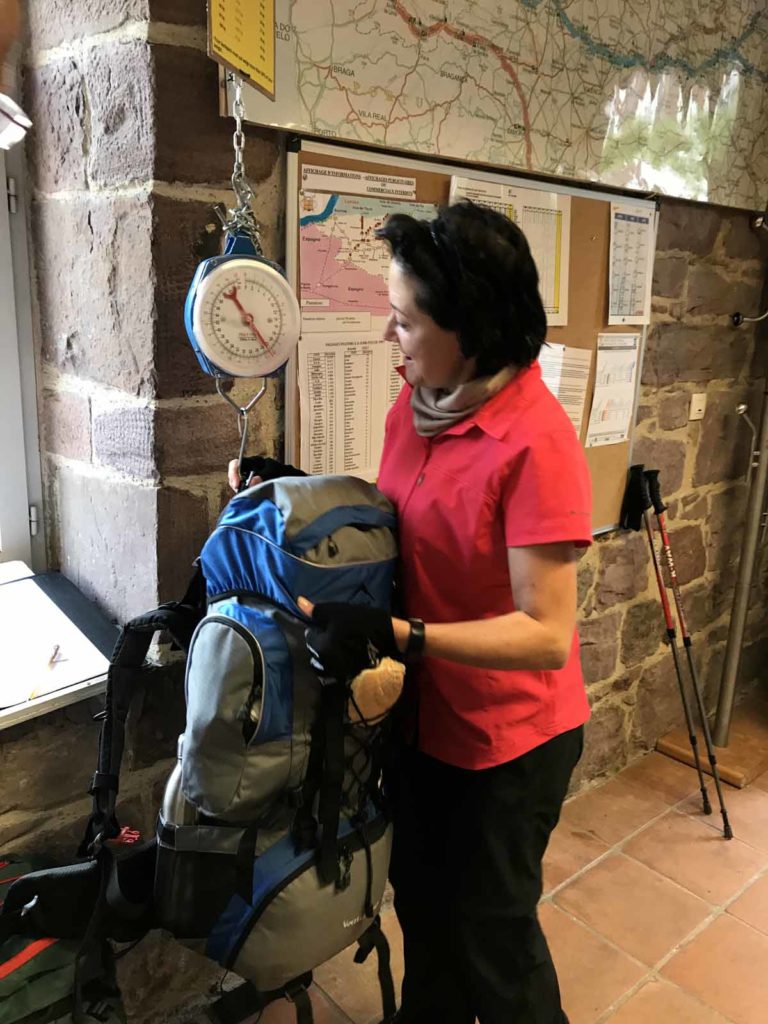
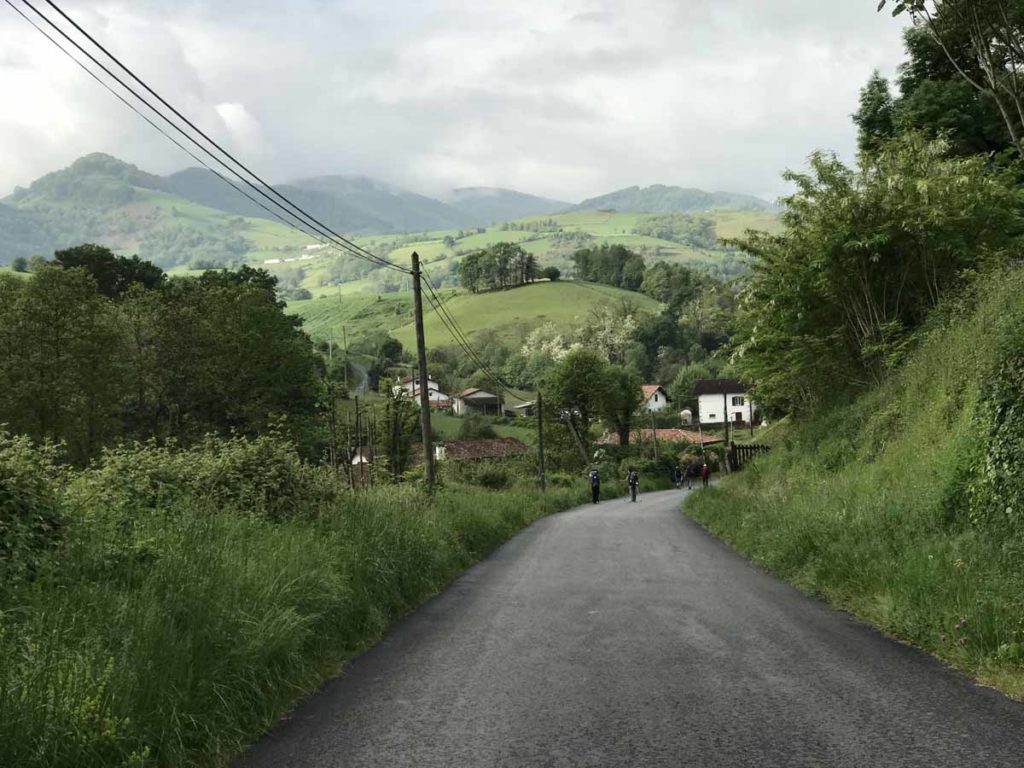
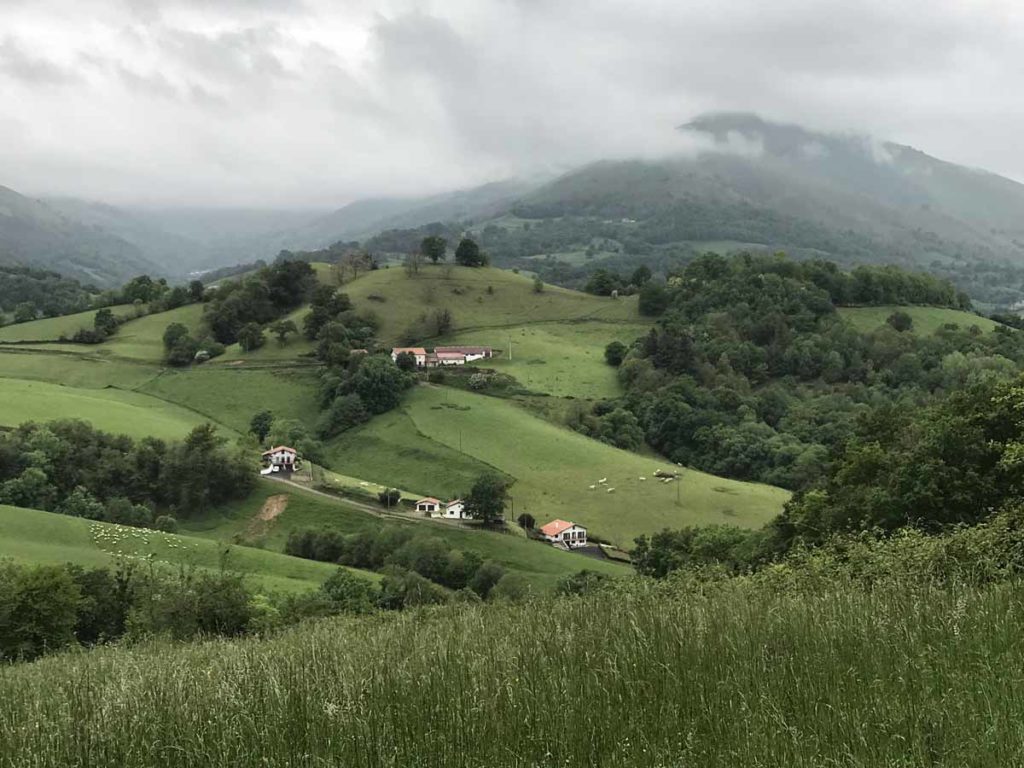
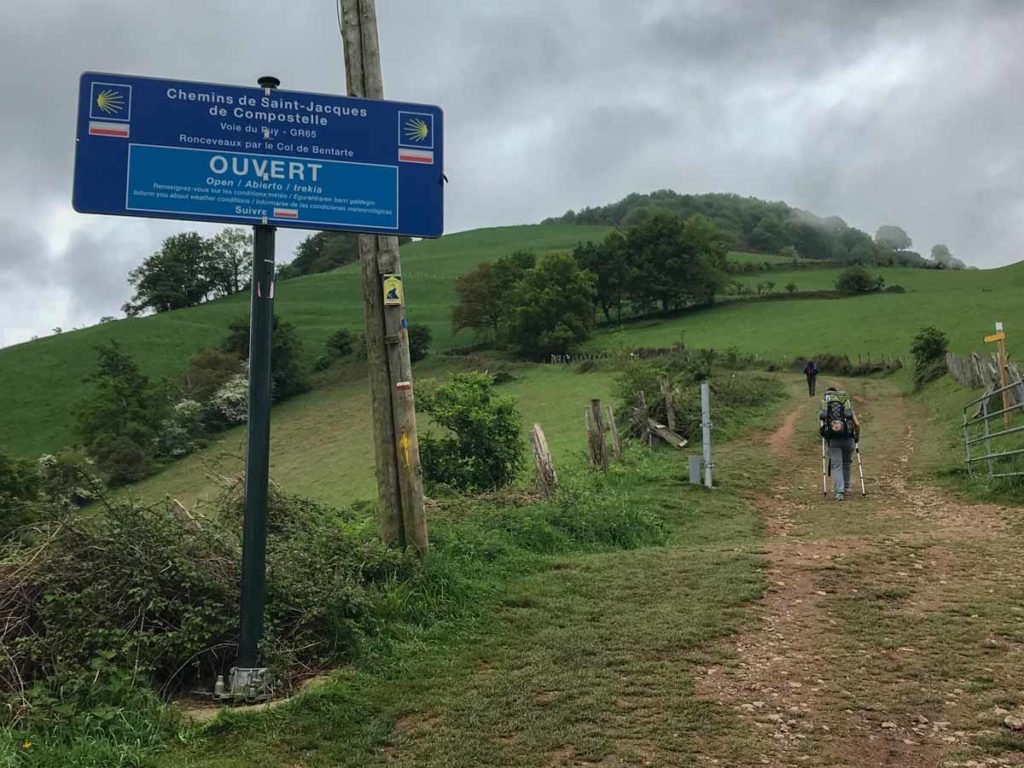
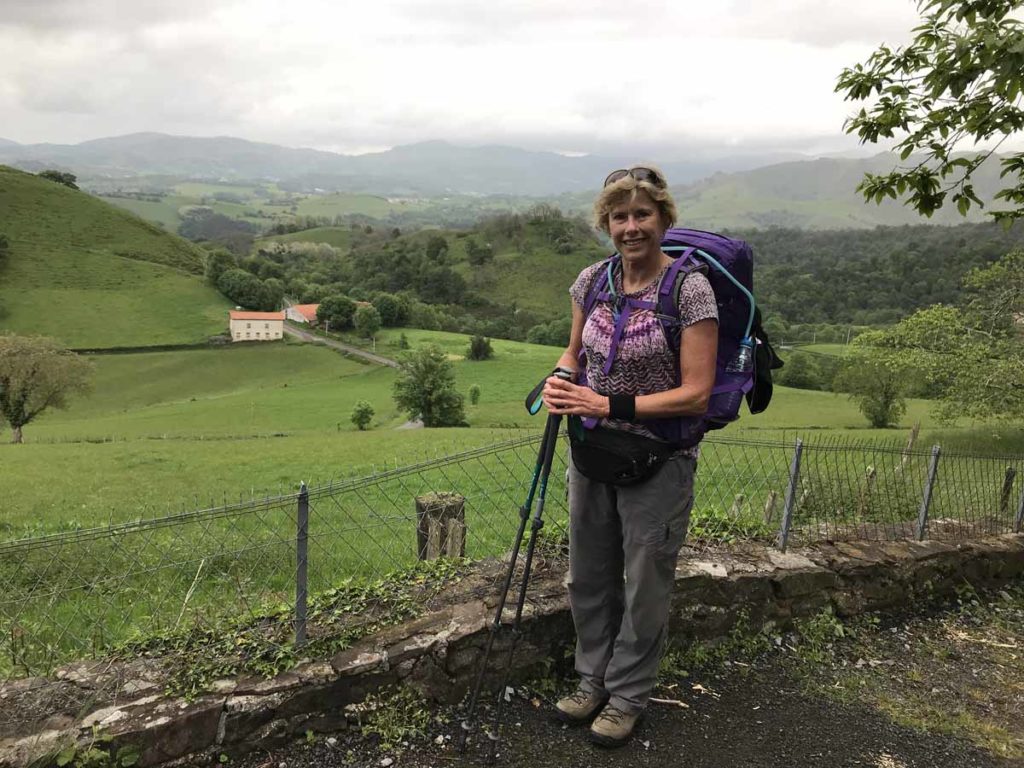
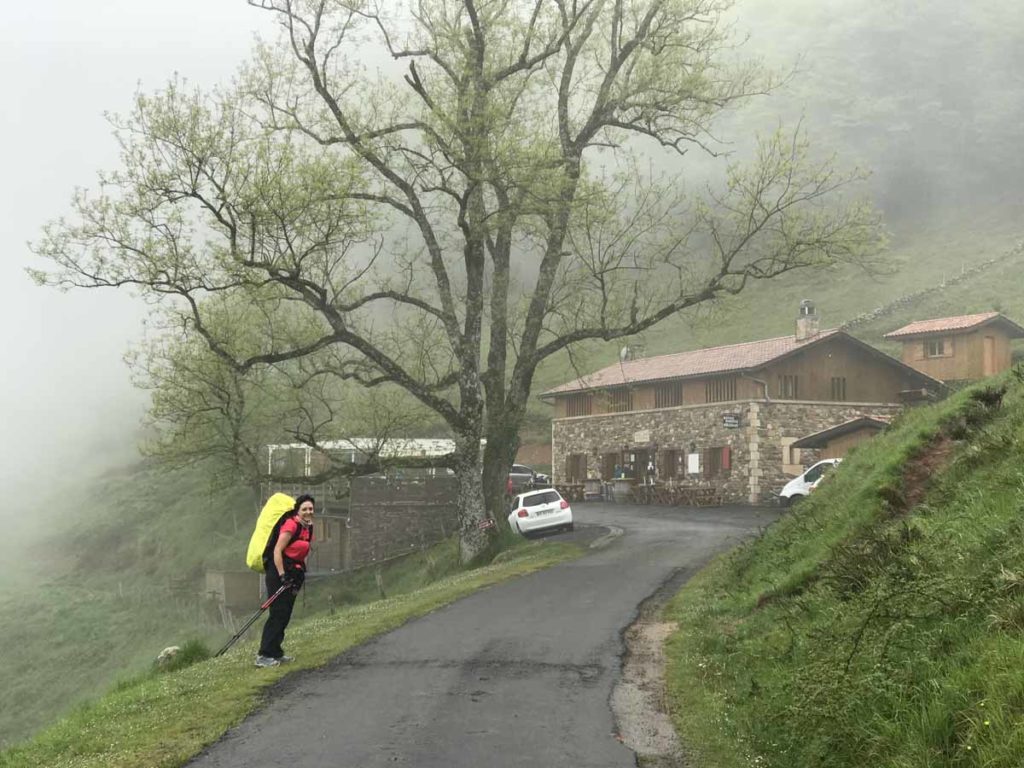
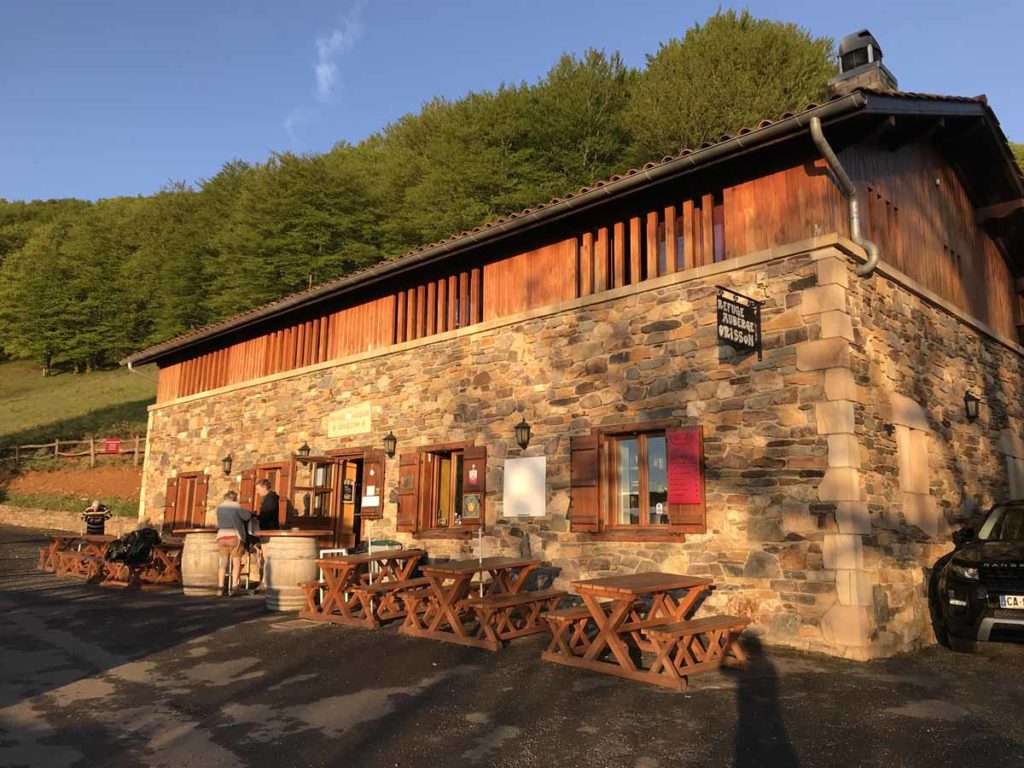
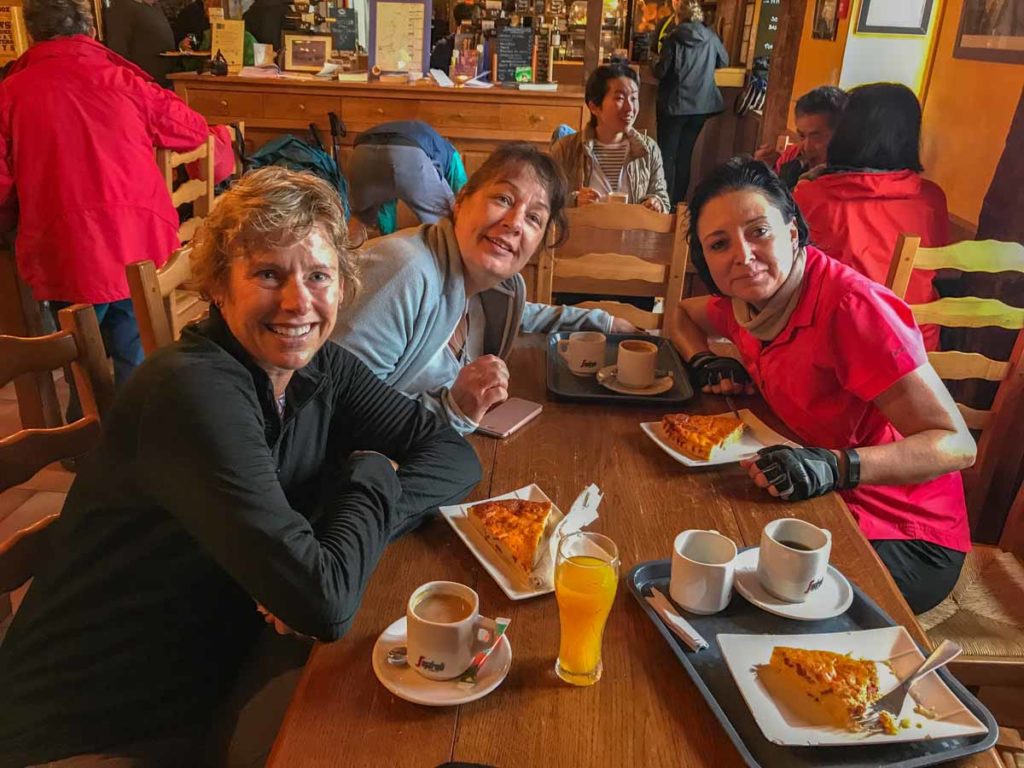
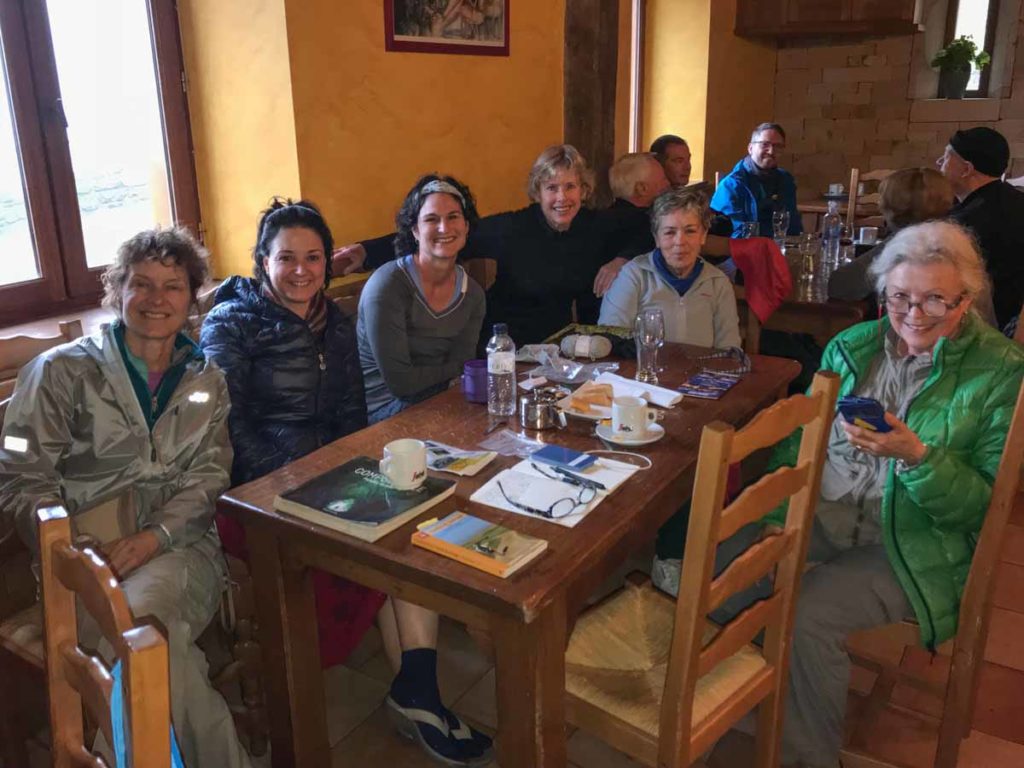
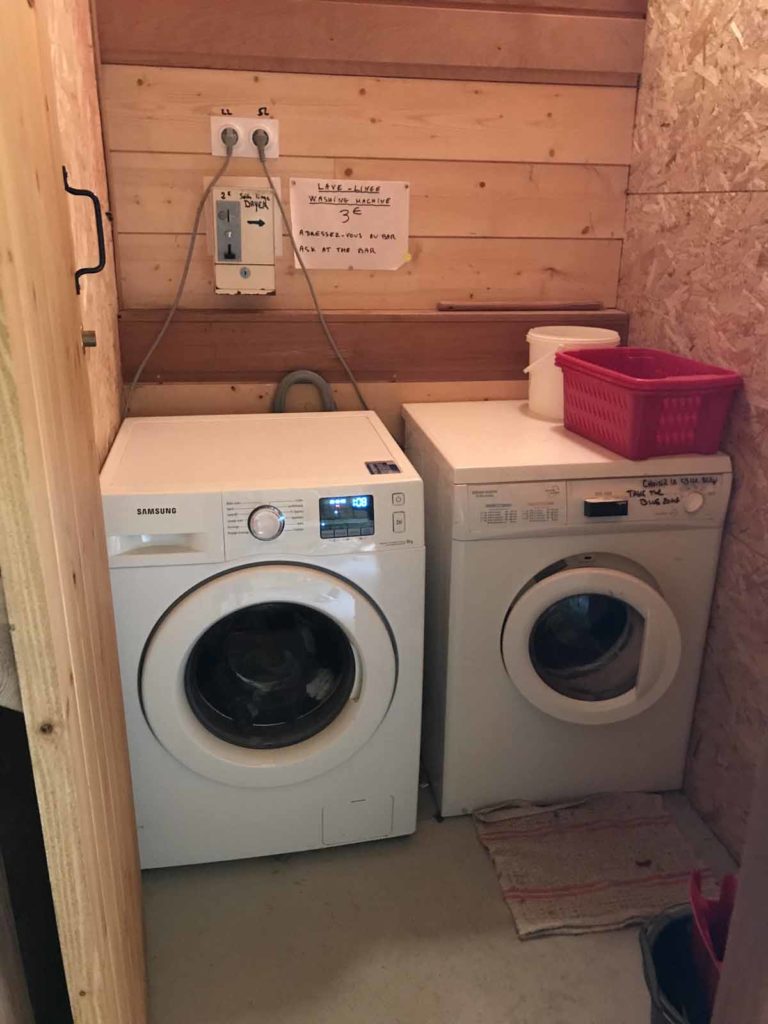
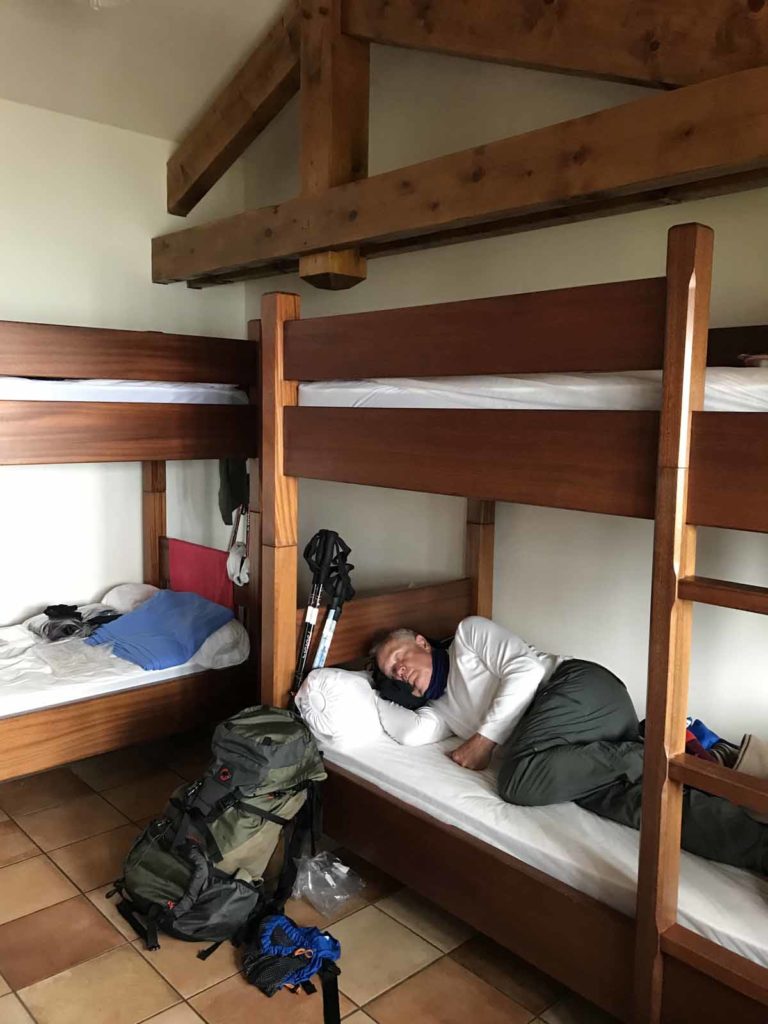
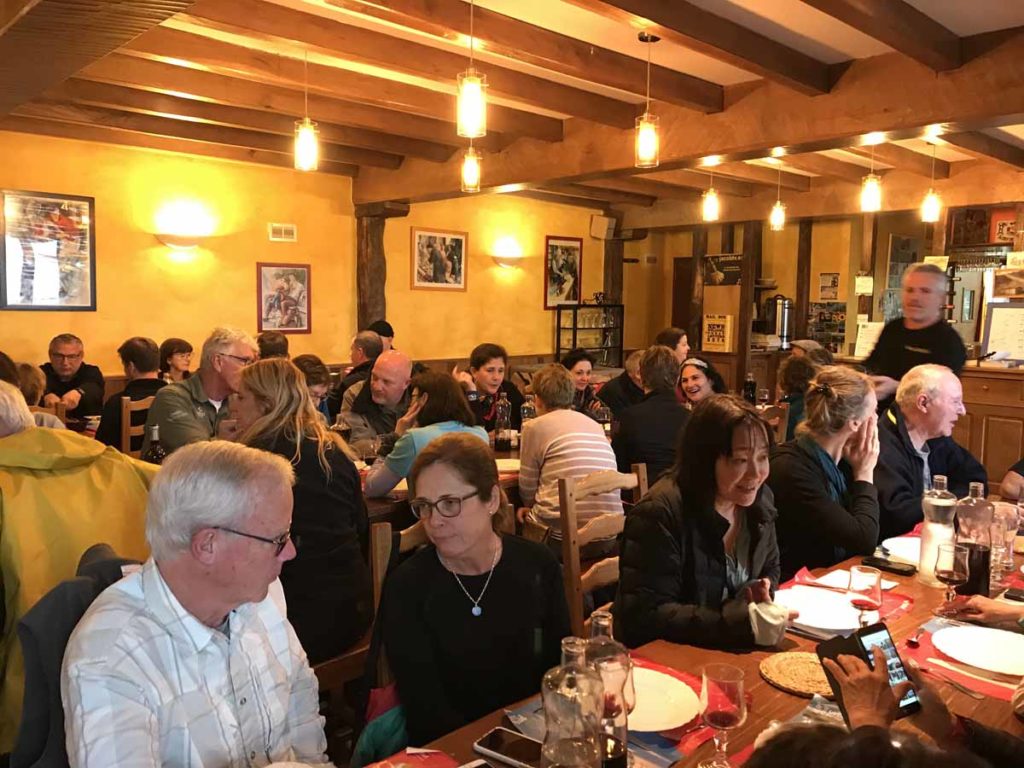
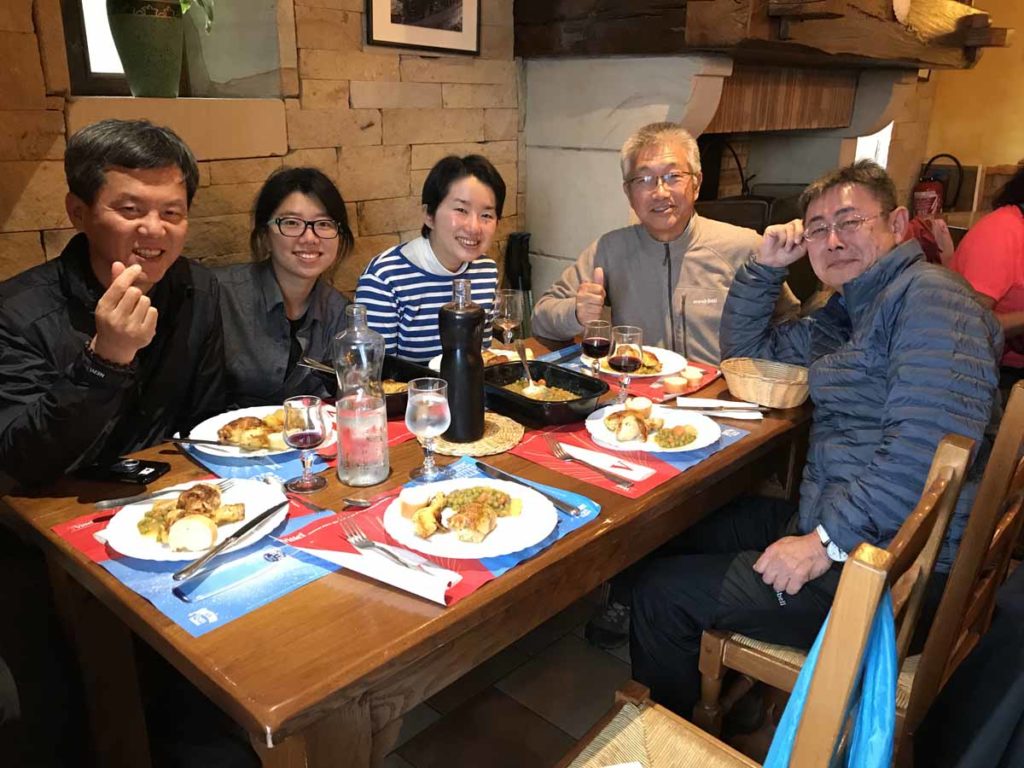
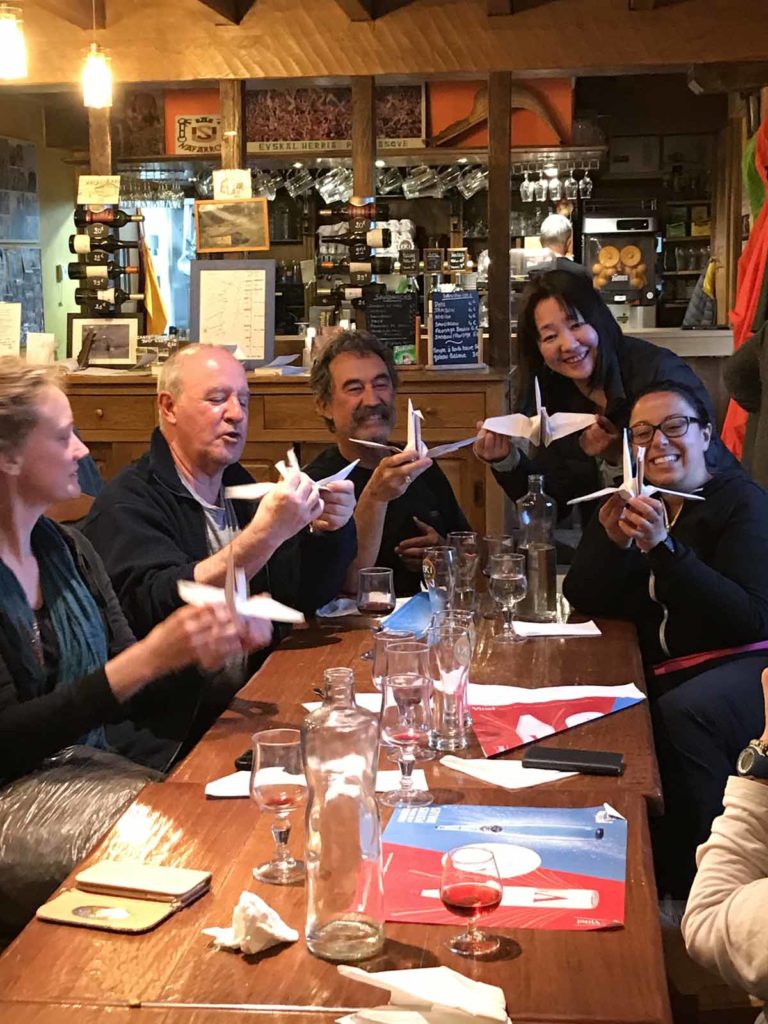
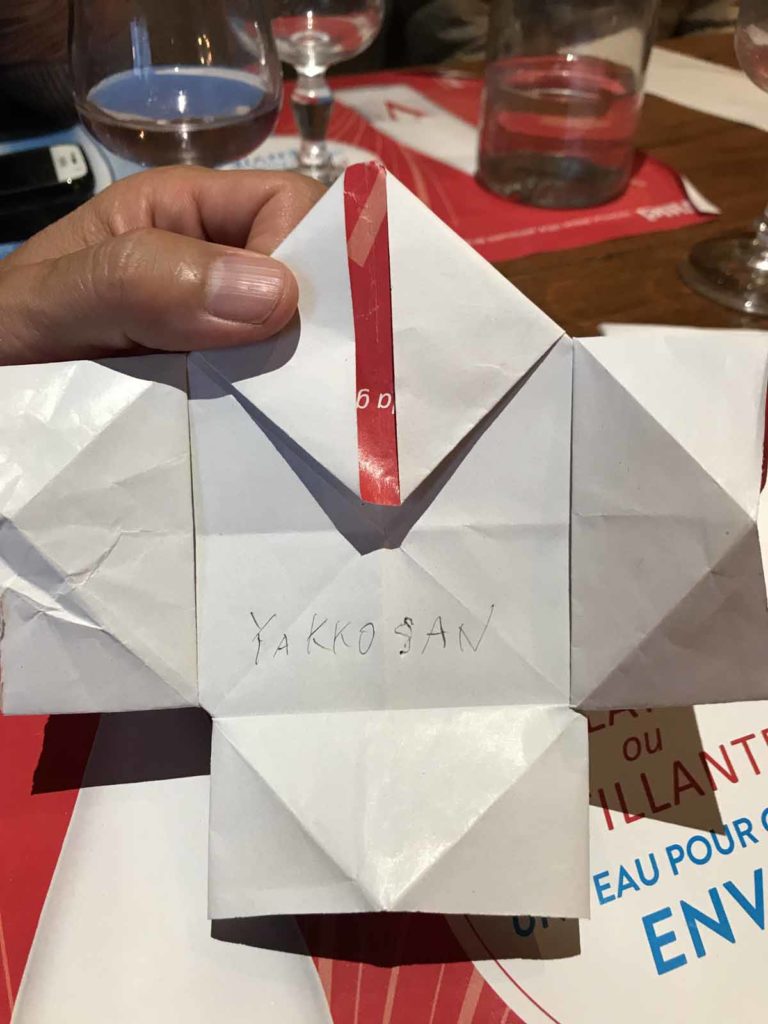
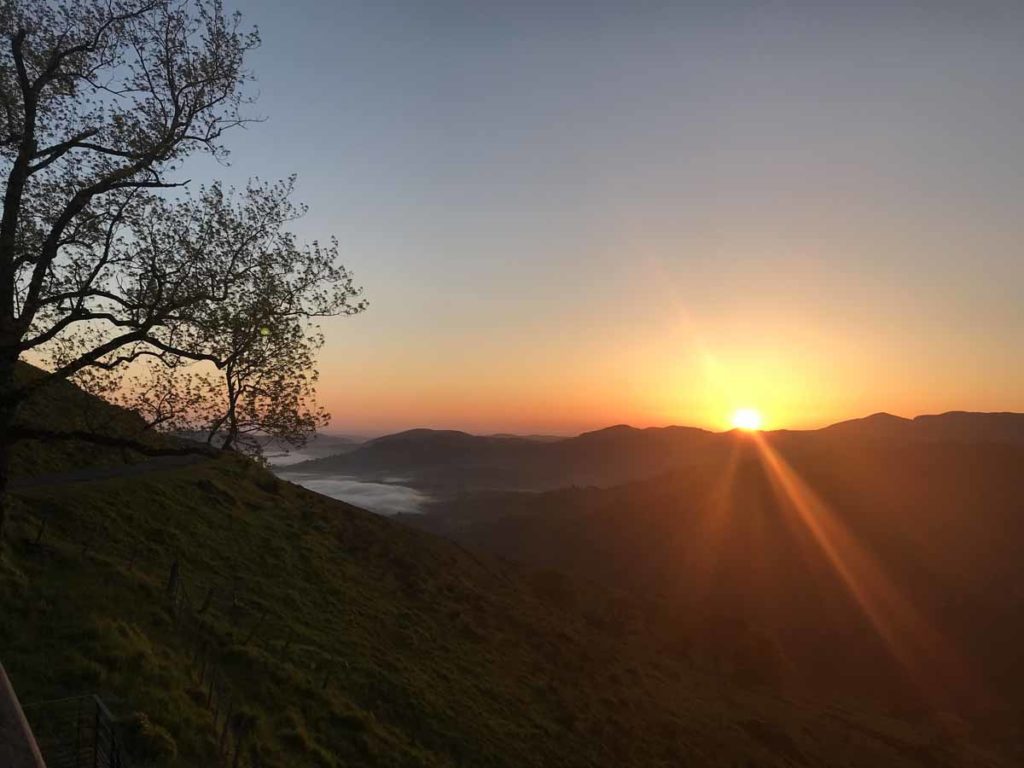
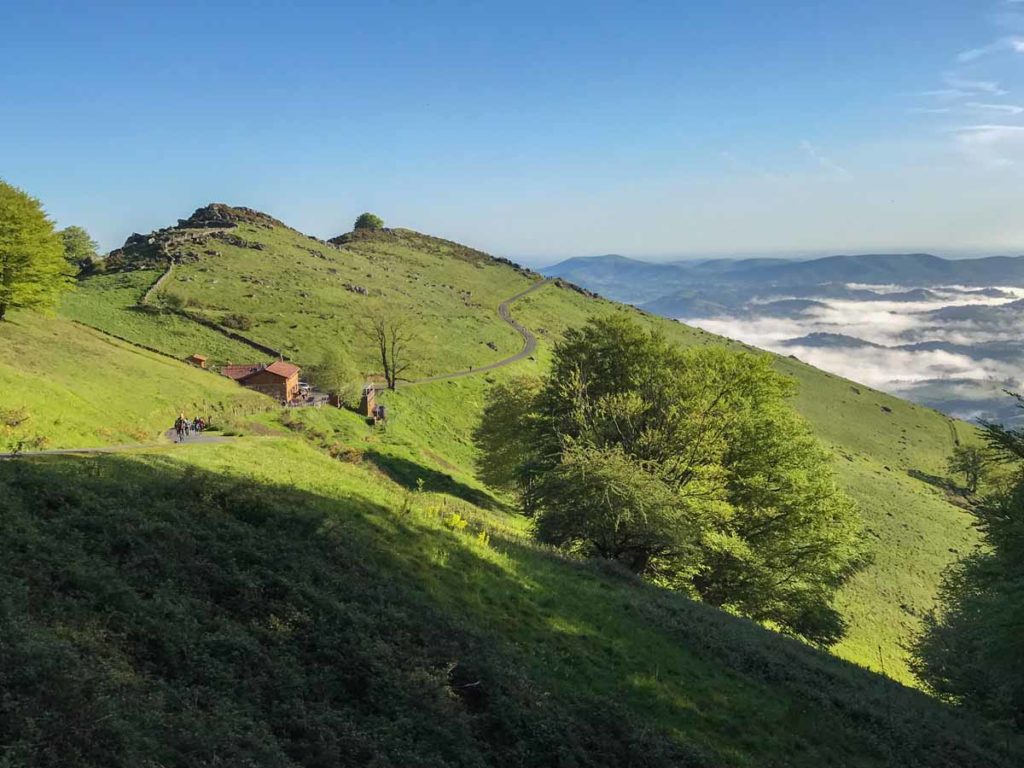
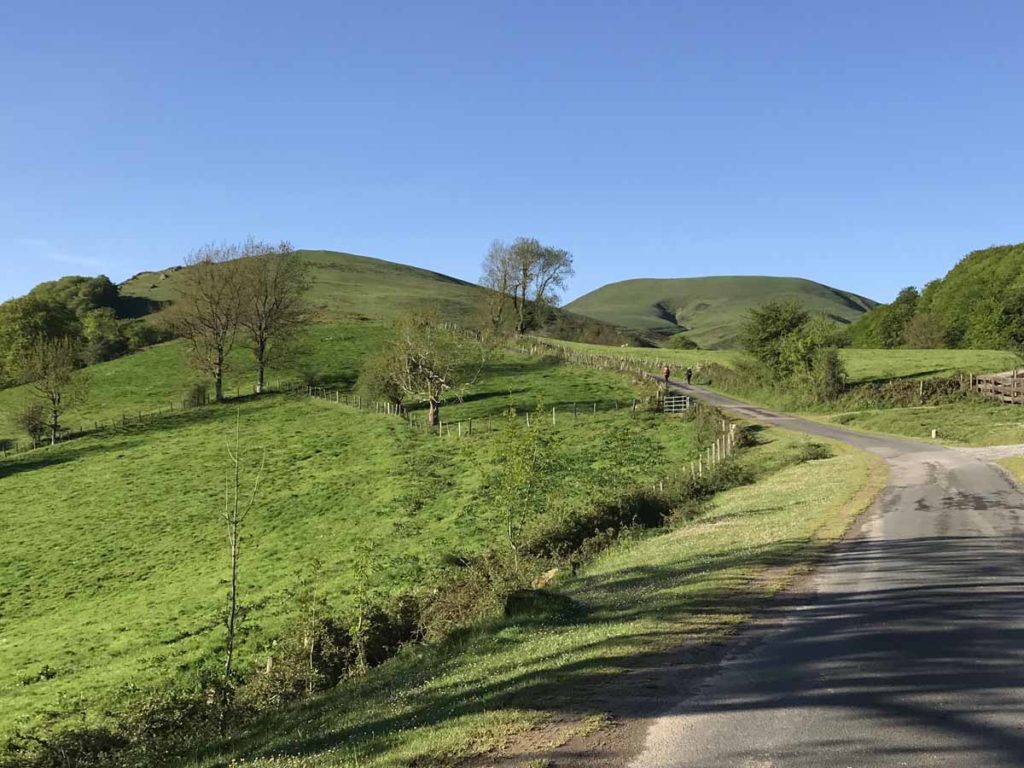
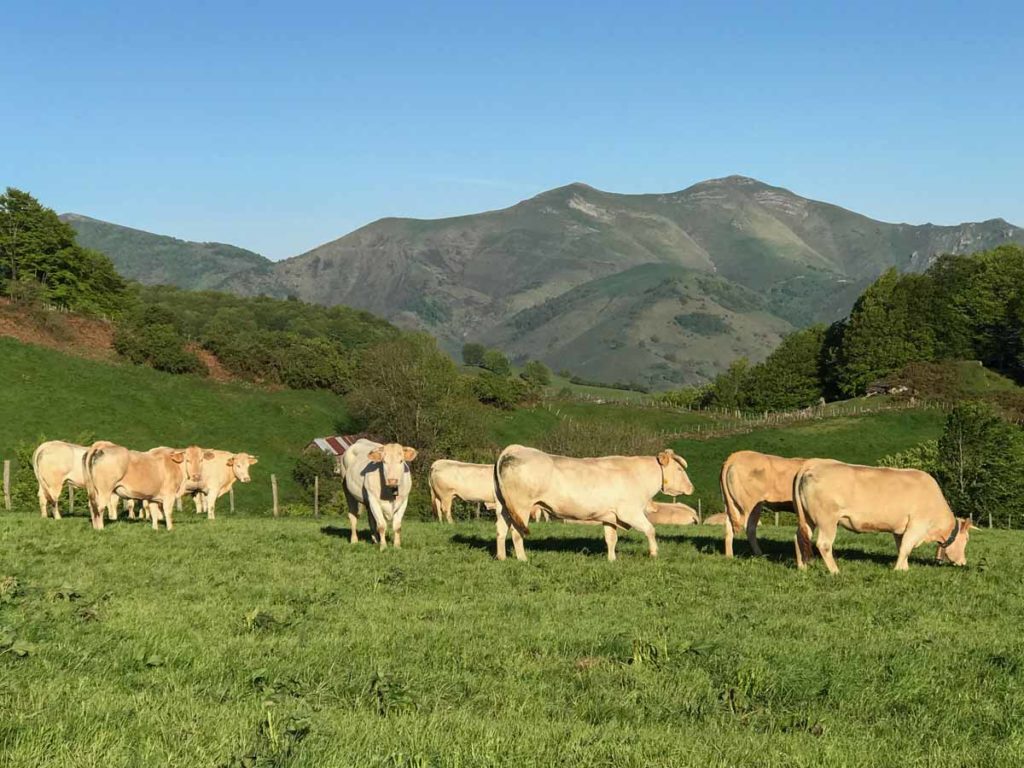
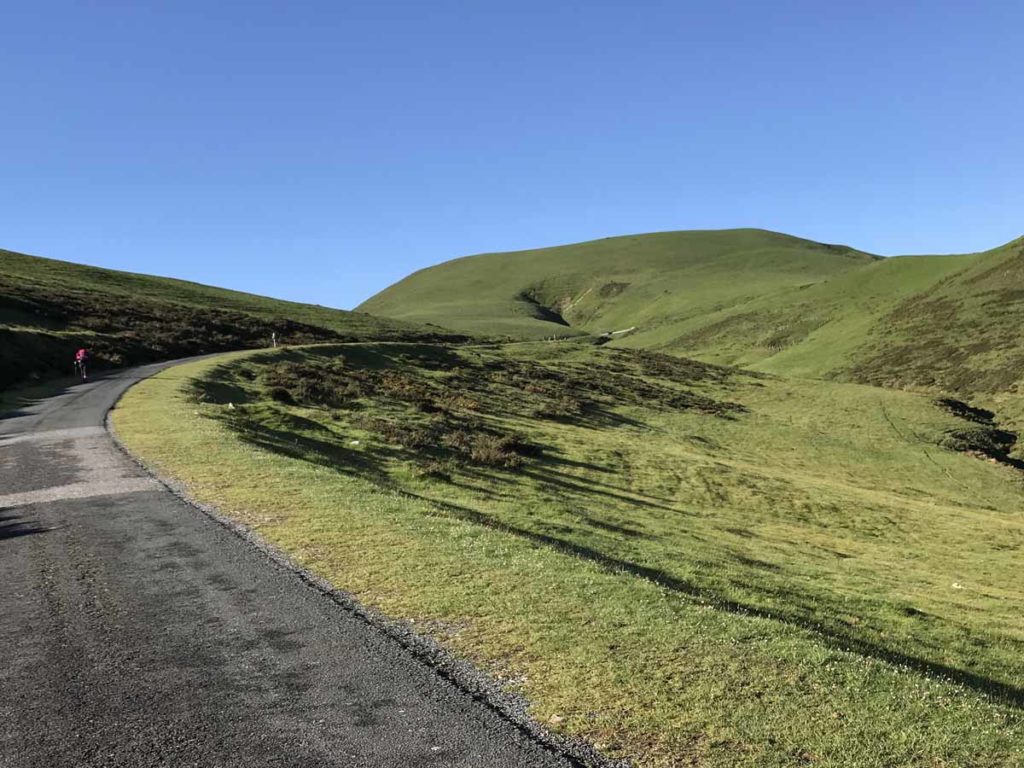
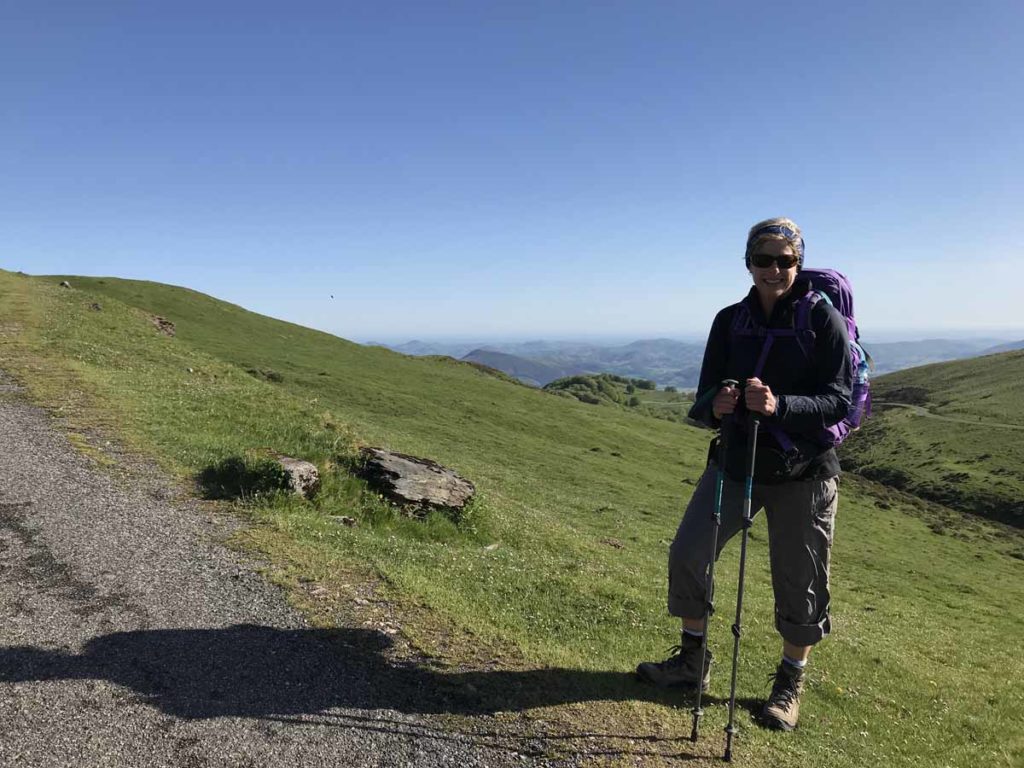
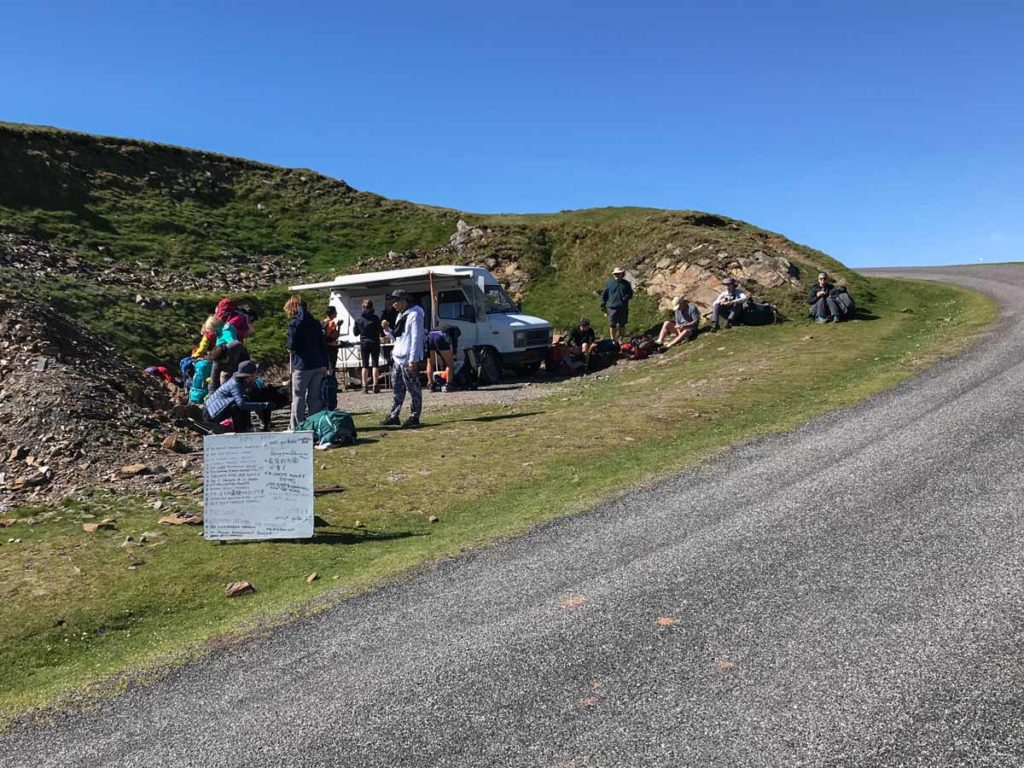
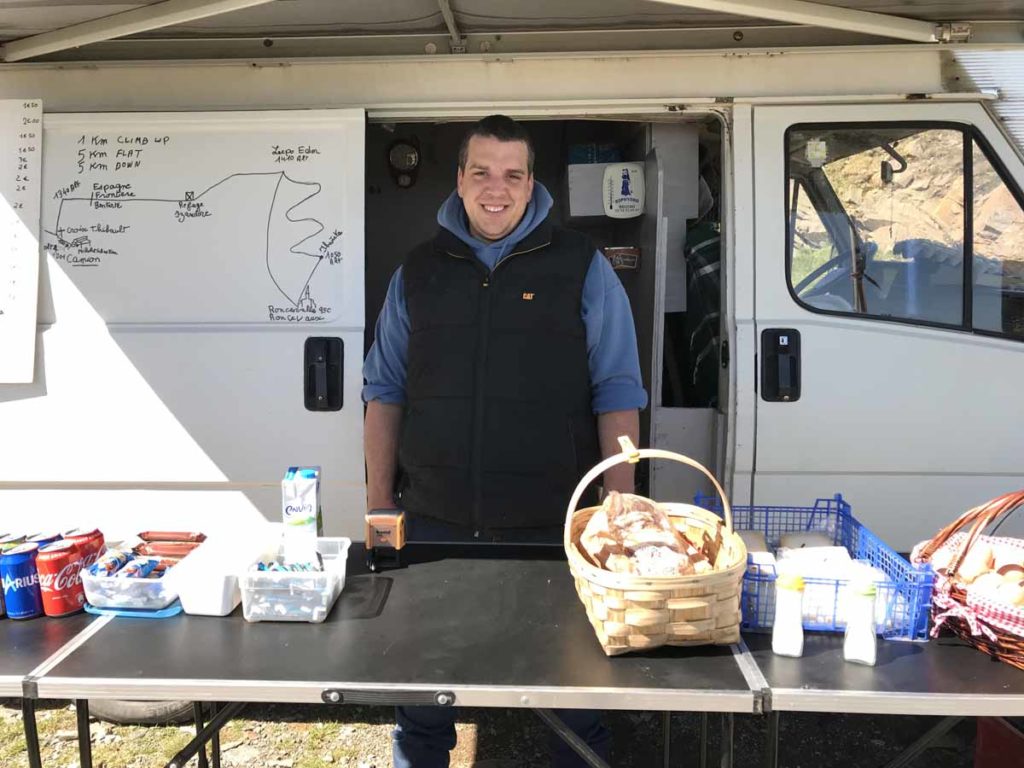
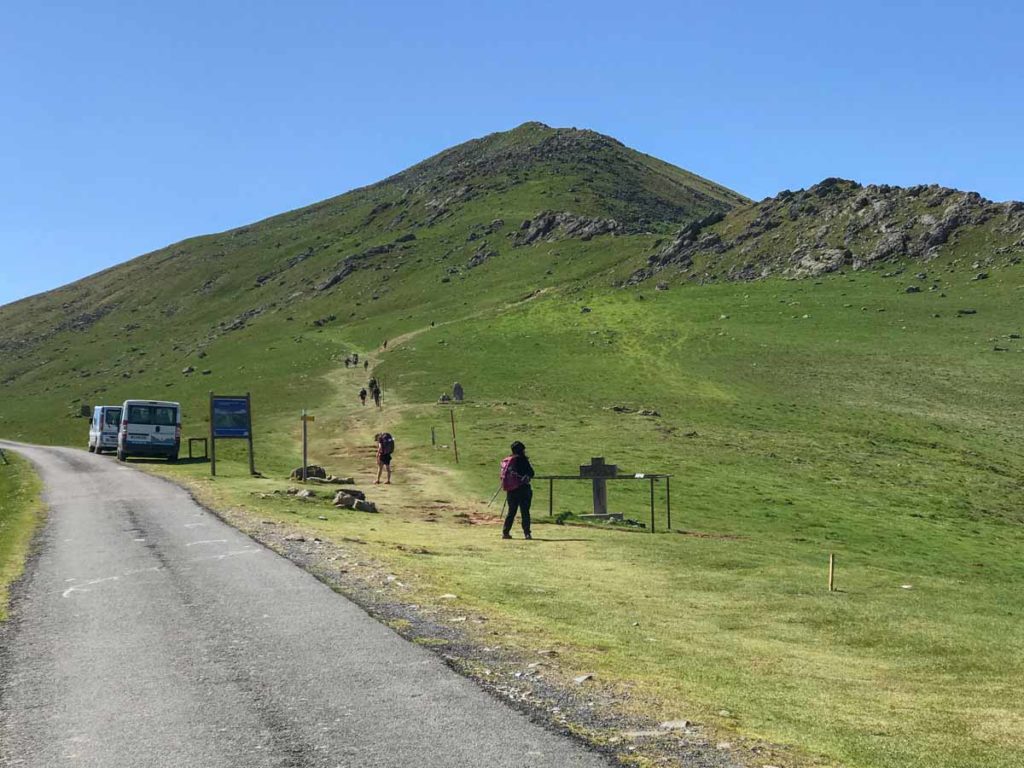
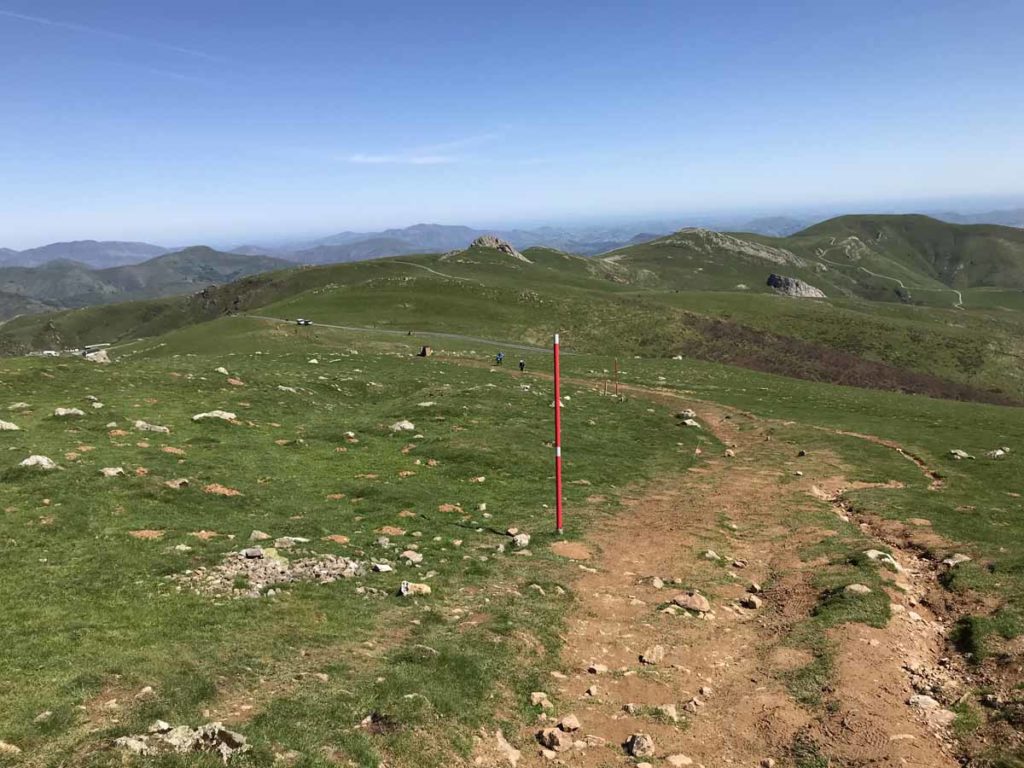
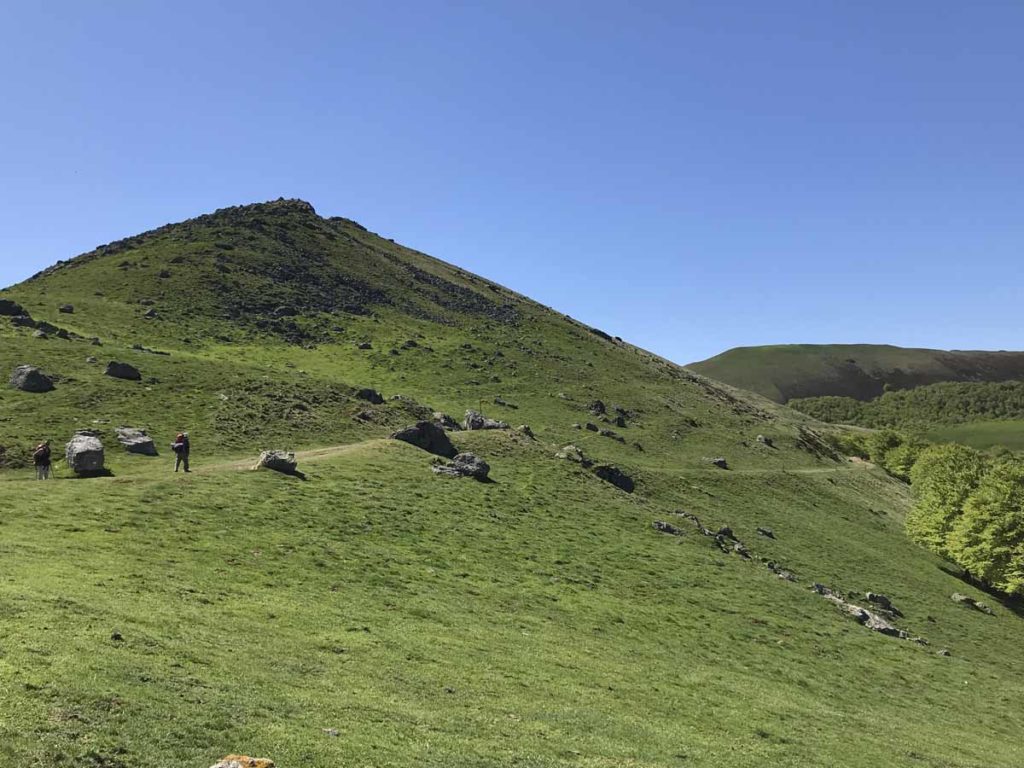
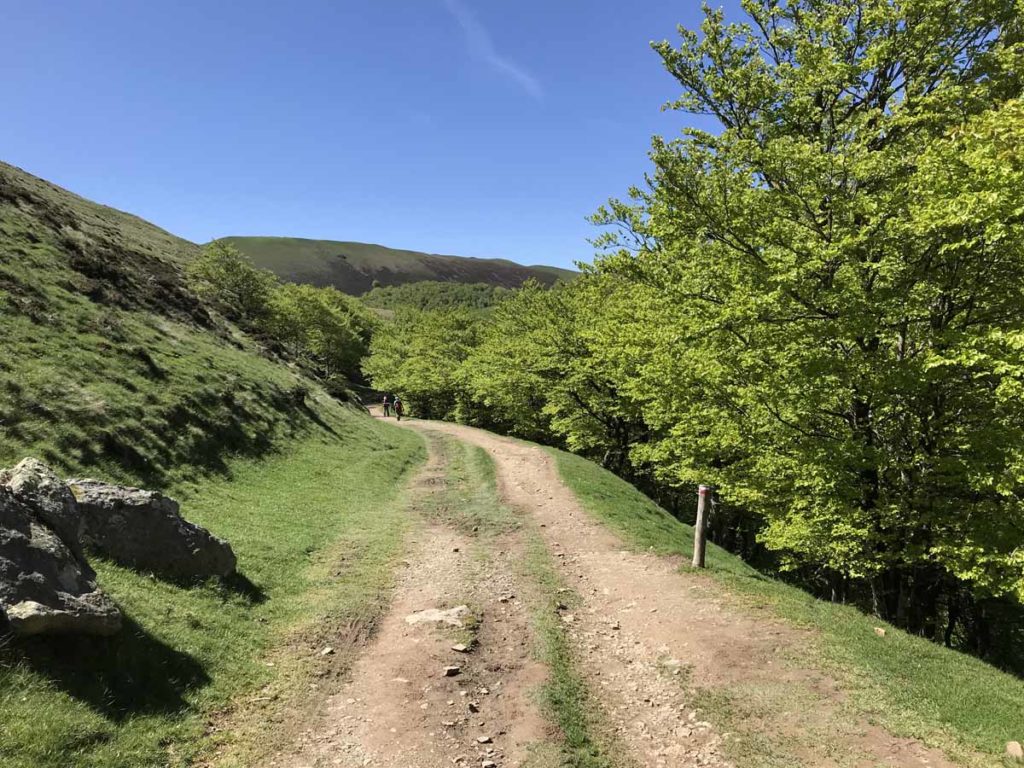
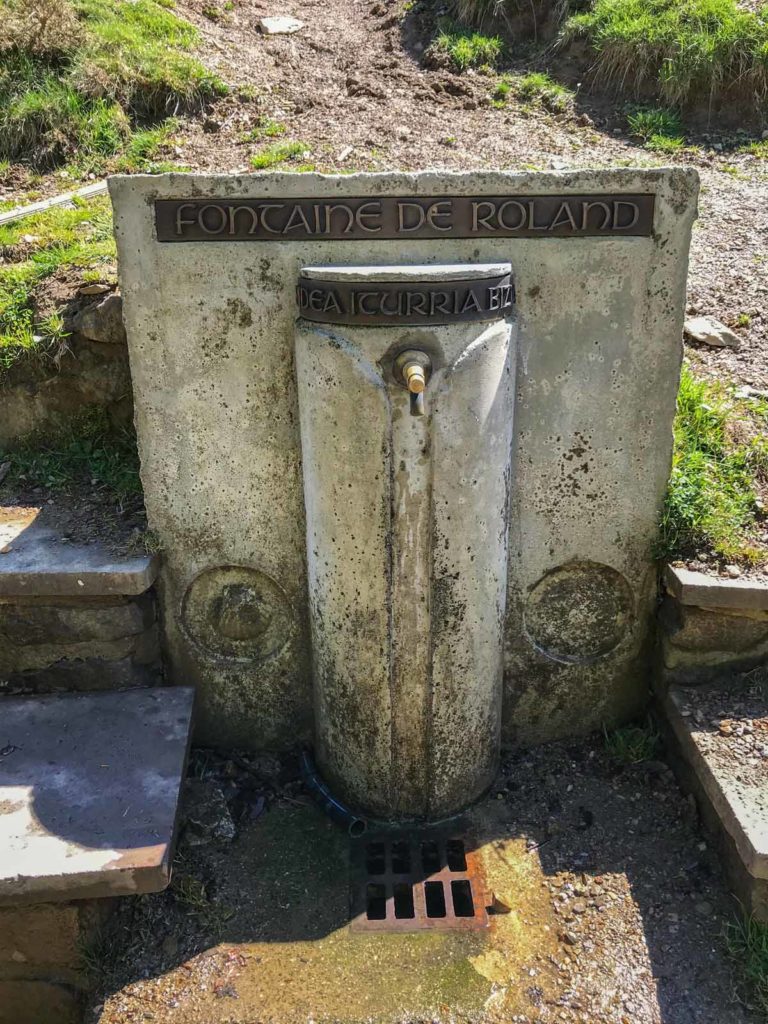
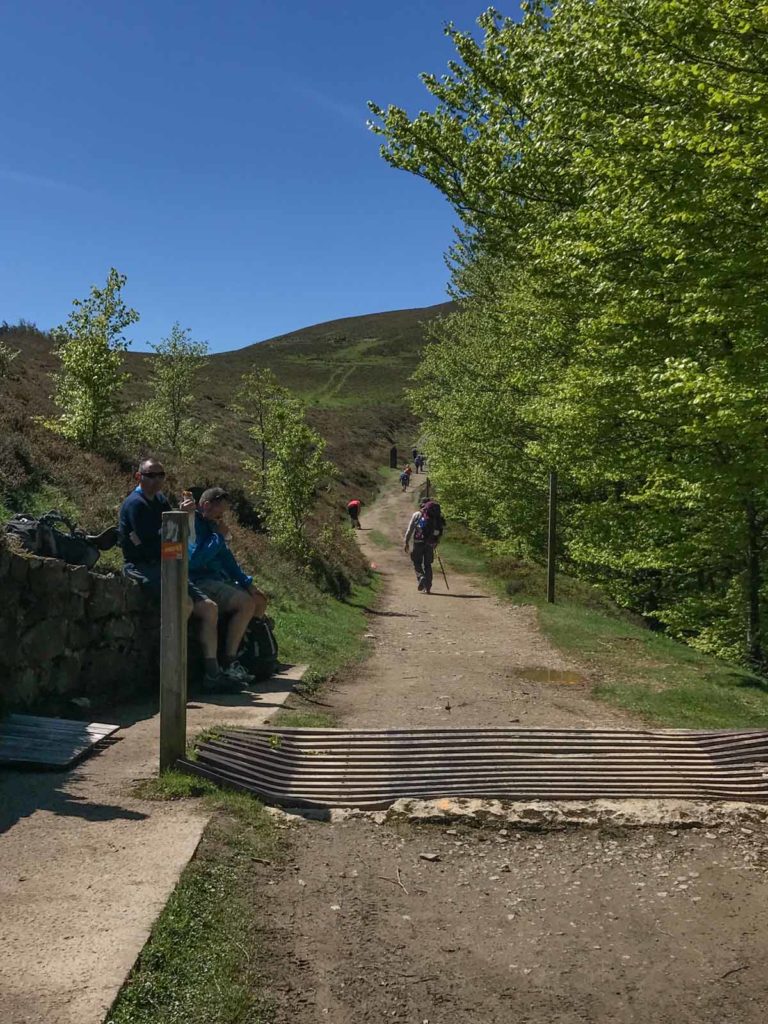
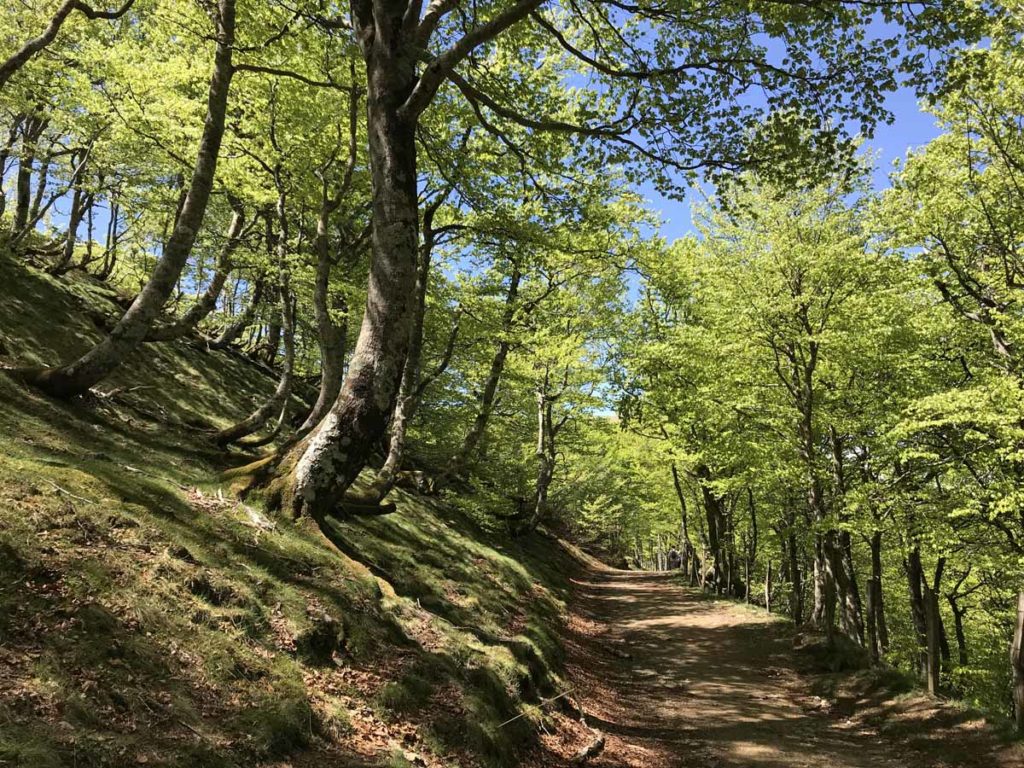
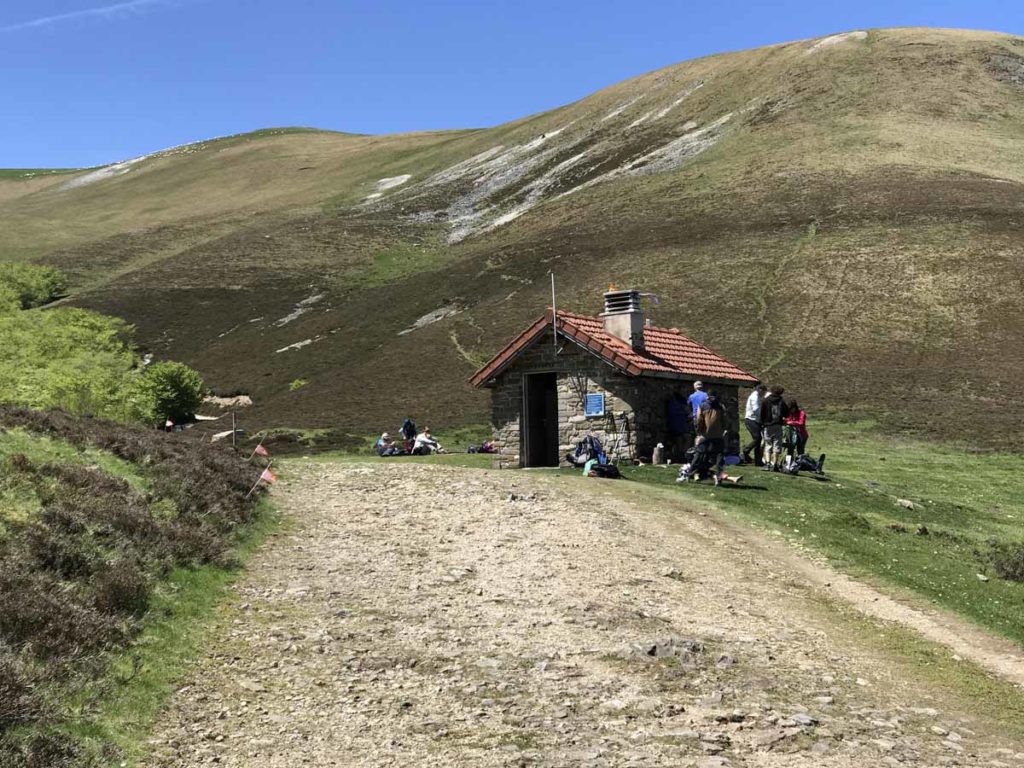
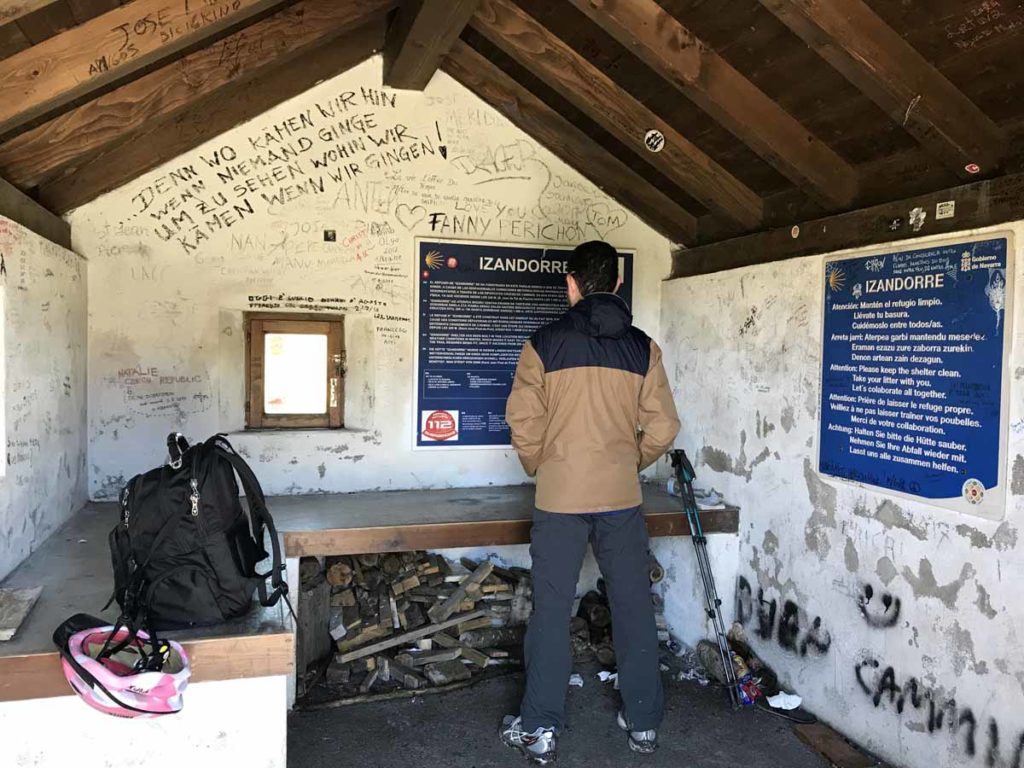
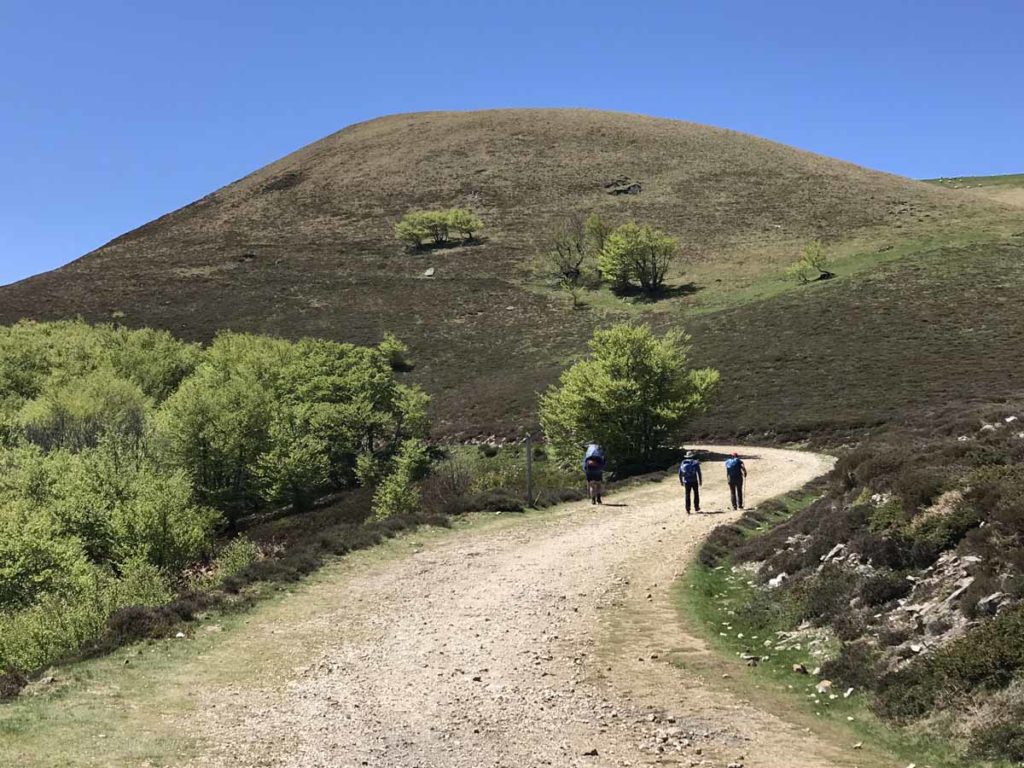
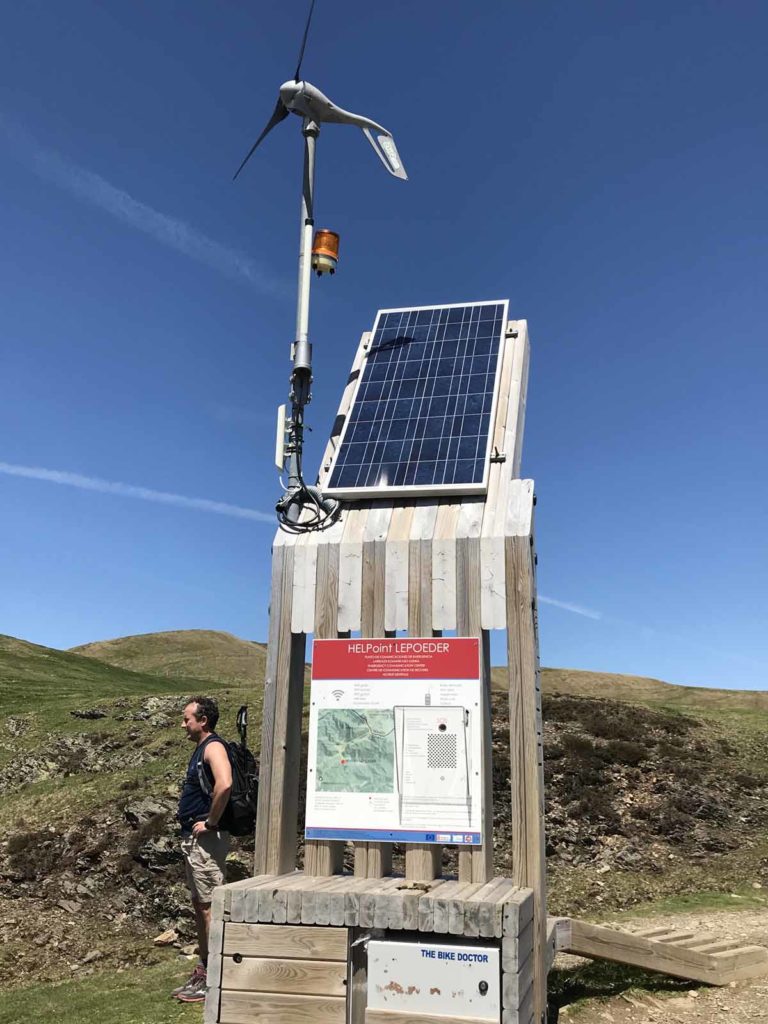
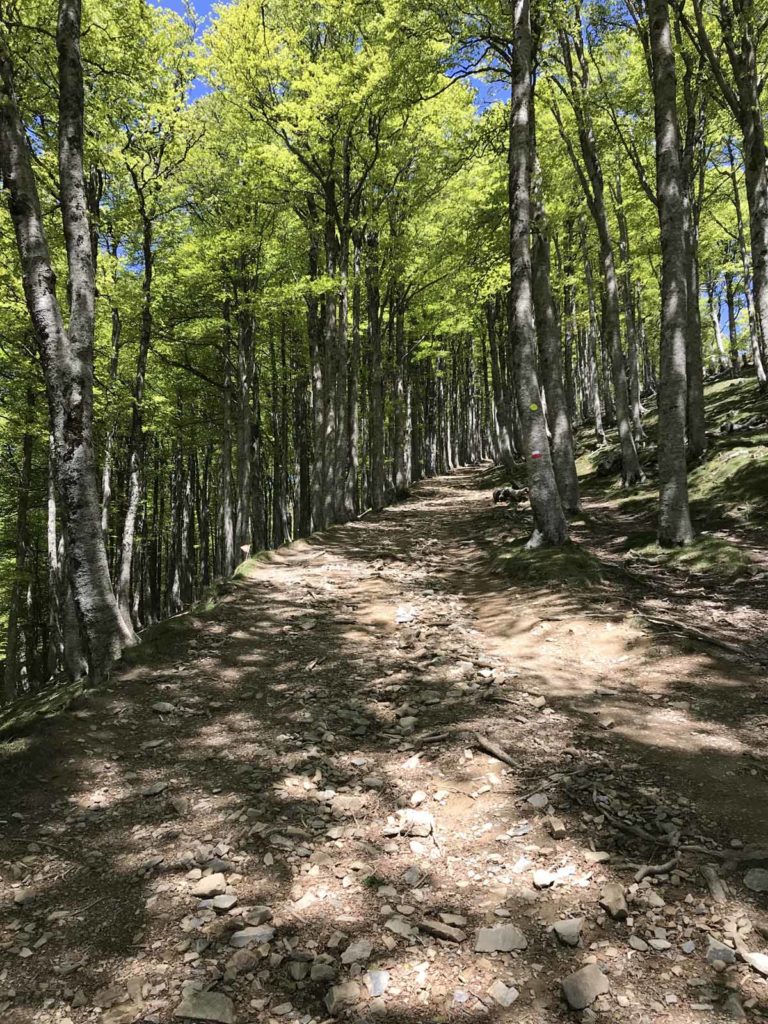
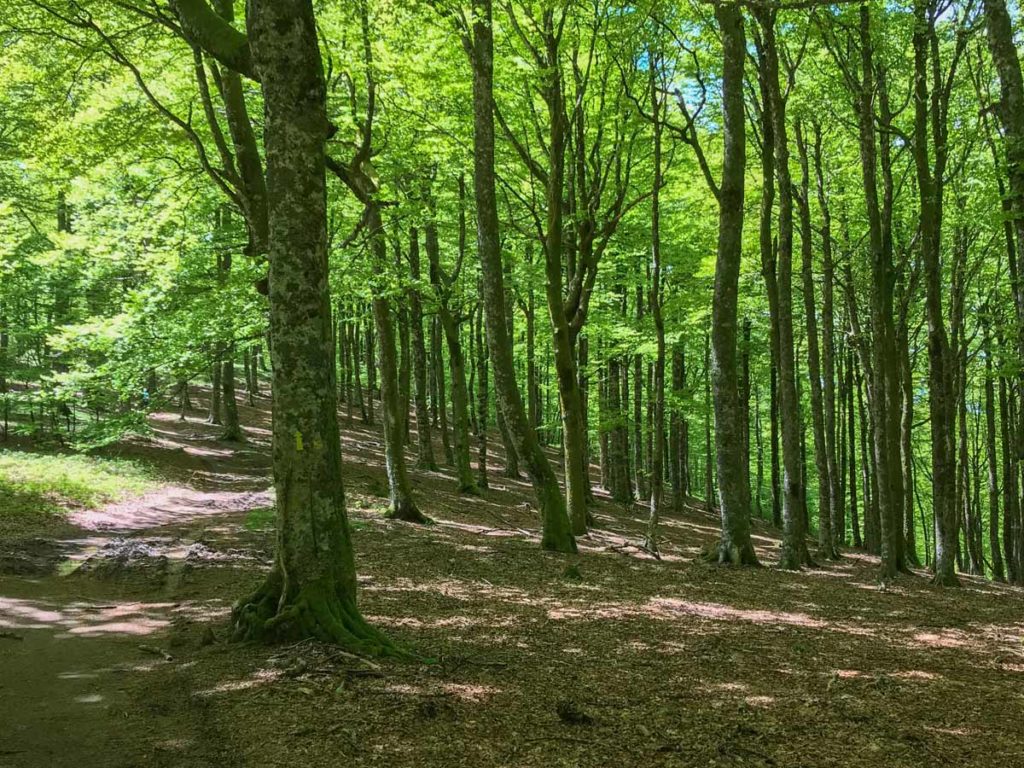
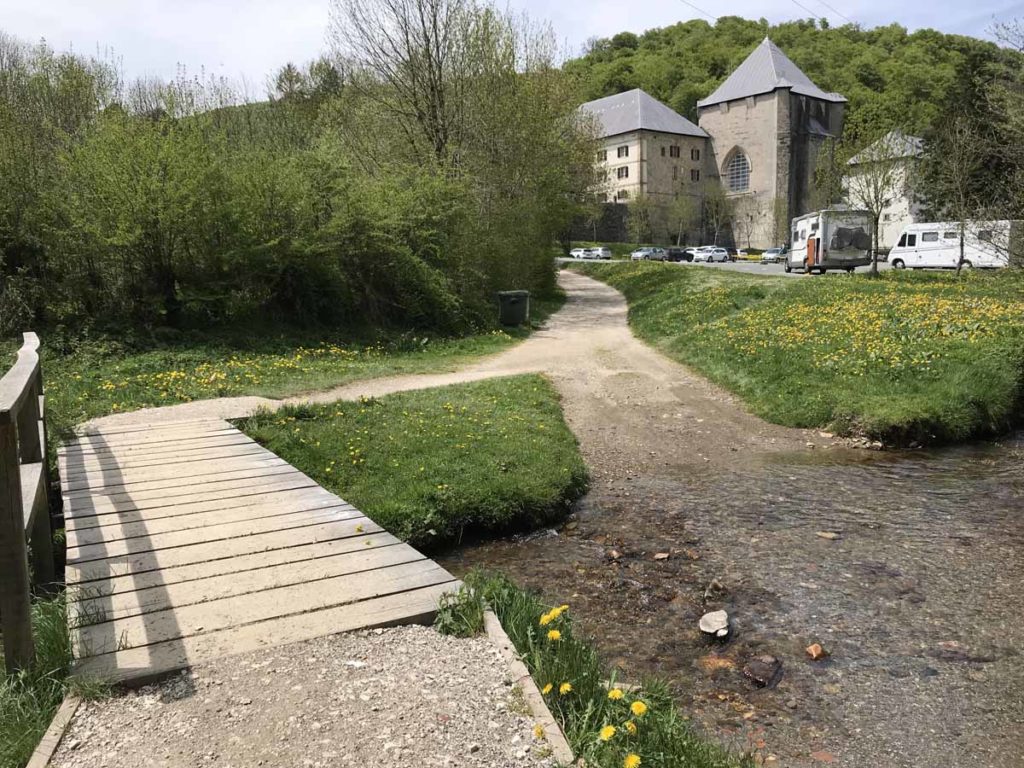
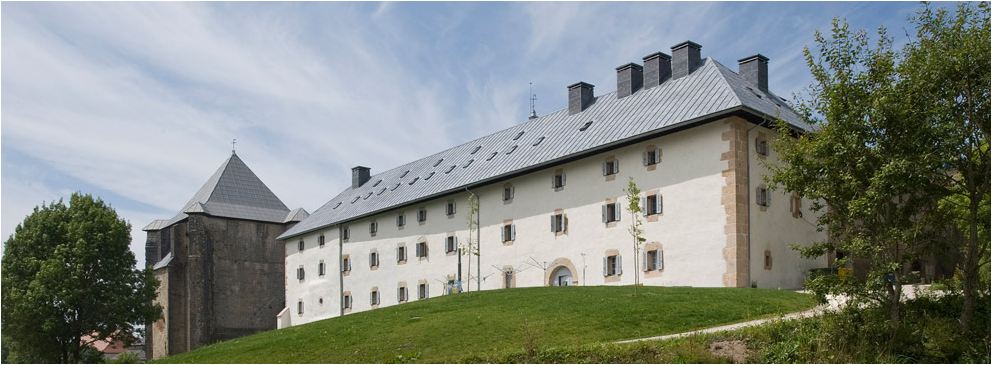
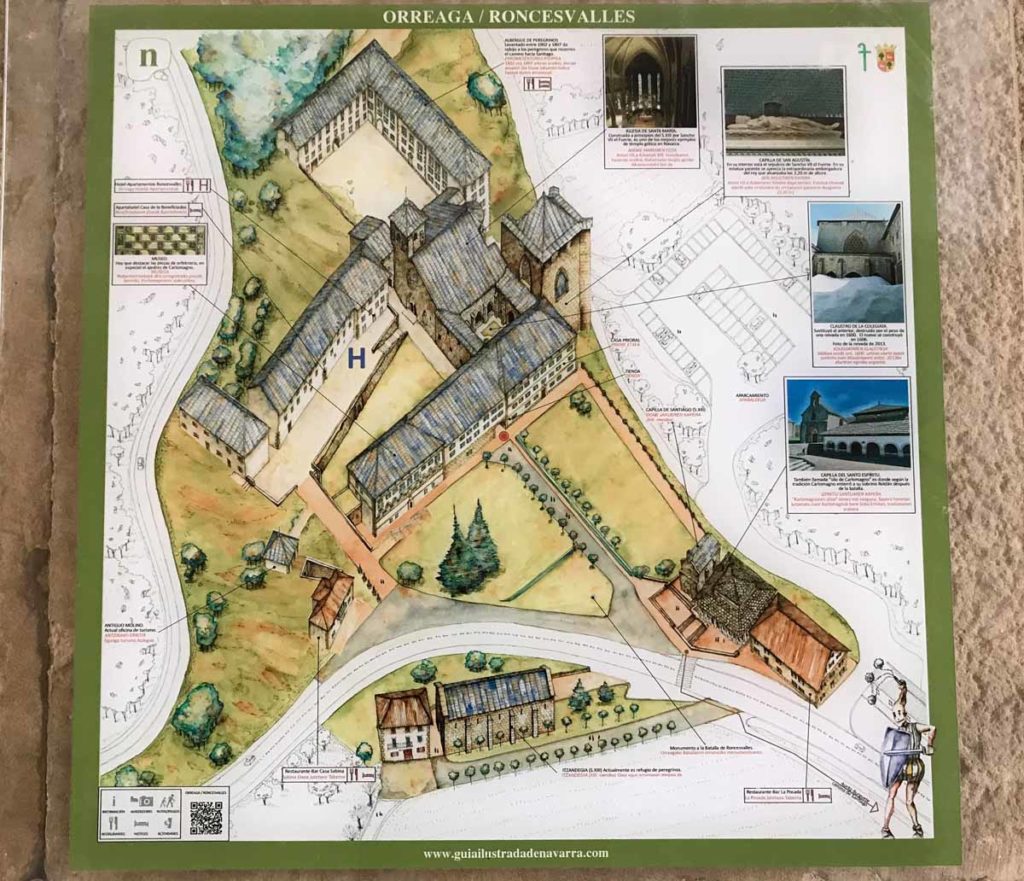
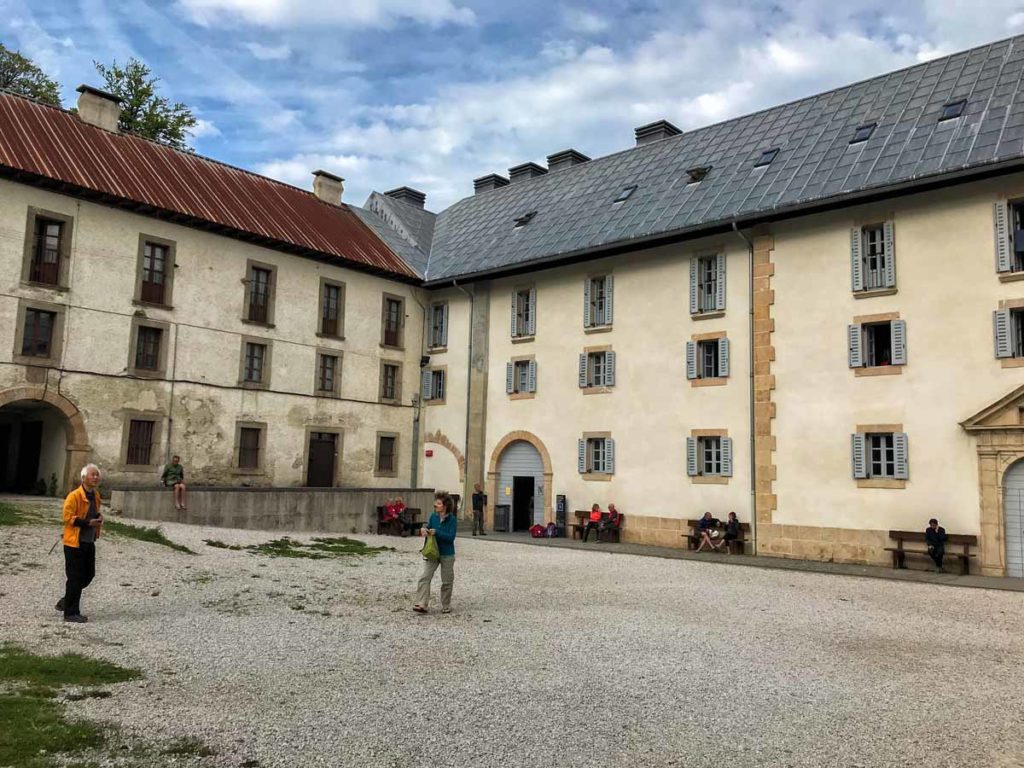
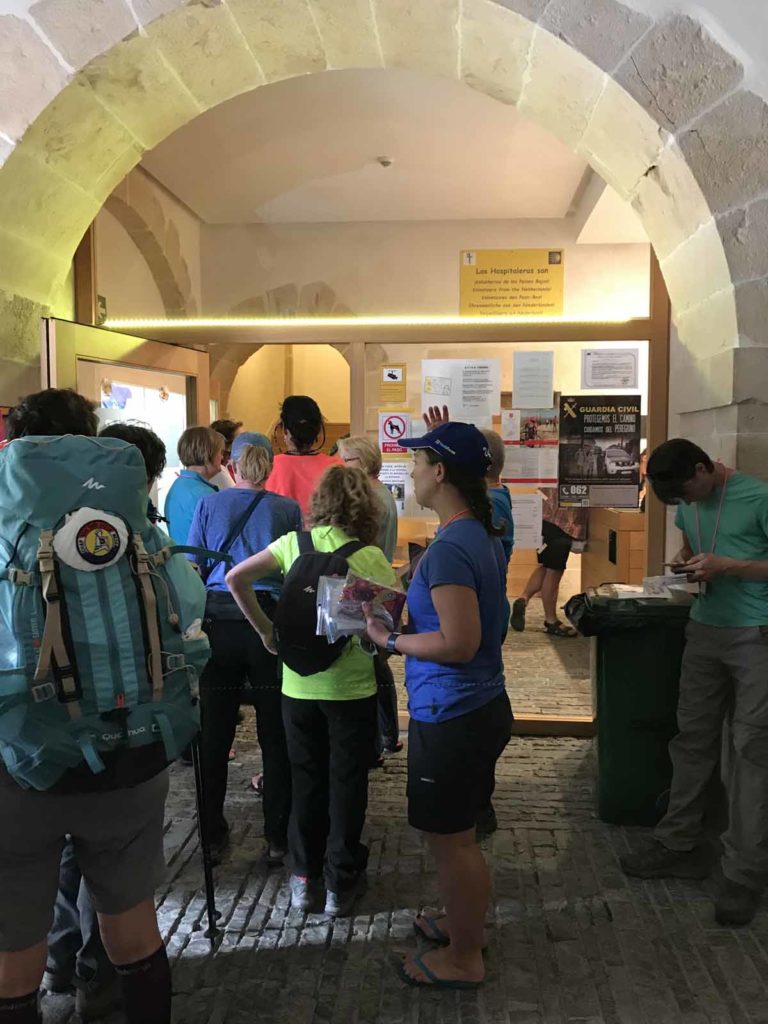
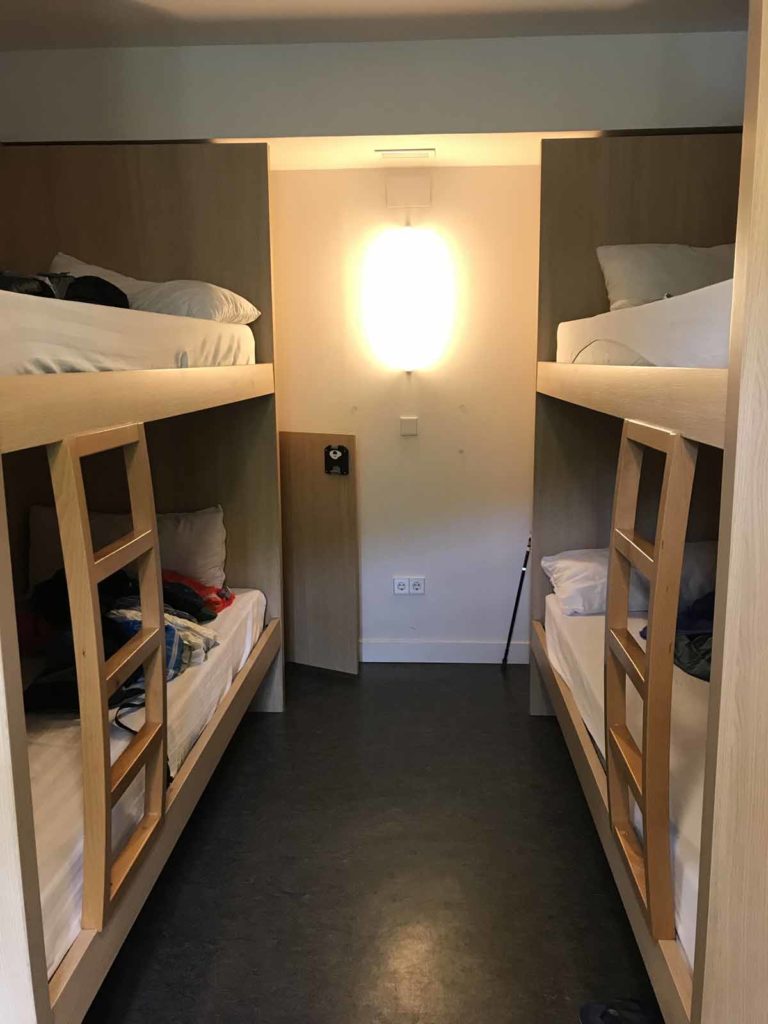
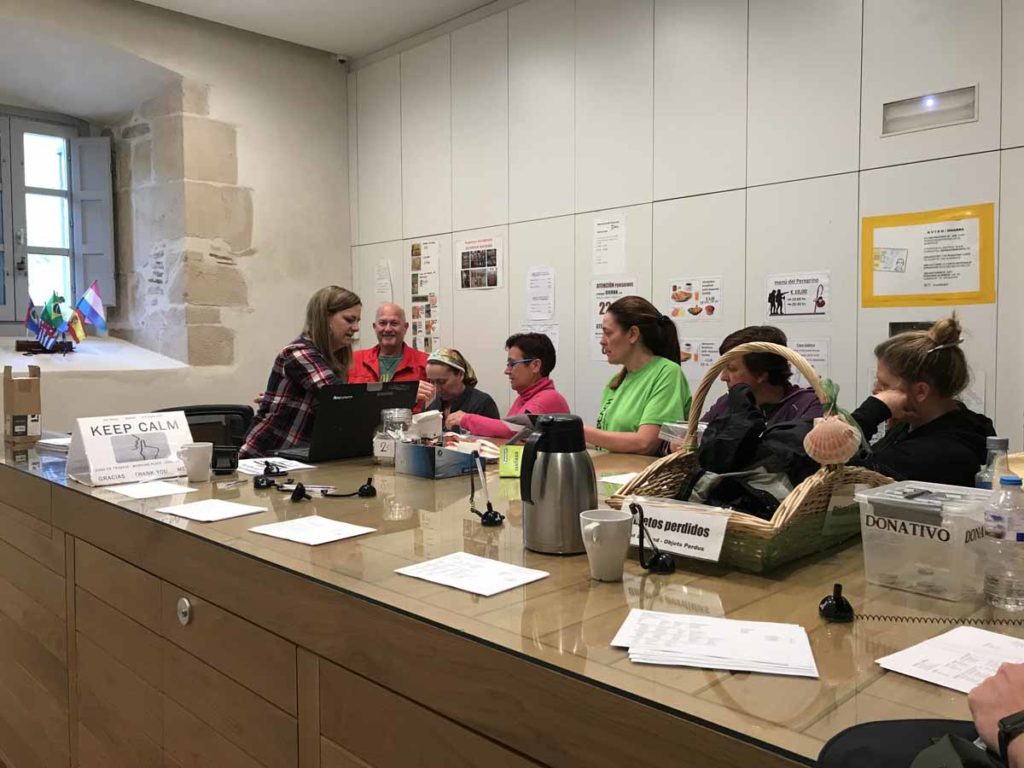
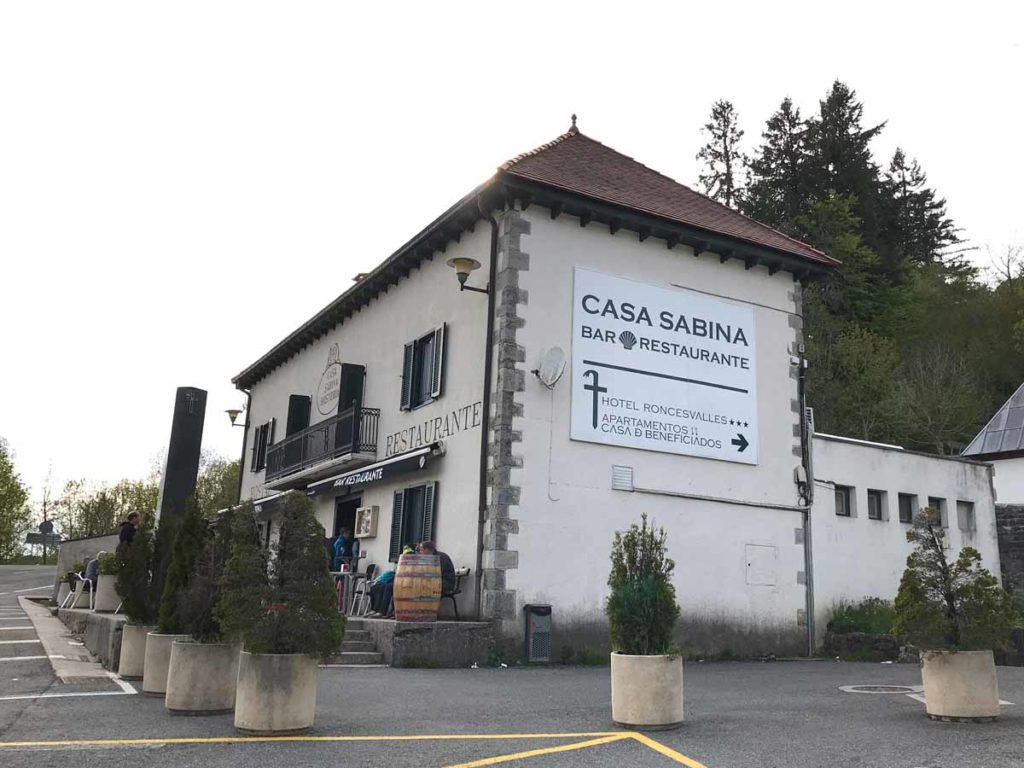
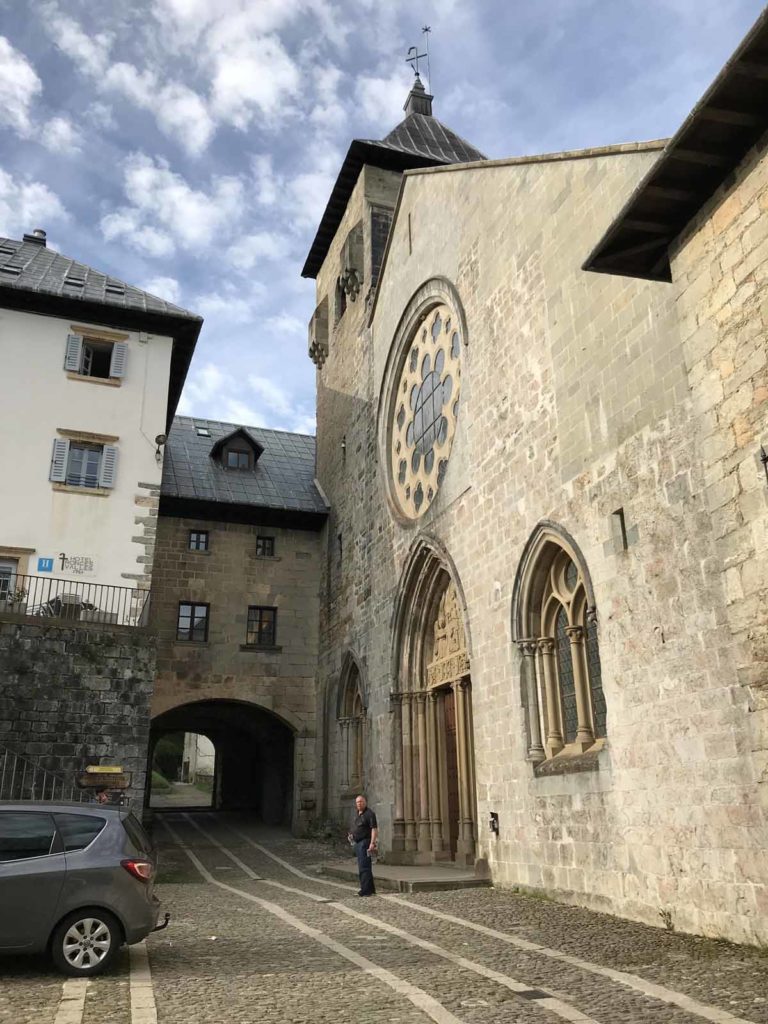
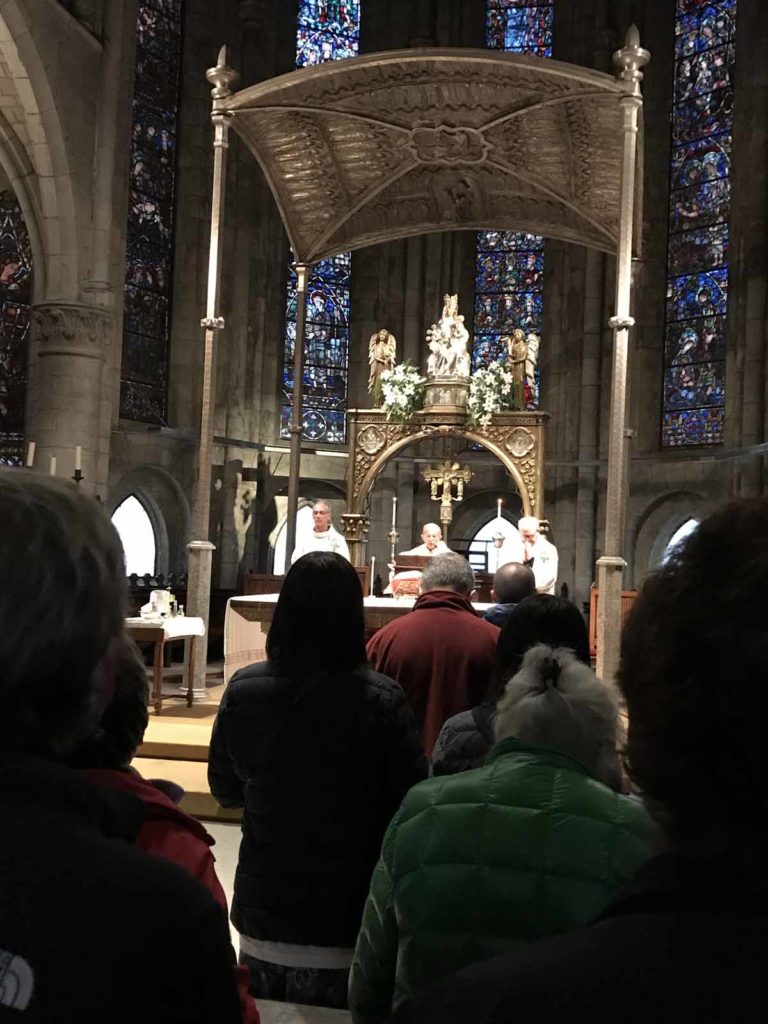
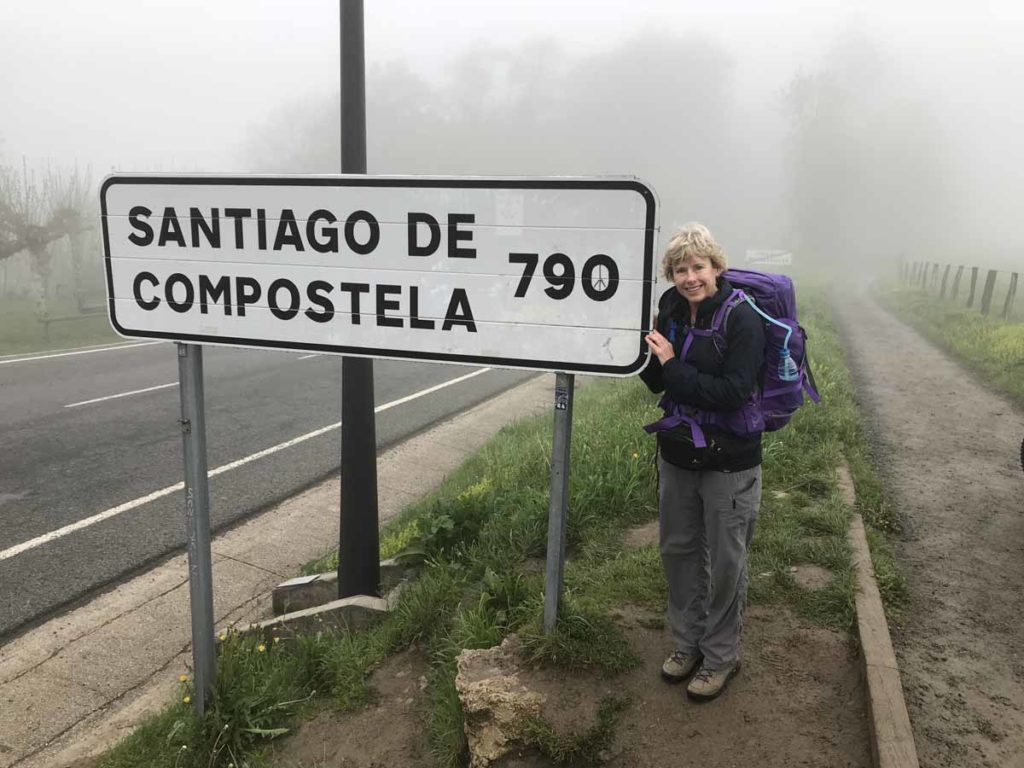
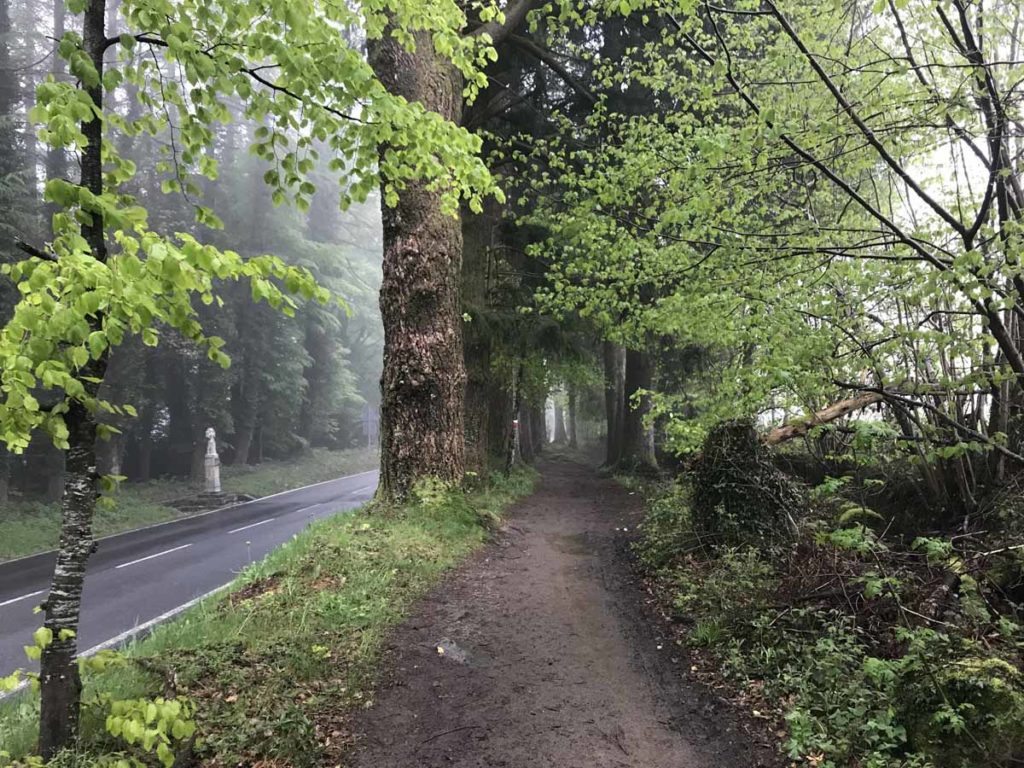
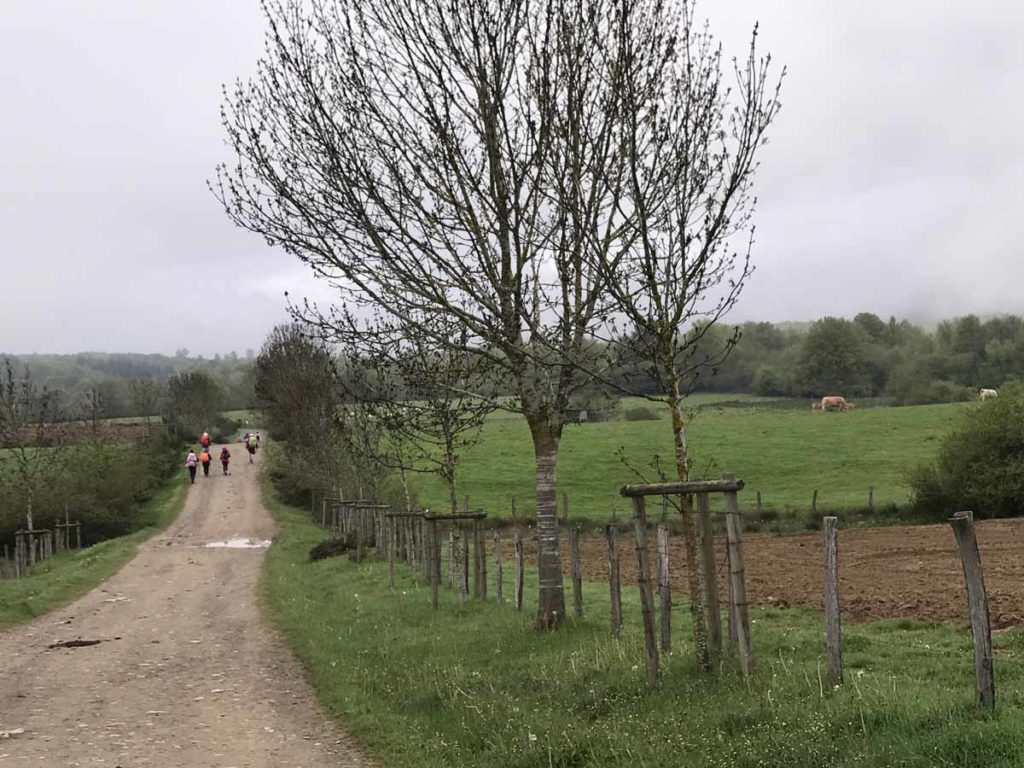
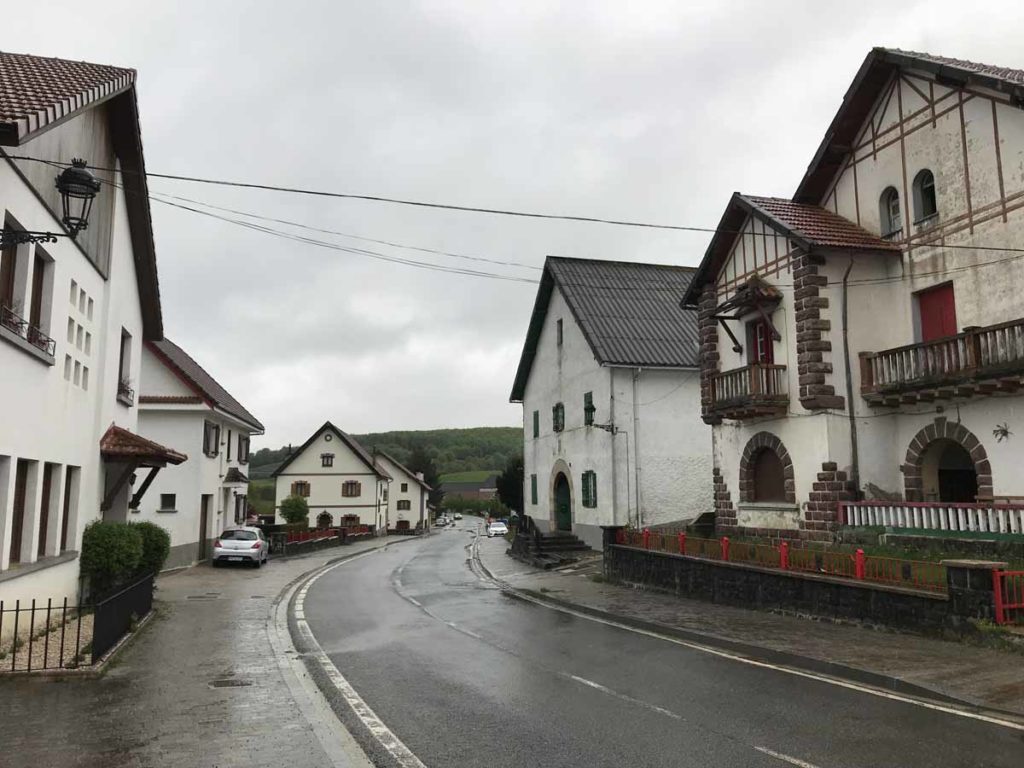
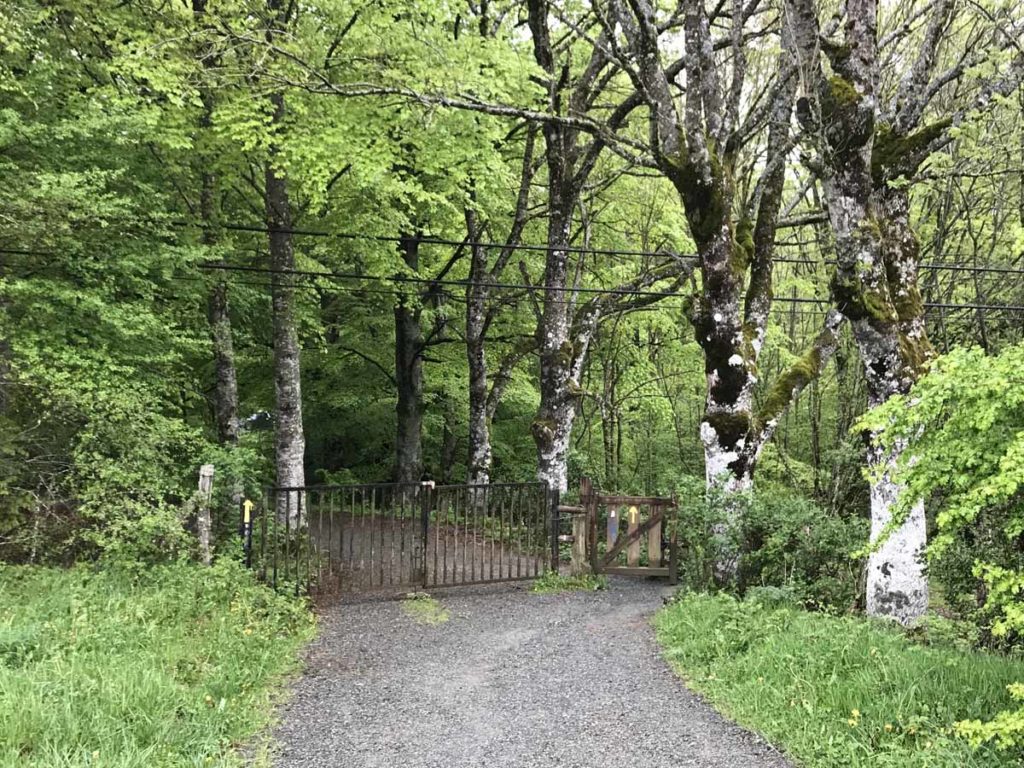
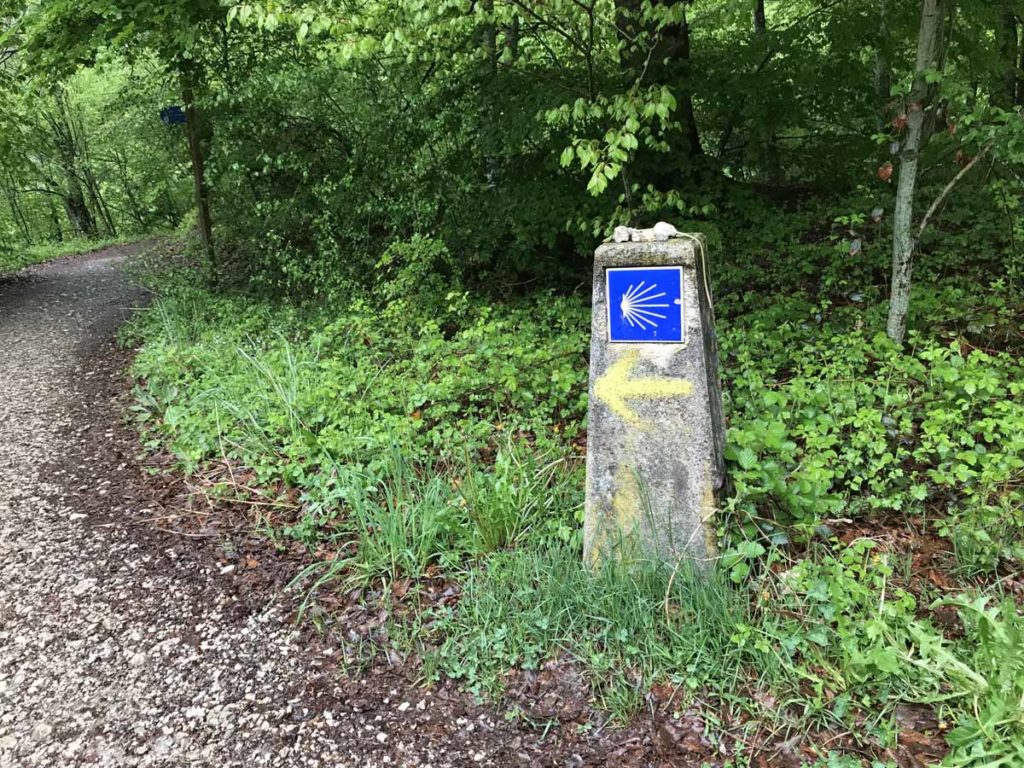
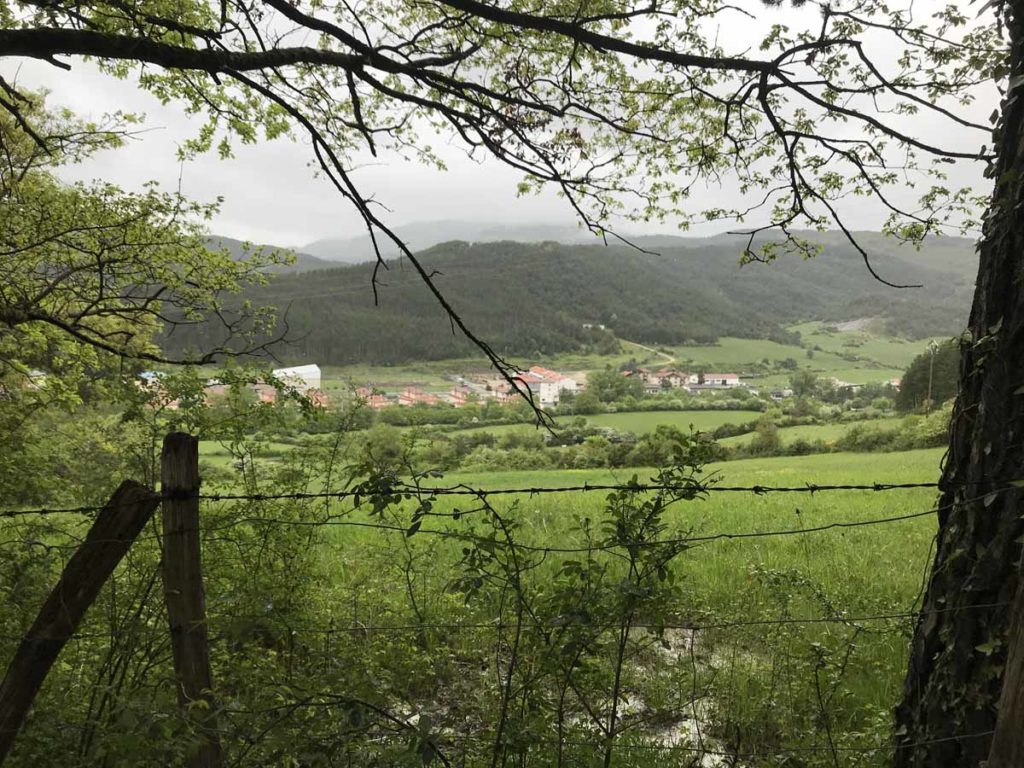
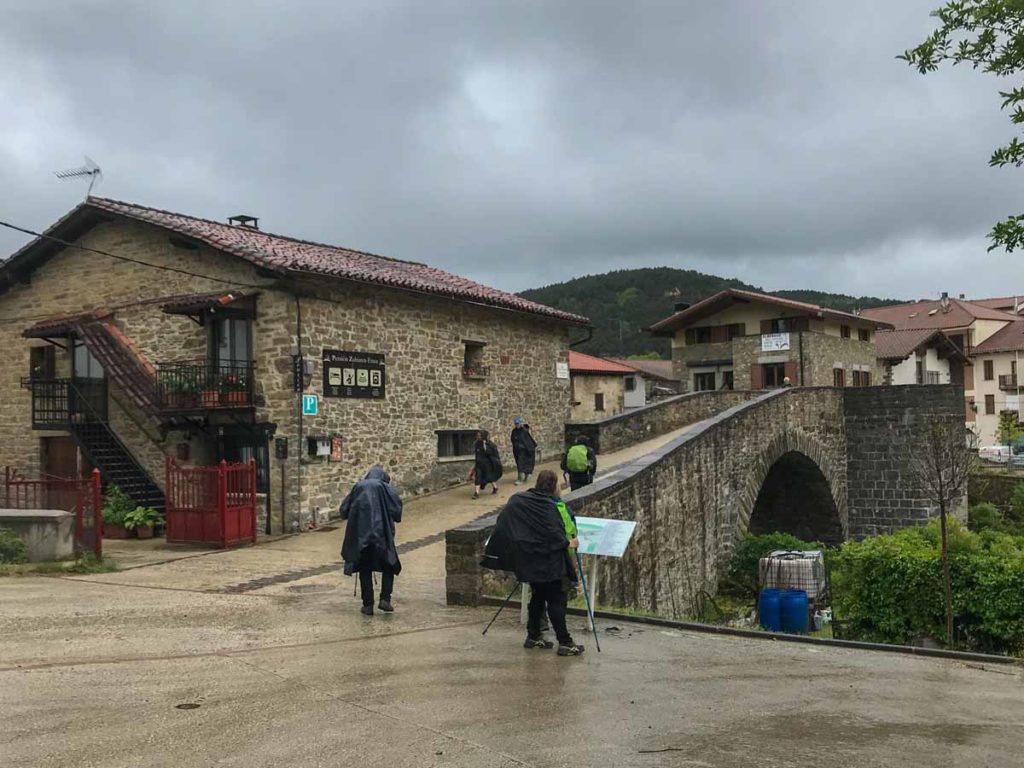
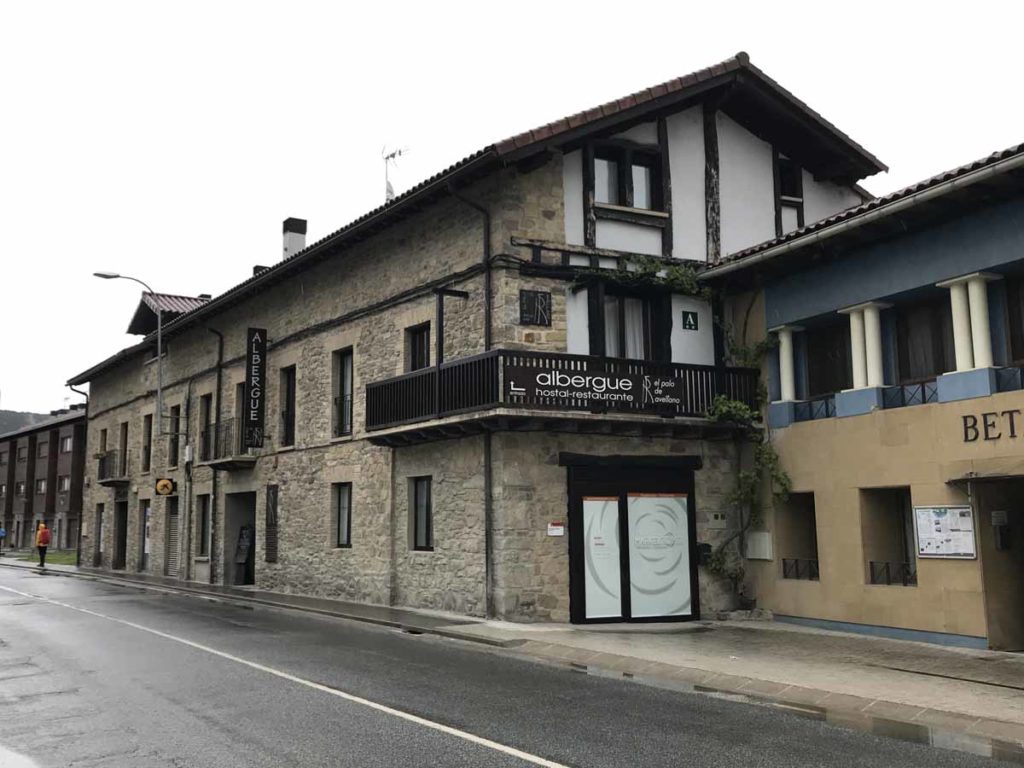
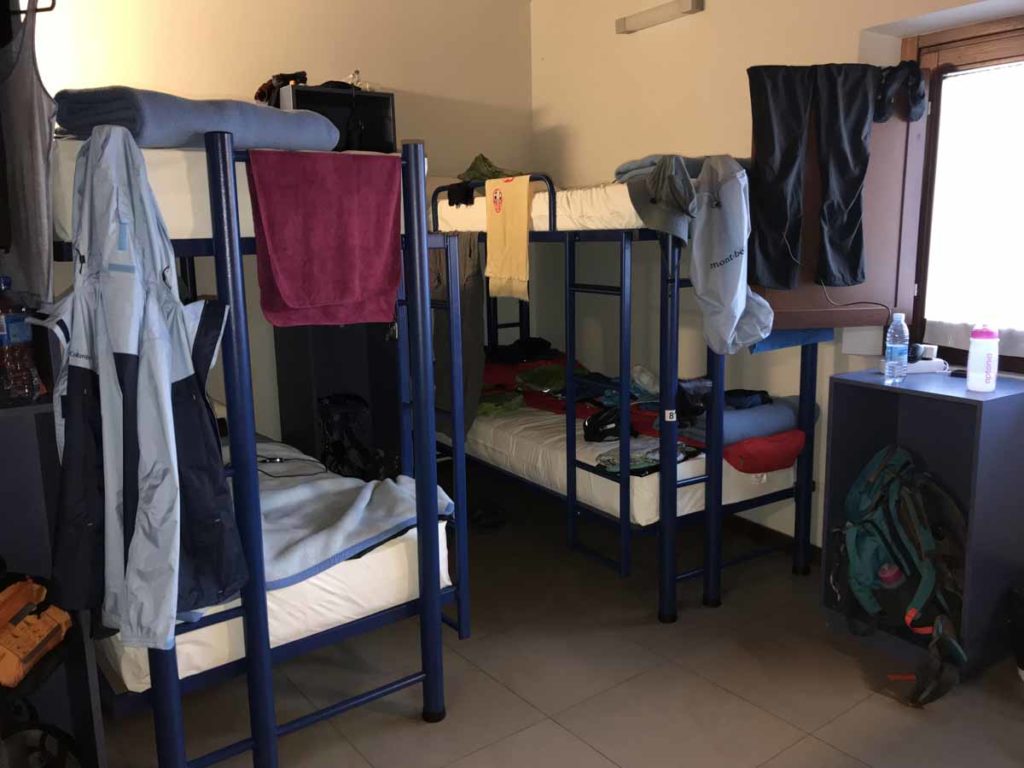
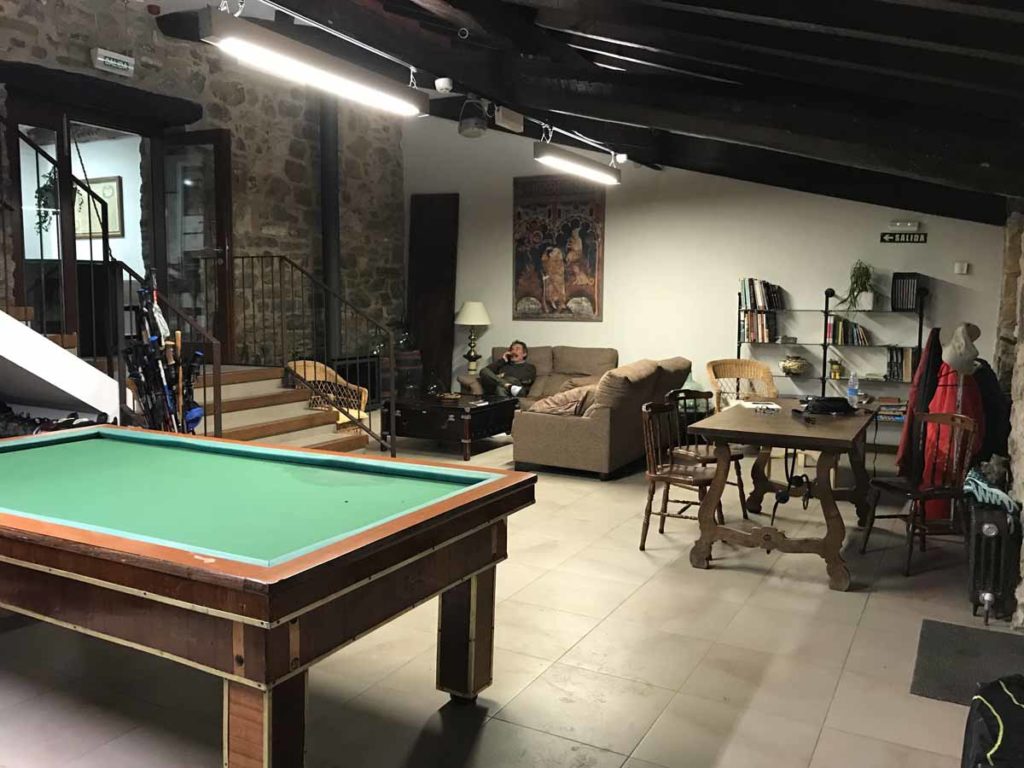
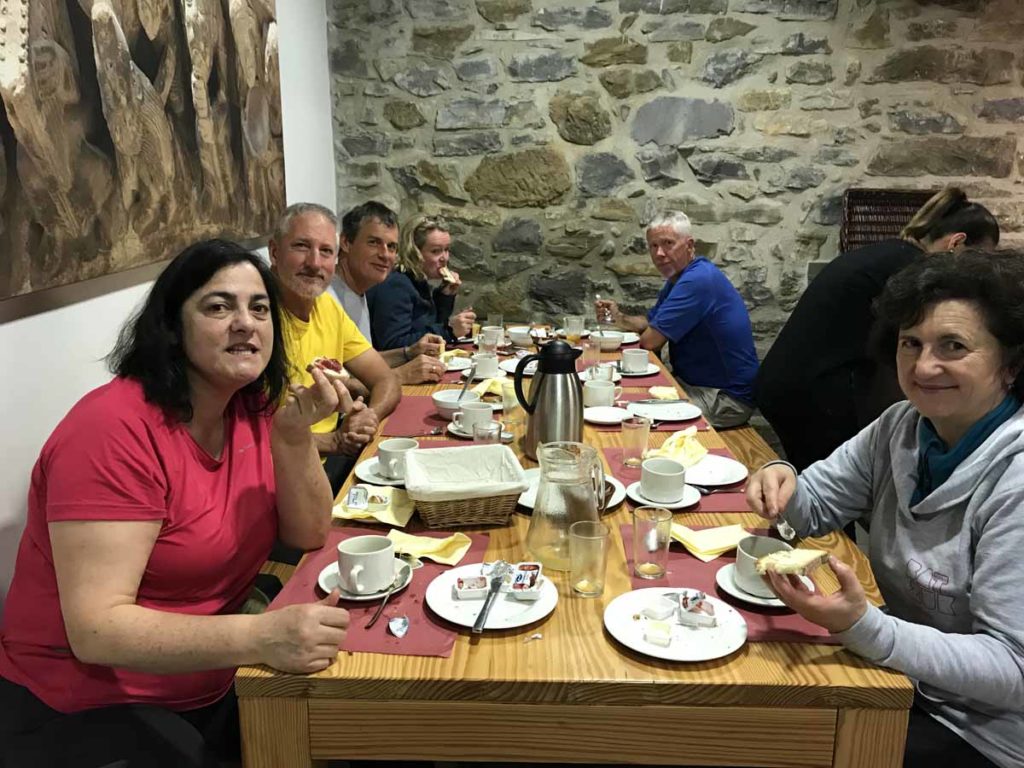
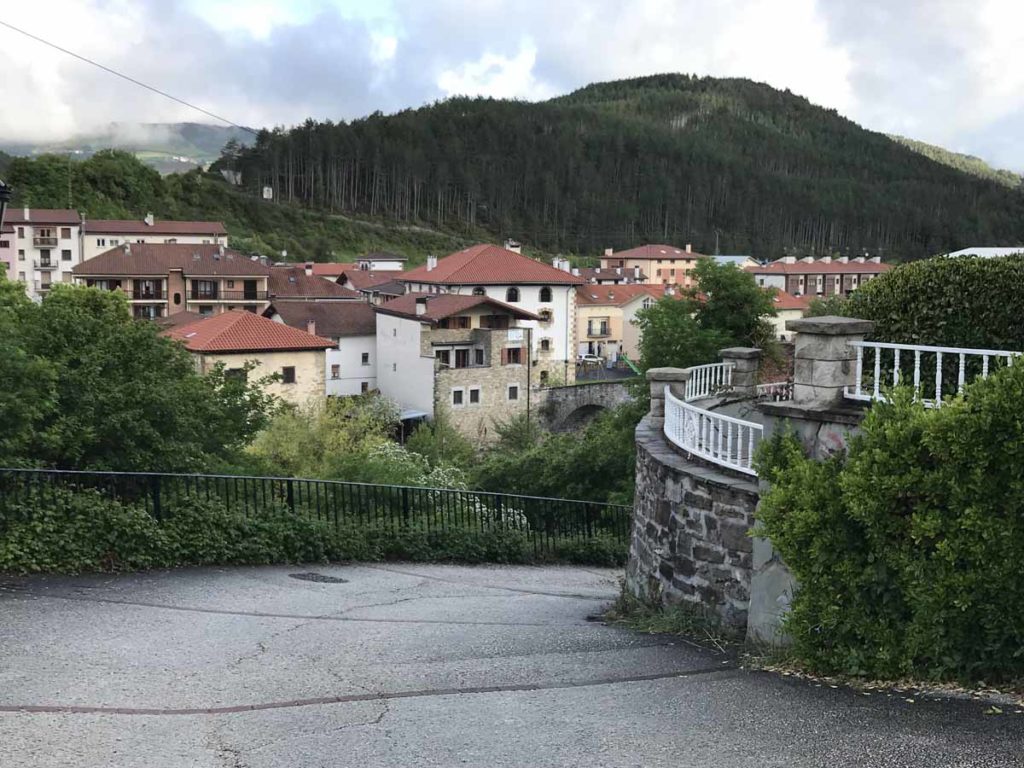
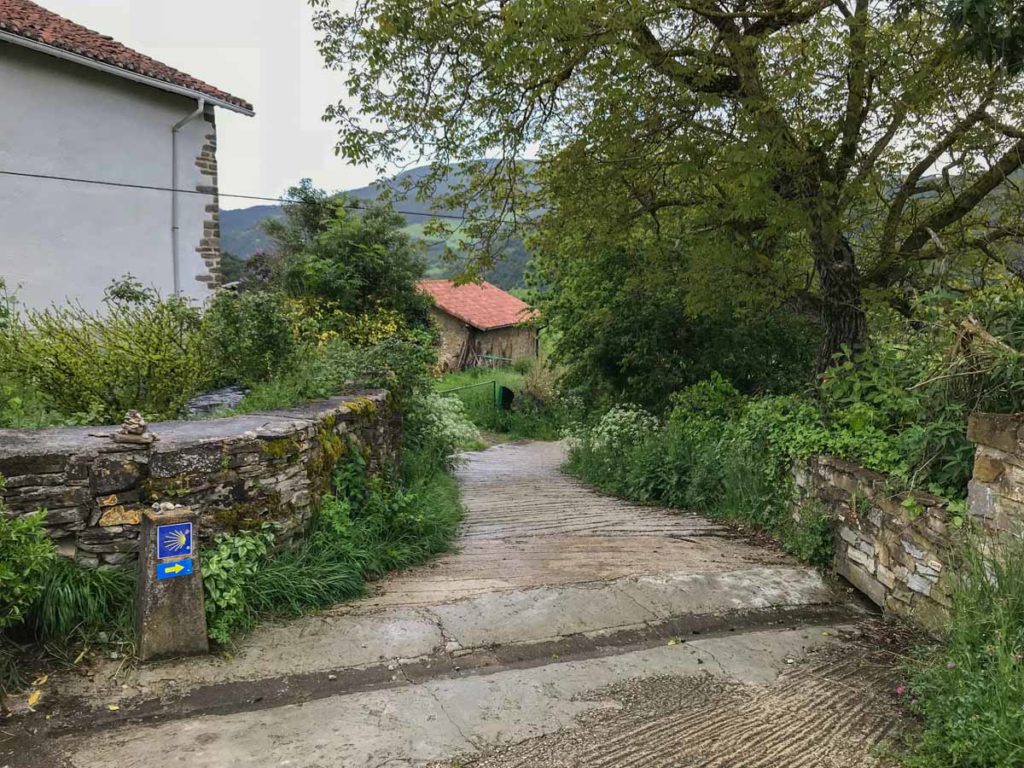
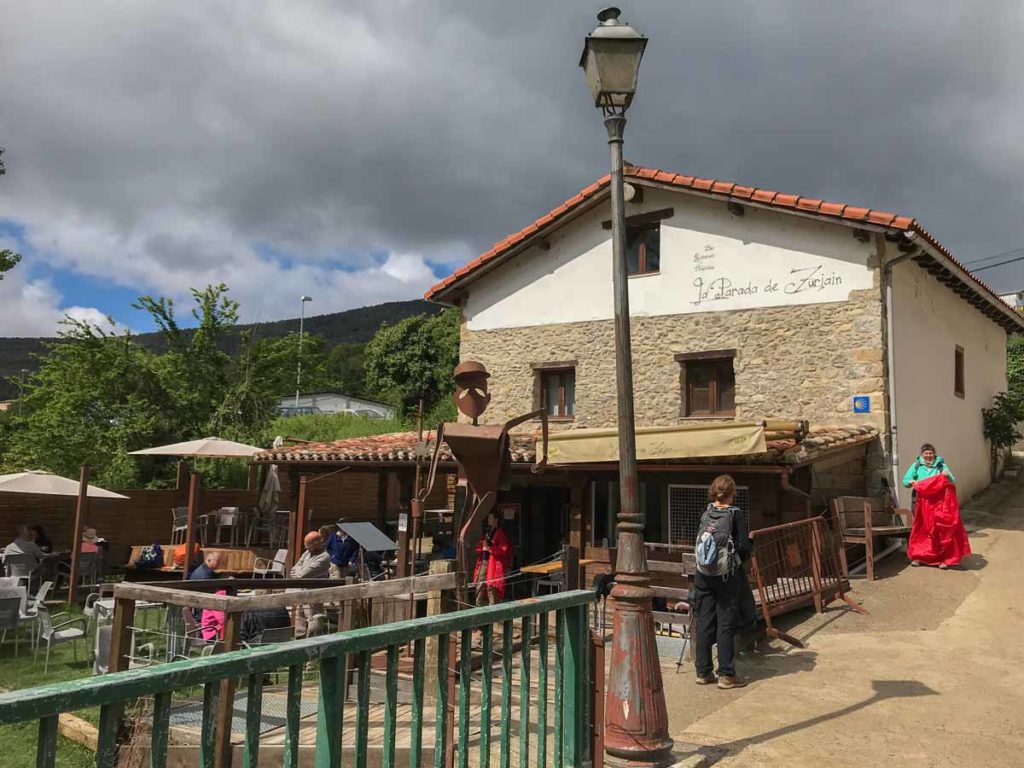
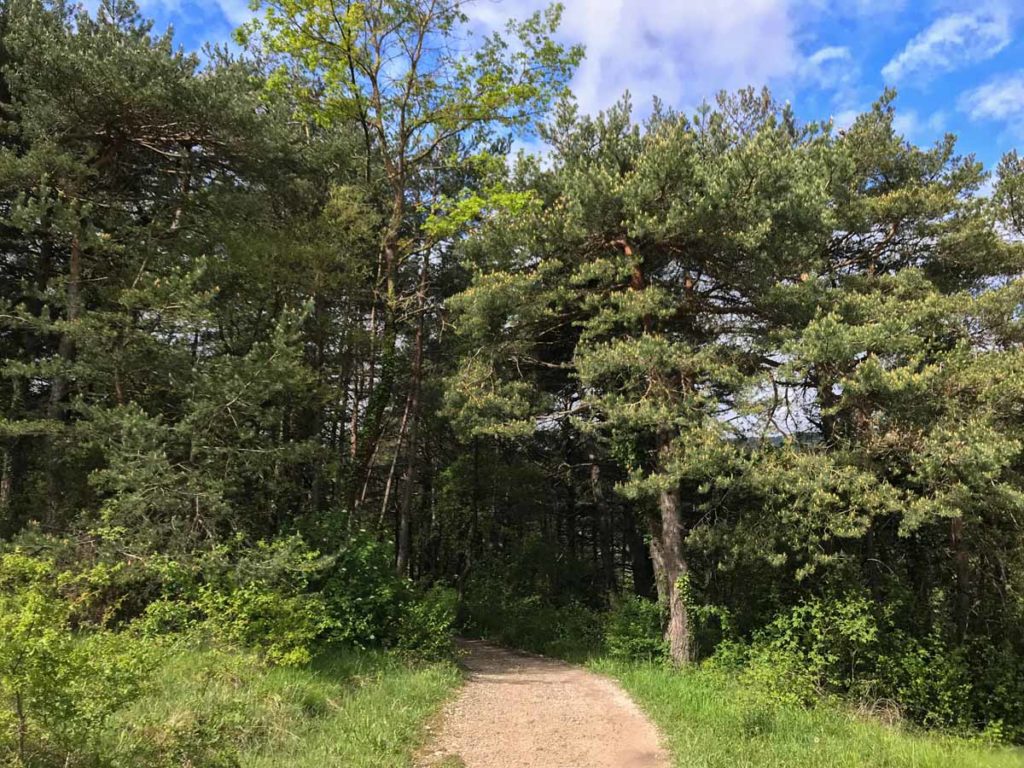
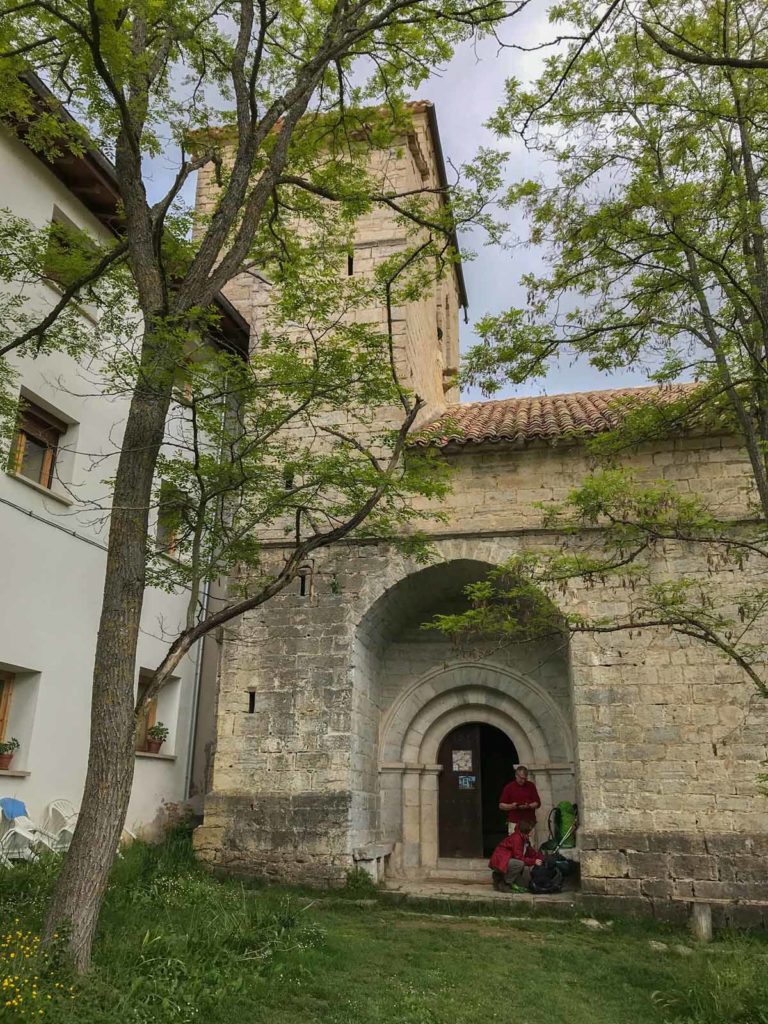
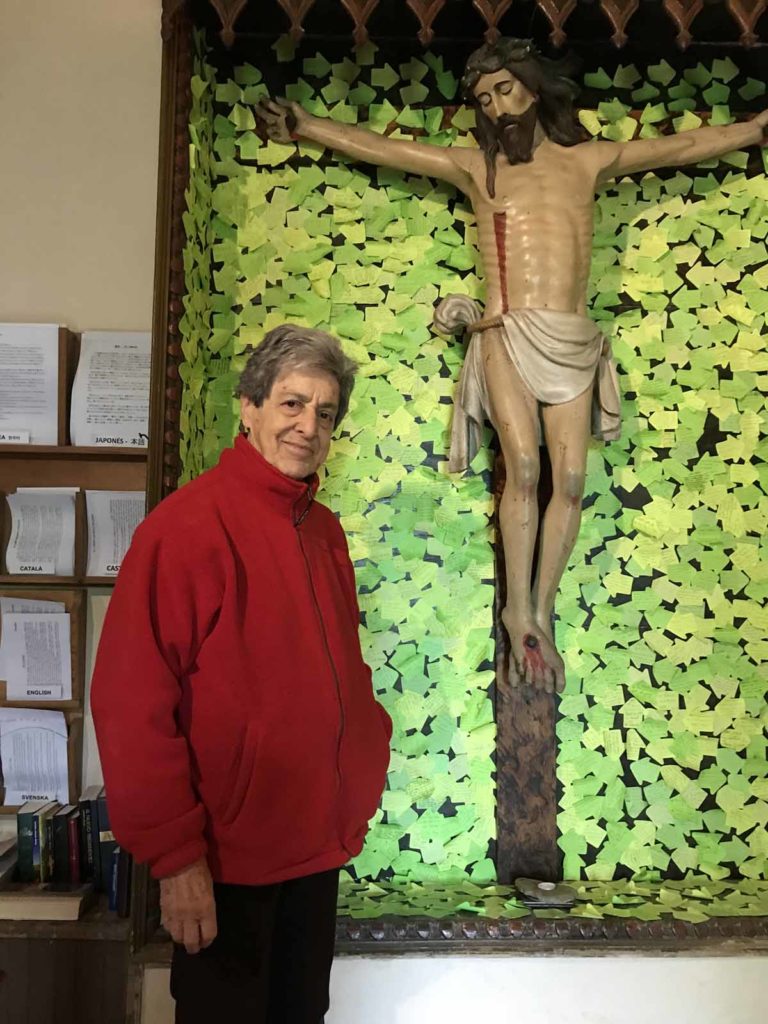
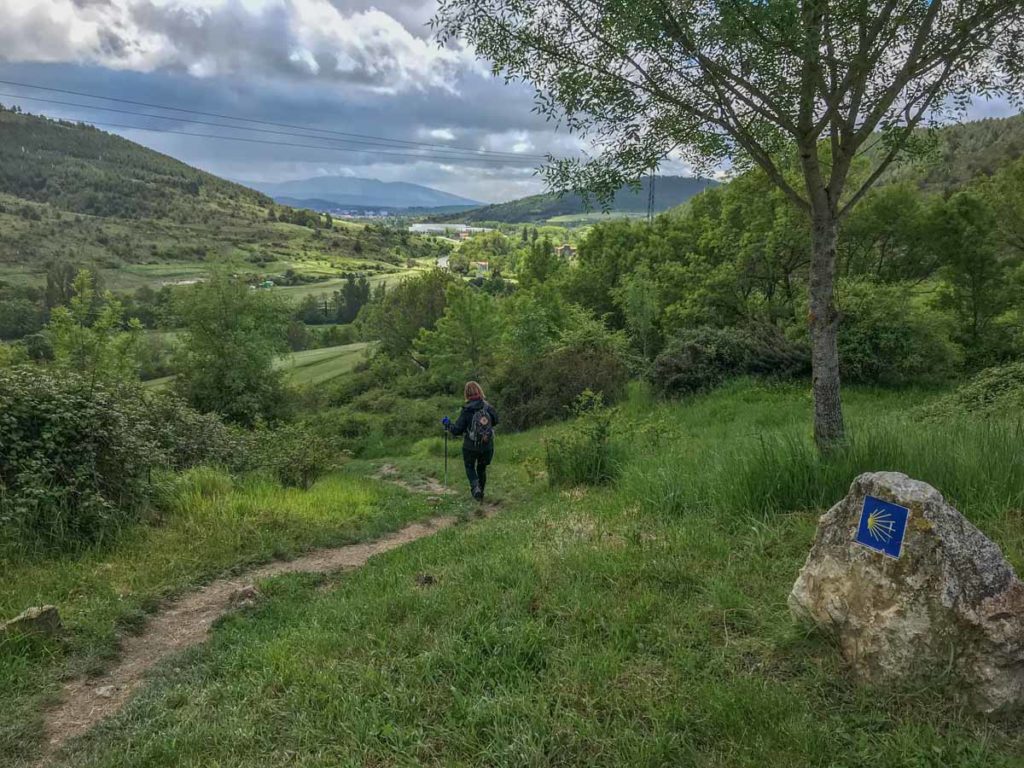
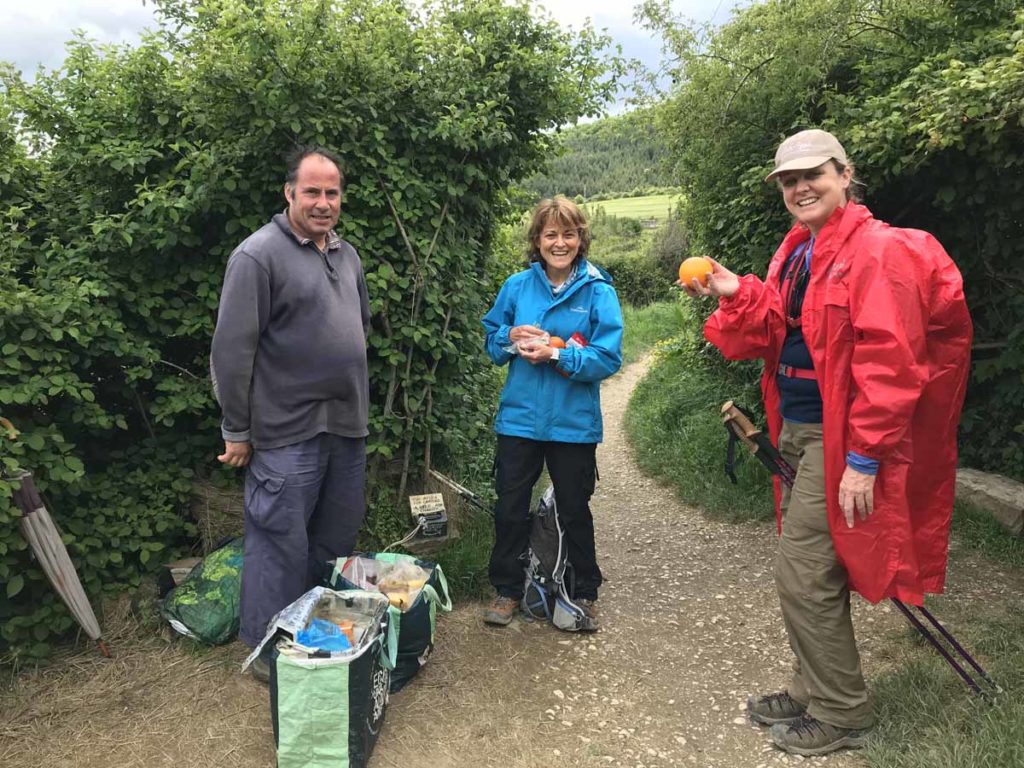
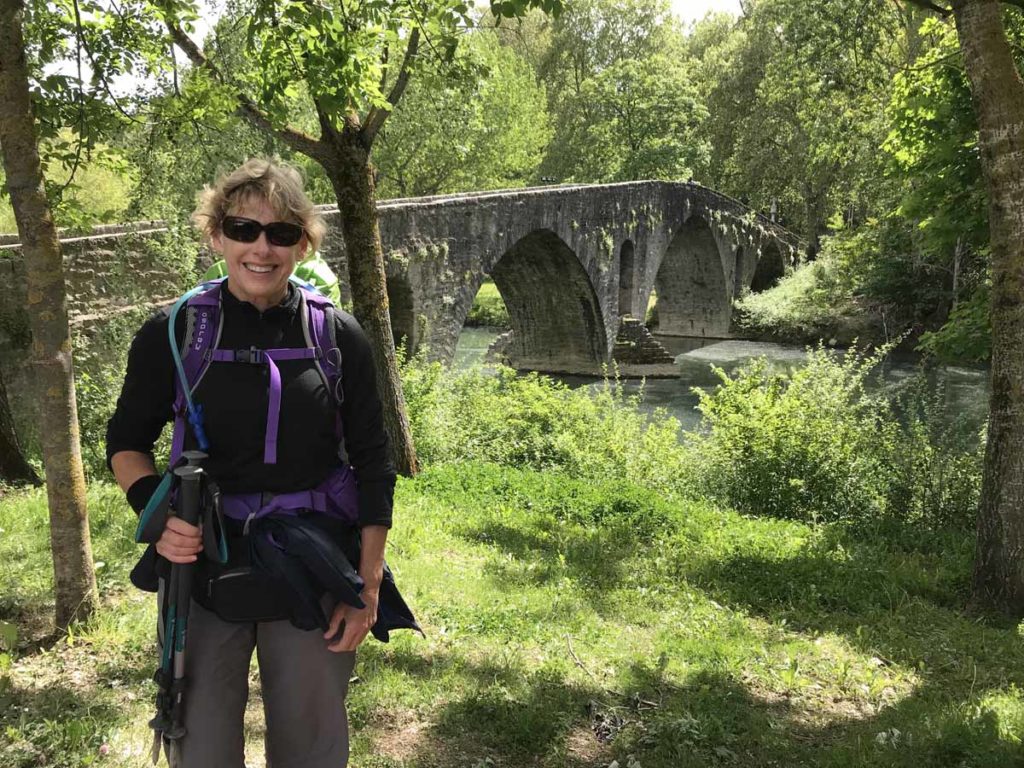
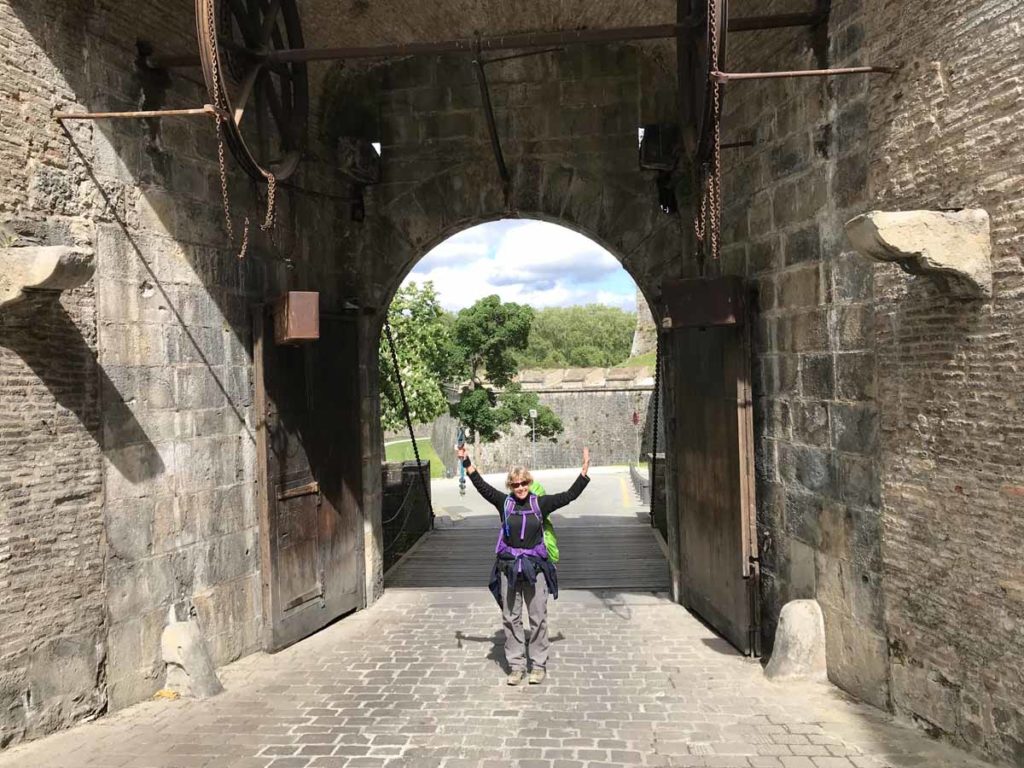
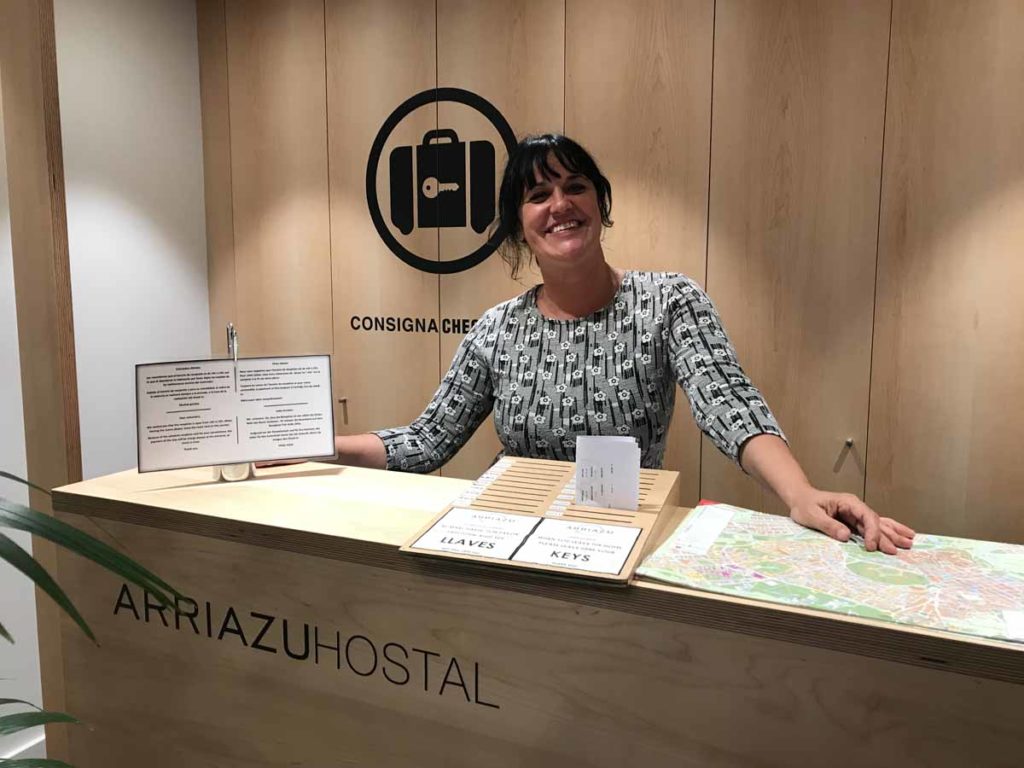
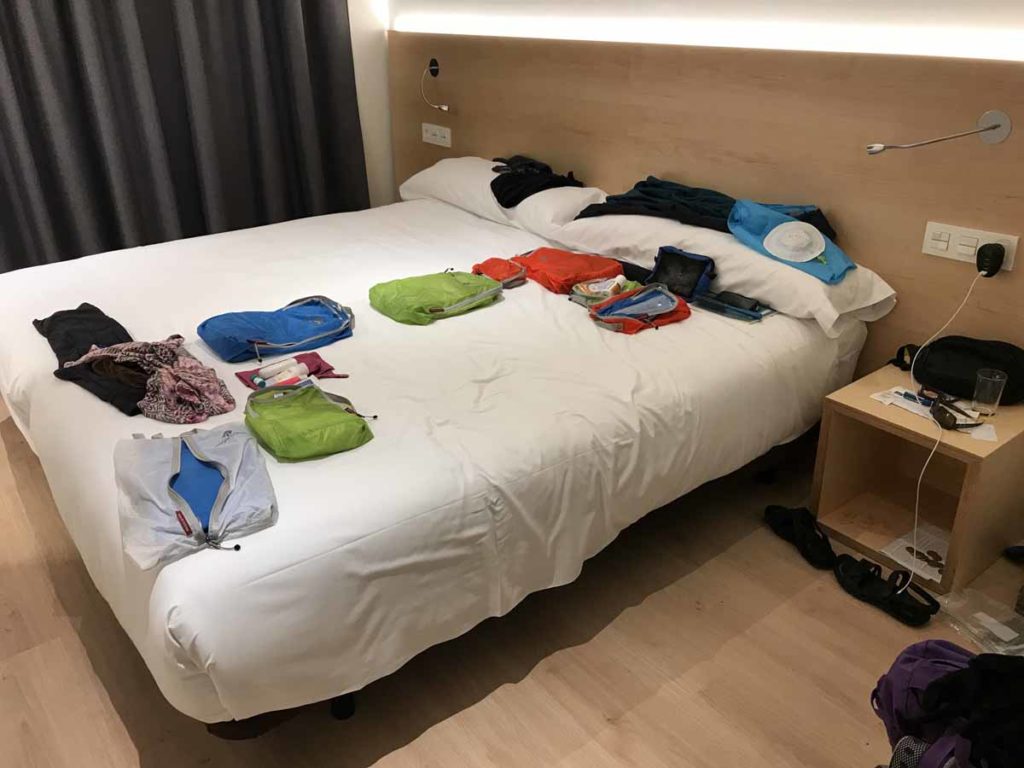
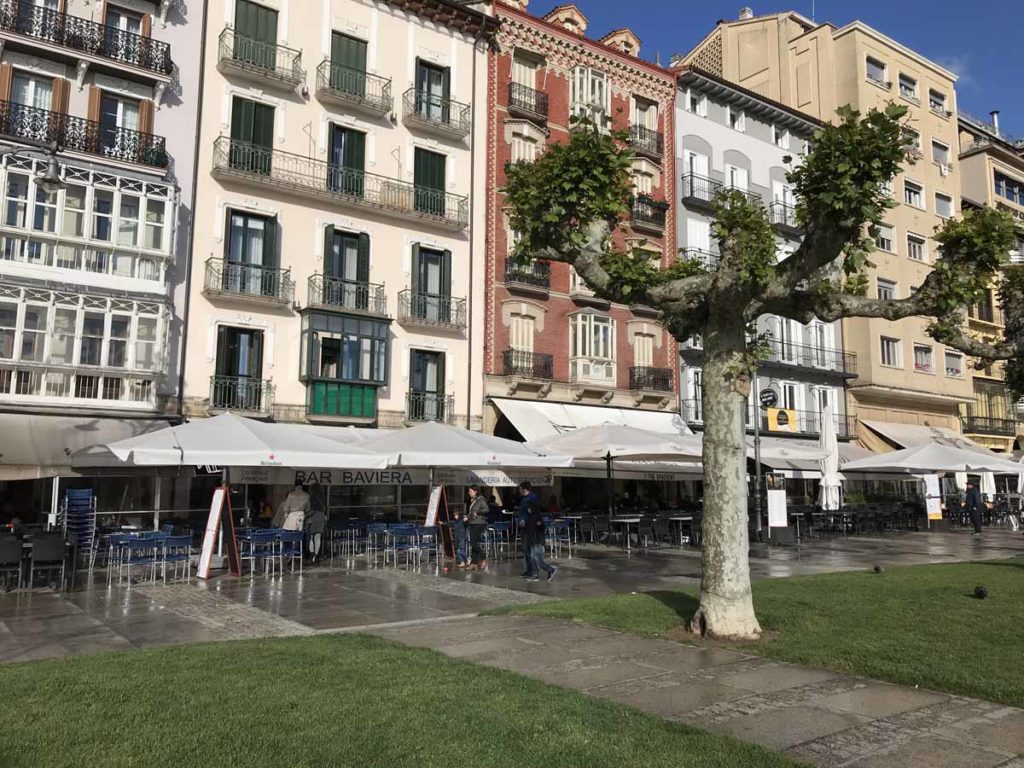

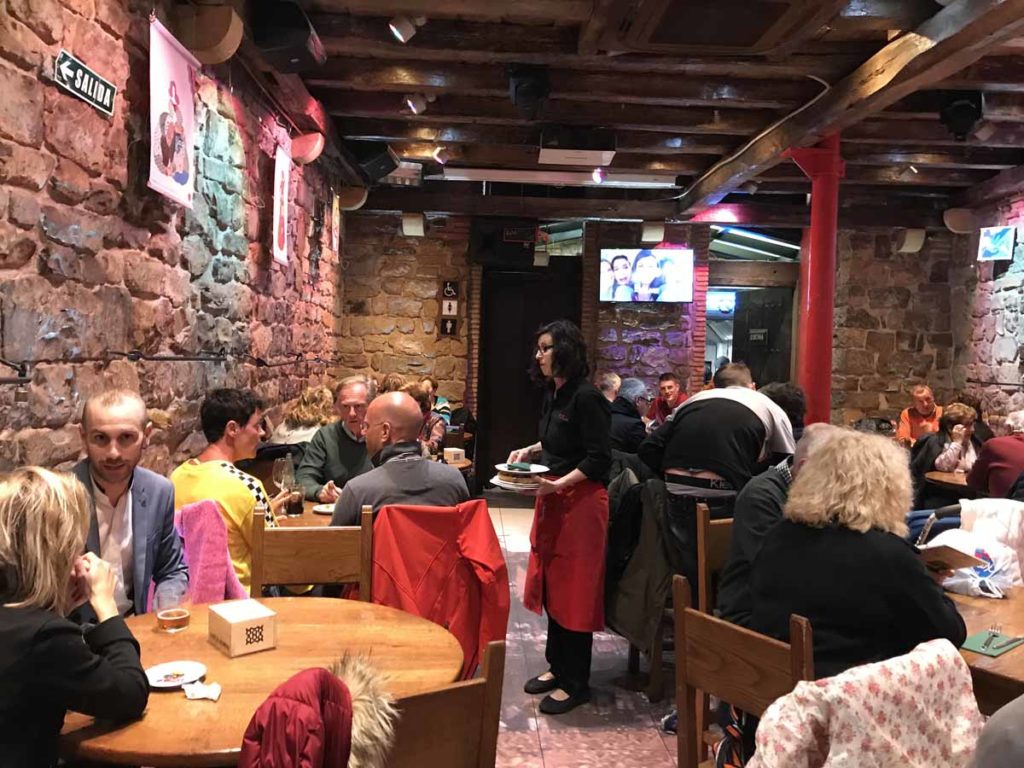

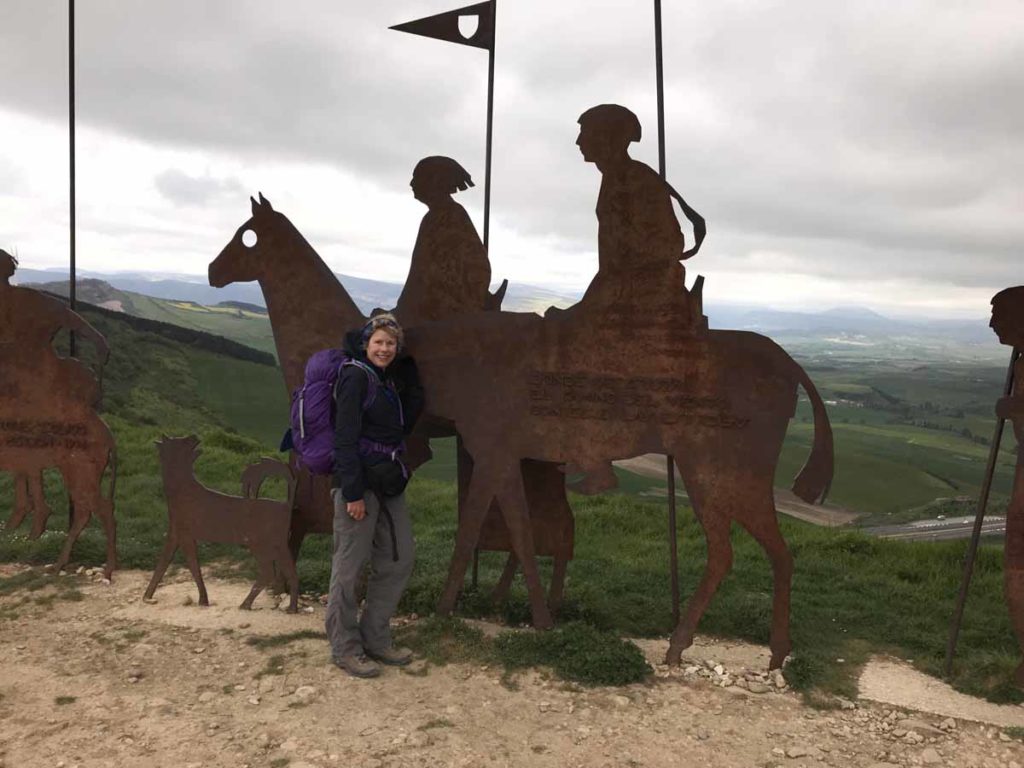
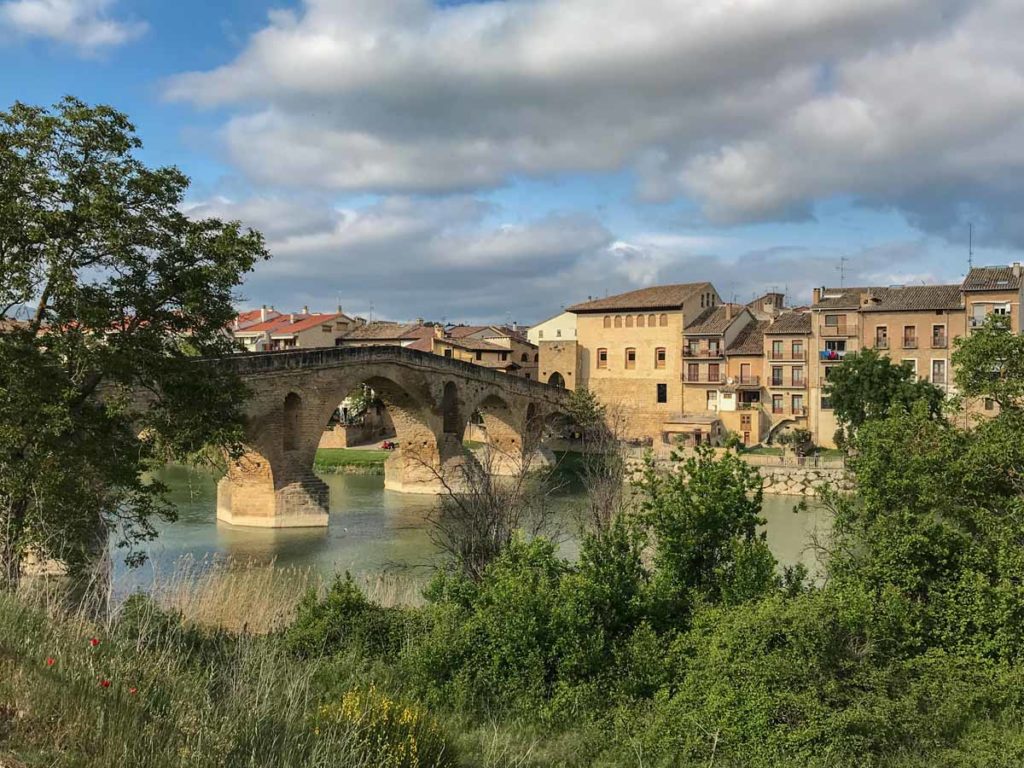
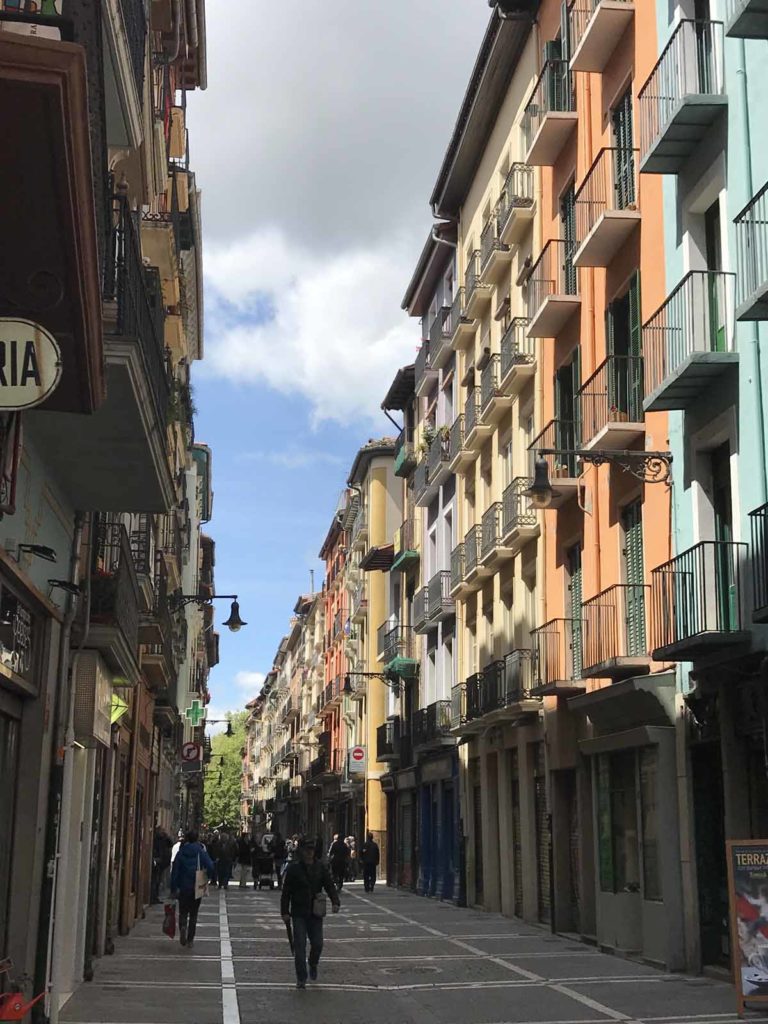
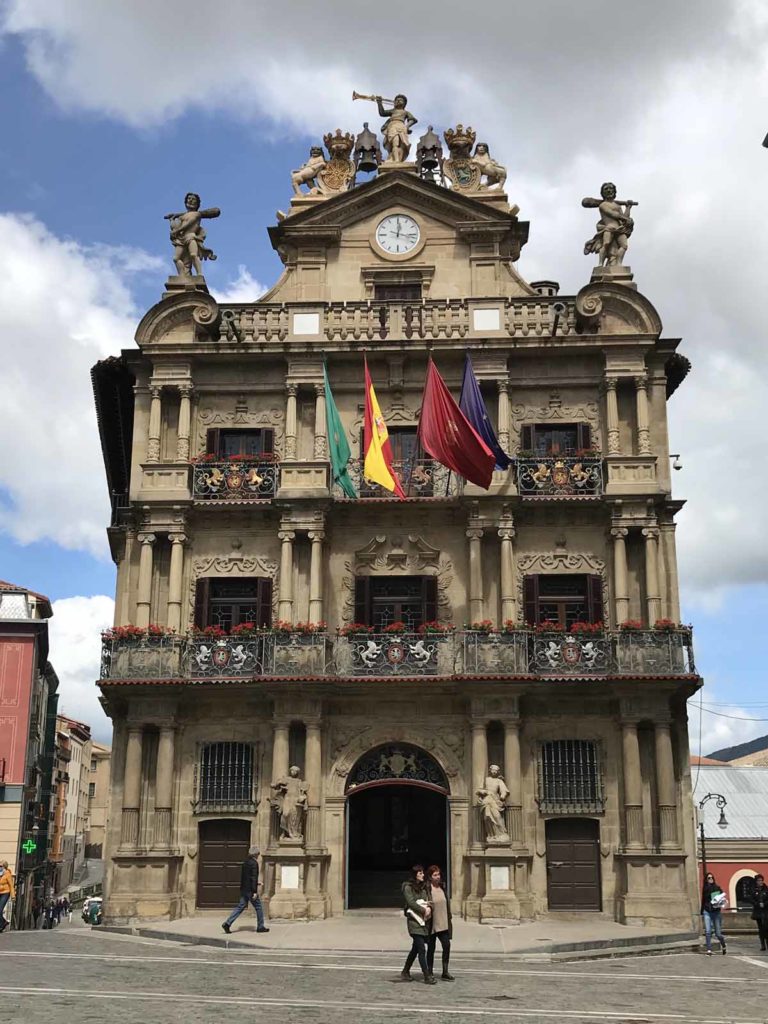
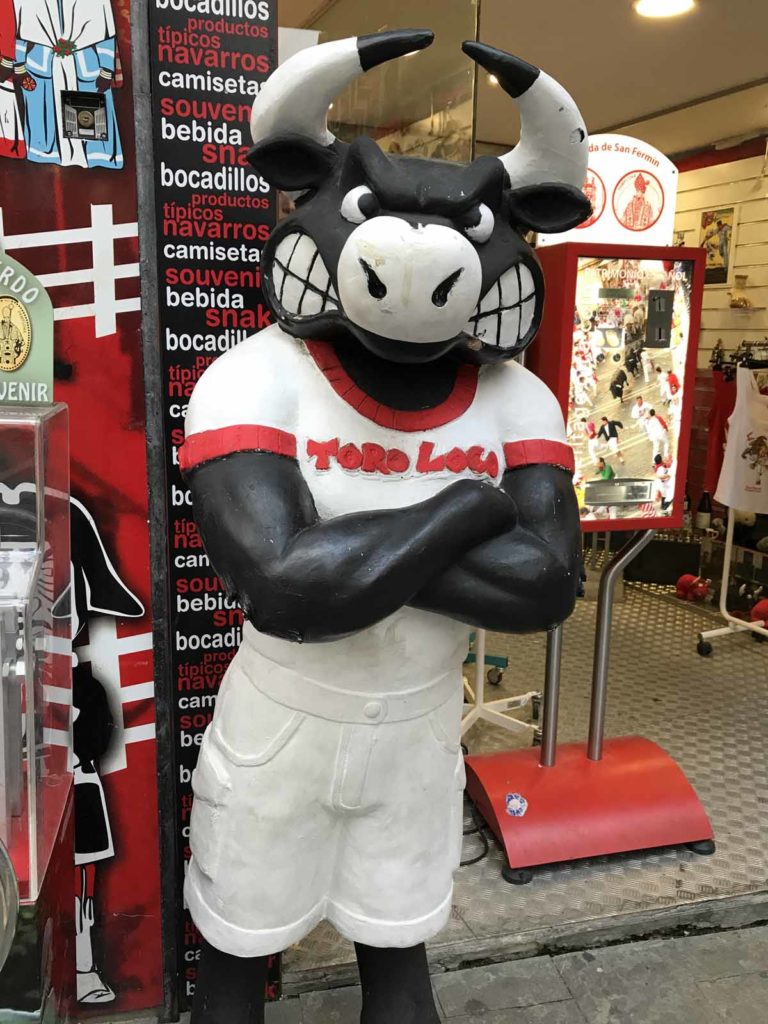
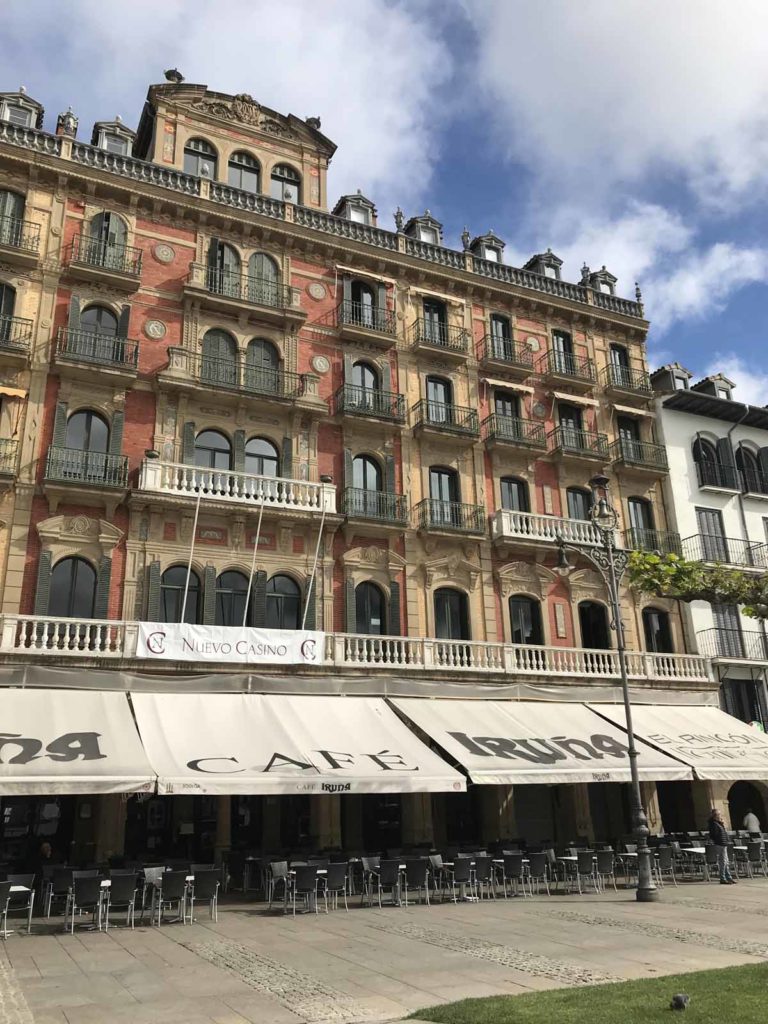
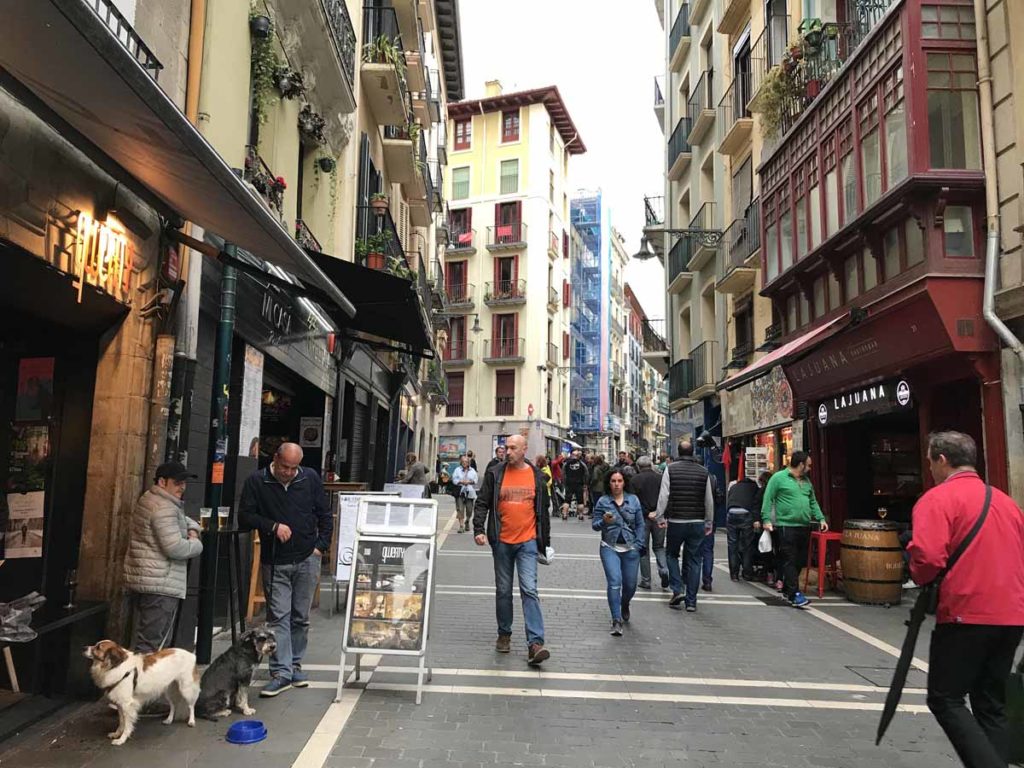
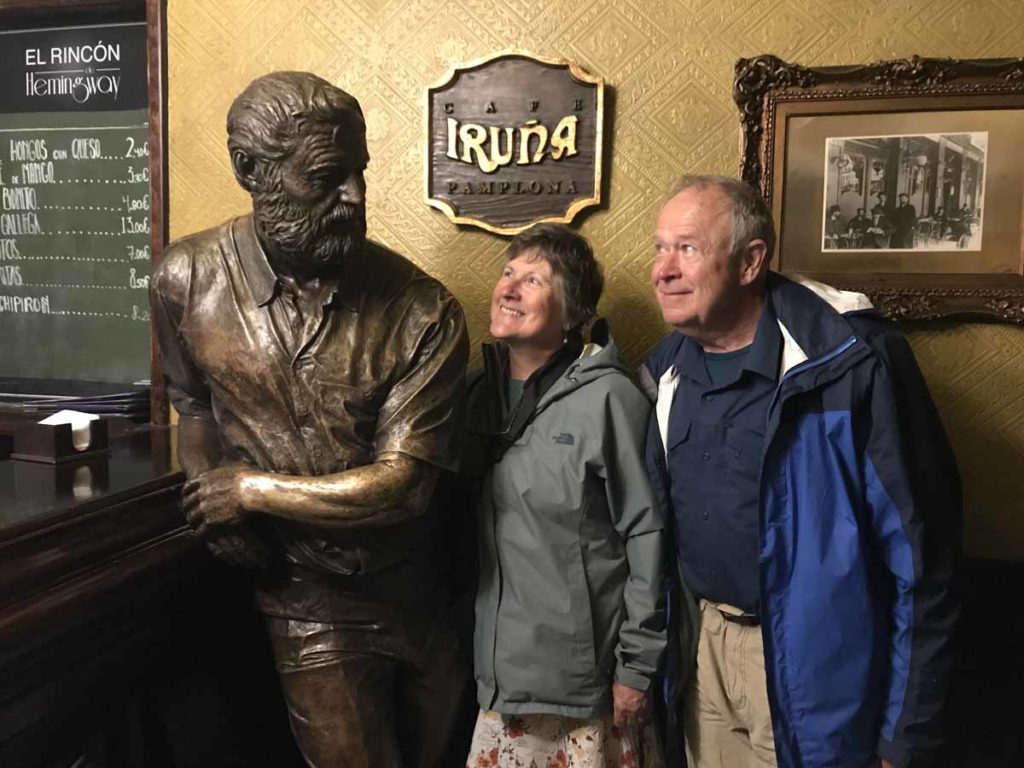
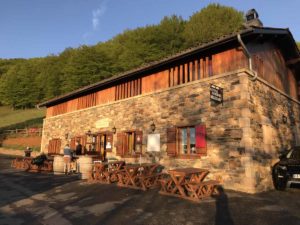
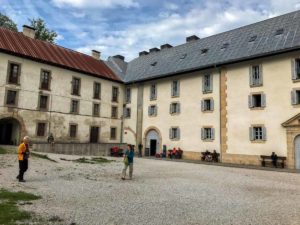

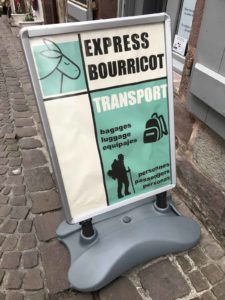
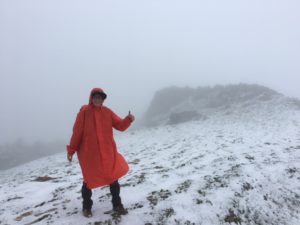
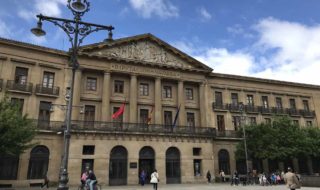
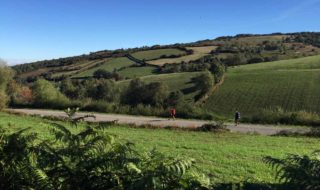
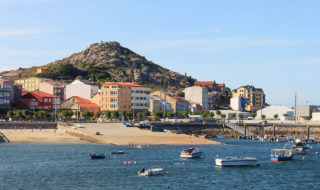
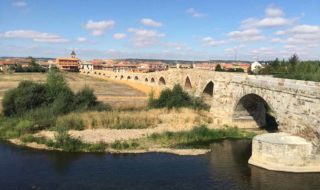
I want to take this trip and on TripAdvisor am reading many negative comments about Refuge Orisson; so many it makes me wonder even understanding that some people are never happy and the unhappy are most likely to post.
The management’s replies seem hostile and defensive.
I’m not completely turned off, but wonder if you can offer some alternatives that will also break up what looks like a serious climb.
One person landed at Refuge Kayola
https://refuge-orisson.com/en/accommodation/le-kayola-dortoir/
which looks pretty spartan.
AUBERGE BORDA gets good reviews some as late as 2021.
Can you offer some alternatives to split up the climb to Roncesvalles?
…
Hello Joel: I just read some of the comments about Refuge Orisson on TripAdvisor that popped up at the top and they were mostly from 2015. I did this leg of the Camino in May 2018 and had a great experience at Refuge Orisson. Yes, the accommodations are simple, but it’s a pilgrim hostel so it’s not meant to be luxurious. The owner Jean Jacques was gracious and like many hostel owners, serving pilgrims is a labor of love! And, truly, many of my closest pilgrim friends came from people I met the first two days staying at the two hostels (in Orisson and St. Jean Pied de Port).
I am delighted to hear that another good pilgrim lodging has opened up along the route – Auberge Borda – which sounds nice (and has 12 beds). This is very needed because Refuge Orisson & Gite Kayola (same owner) can only hold a max of 40 pilgrims . I am a big proponent of splitting up the walk from St. Jean to Roncesvalles into two days, but lodging options have been limited in the past. The people staying at Gite Kayola need to walk a distance up the road to Refuge Orisson for their meals, so it’s really meant as an overflow lodging – and it may still be closed because of COVID impacts (less pilgrims, etc).
Also, I would be more skeptical of TripAdvisor for reviews of Camino pilgrim lodging. I can really understand the Orisson owner’s frustration in replying to that first bad review from a guest who clearly didn’t understand that Camino pilgrim hostels are not luxury hotels, especially ones high up on a mountain away from the city. There’s lots of whiny, haters on the Internet & on sites like TripAdvisor. I looked on the Wise Pilgrim website which features pilgrim lodging (and is run by a pilgrim) and the few reviews were better.
I have every confidence you would have a good experience at either Refuge Orisson or Auberge Borda, as long as you understand that walking the Camino de Santiago is about the overall experience with its joys and challenges and that pilgrim lodging is designed to meet our basic needs for a reasonable cost. Also, I & my fellow pilgrims in 2018 used Booking.com a lot along the way for booking many of our hostels for the next day (for the private albergues in Spain that did take reservations) so I would look at those reviews also, but always with a discerning eye. Hope this helps!